- New Arrivals
- Best Sellers
- Murray's Nantucket Reds
- Shamrock Shop
- Patriotic Americana
- Derby Duds Shop
- Family Matching
- Smather's & Branson
- Embroidered Shorts
- Embroidred Pants
- Button-Down Shirts
- Sweaters & Sweatshirts
- All Mens Styles
- Shoes & Socks
- Boxers & Sleeper Pants
- Hats & Visors
- Accessories
- New Arrival Ladies
- Ankle Capri Pants
- Tunics & Dresses
- Tops & Shirts
- Ladies Outwear & Sweaters
- All Ladies Styles
- New Arrivals Kids
- Girls Dresses
- Boys Shorts & Swim
- Boys Shirts
- Family Matching Outfits
- All Kids Styles
- The Derby Shop
- Madras Shop
(866) 488-0642
Returns & Exchanges
Hassle-Free 30-Day Returns
Find your answer fast
10% off for new Subscribers


Best Sellers >>

Nantucket Reds >>

Harbor Pants >>
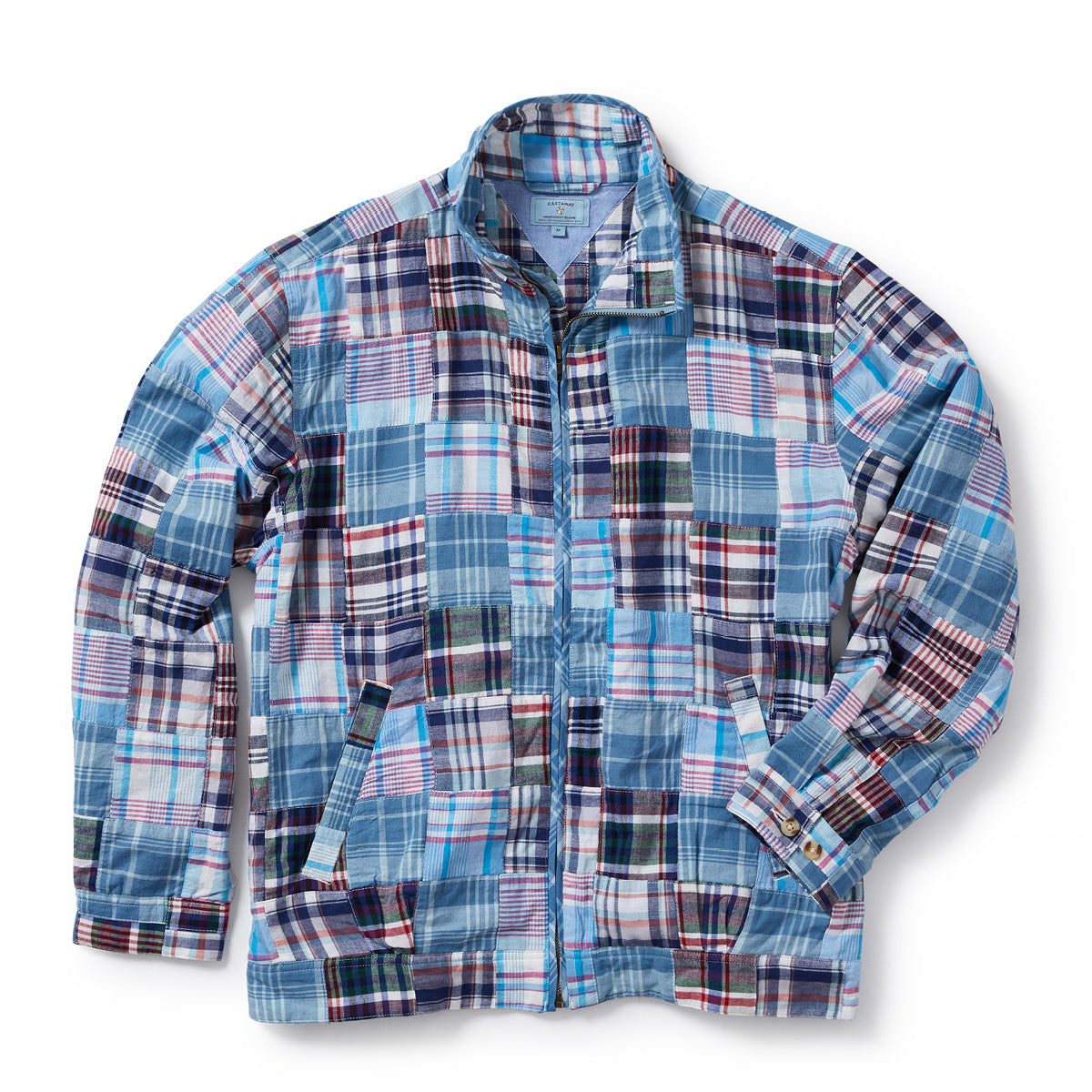
Madras Shop >>

New Arrivals >>
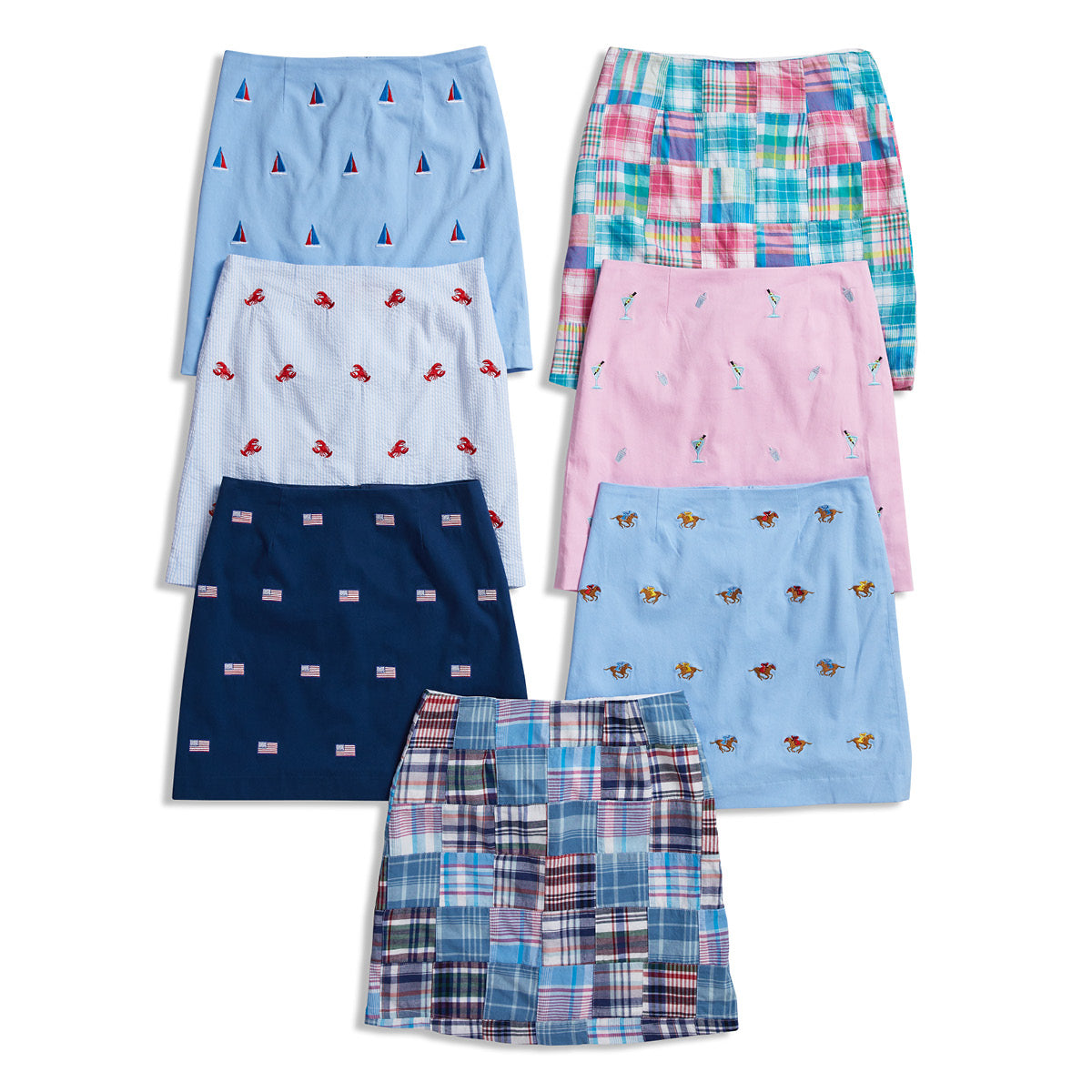
The Ali Skirt >>
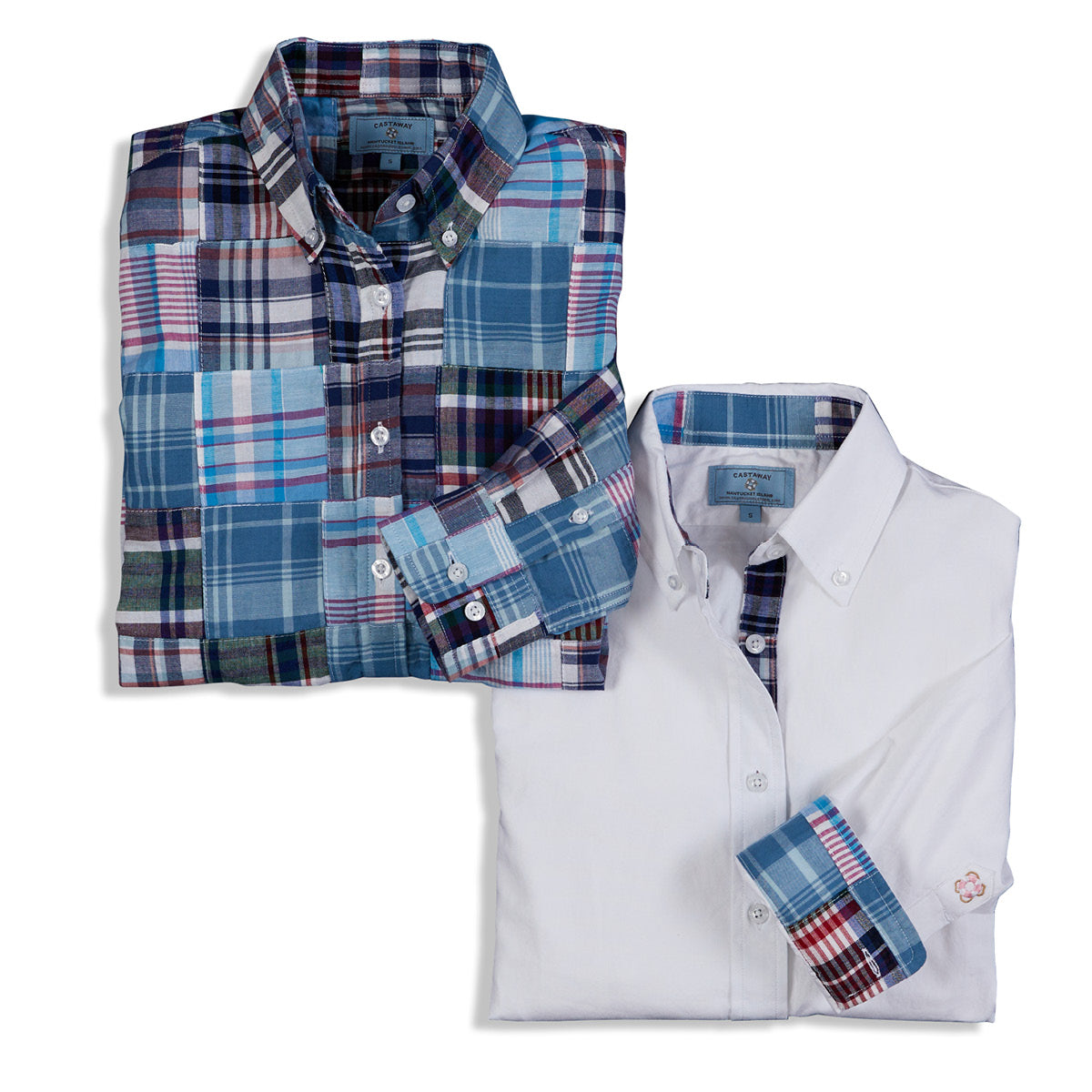
Ladies Tops >>
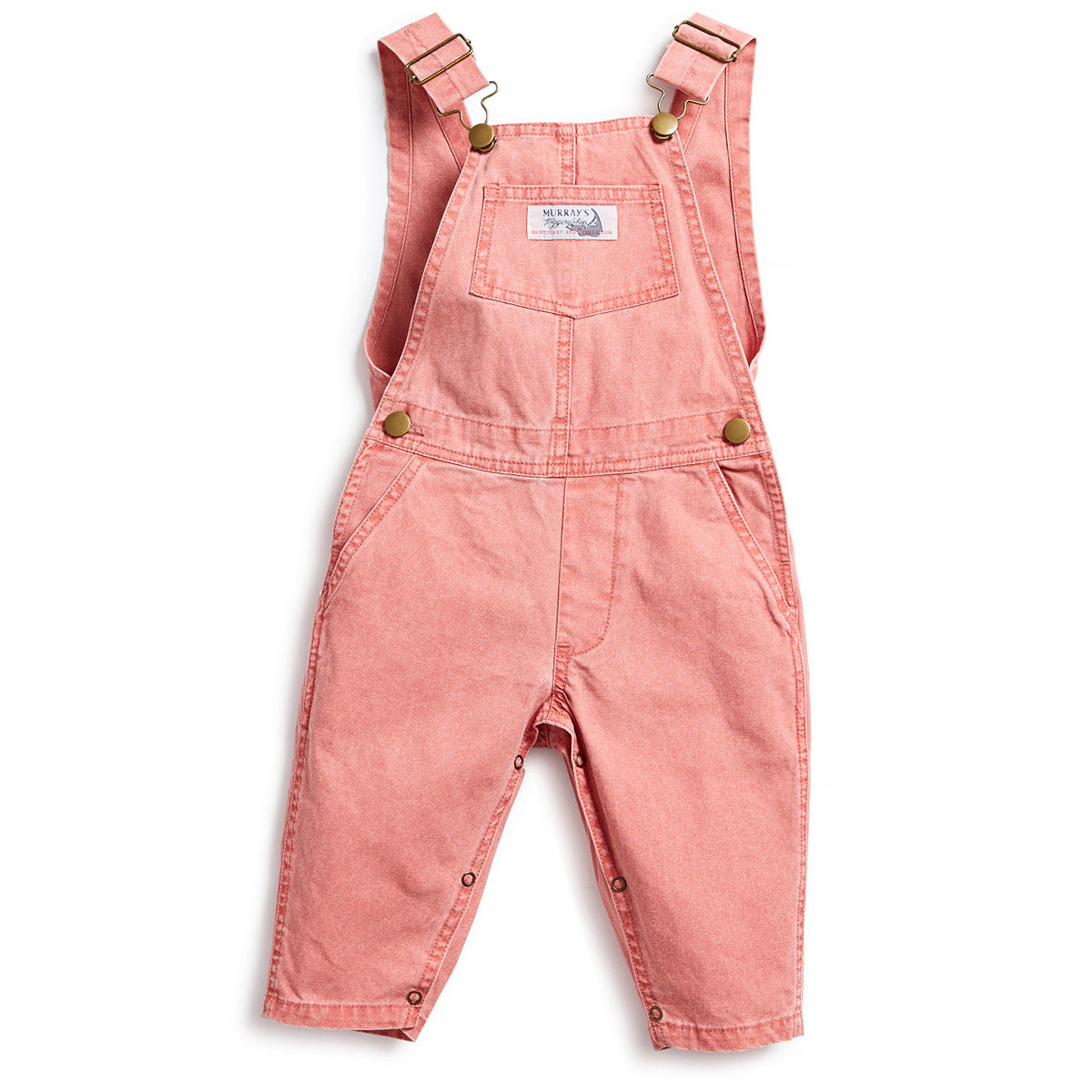
Nantucket Reds » >>

The Sailor's Style Guide: How to Dress at a Yacht Club
If you've been invited to a casual yacht club rendezvous, you'll need the right threads to fit in. in this guide, we'll walk you through the yacht club attire you'll need to fit in. hint: you can find the perfect outfit head to toe with castaway.
You've been invited to a meal or event at a local yacht club, but you've never been to one before. Suddenly, the panic sets in. What should you wear? Fortunately, there are lots of options and visiting a yacht club does not mean you have to spend a lot of money just to fit in. This post will give you some pointers on yacht club attire so that you feel neither under nor overdressed, and can really enjoy yourself and have a great time at the club.
Before you even think about what to wear, check to see if the yacht club you're going to has a dress code posted online. Most of them do, and the rules can vary from club to club. The Nantucket Yacht Club , for example, requires semi-formal attire for its dinners and cocktail attire including ties for men during its dinner dances and balls. The Hyannis Yacht Club goes into a little more detail. It accepts stylish casual wear including clean, neat jeans and shorts for lunch. For dinner, guests are expected to step it up by leaving the denim at home and wearing sports coats. Different areas of a club may also have different dress rules. Bars and outdoor decks tend to more lax and allow casual clothing.
Sometimes, the easiest way of narrowing down what to wear is to eliminate what you should not wear. This is just a partial list of how not to show up at any kind of yacht club unless you want to be denied admittance or receive a lot of disapproving glares. All rules listed apply to the inside of the club, and can vary for beach and dock rulings.
Flip Flops or Going Barefoot: This rule applies INSIDE the club, or for any meal time. Most people love the beach, but going barefoot is not only unacceptable, but unhygienic.
You'll want to wear appropriate footwear such as sturdy sandals or closed toe shoes. While a lot of children and adults love their flip-flops, they may be a little too casual for a yacht club atmosphere. The most popular choice here is a boat shoe style but a bridle bit driver is always appropriate - check the latest . The lightly worn leather and pencil-curled laces fit the bill in the cool department.
Torn, Stained, or Worn Clothing: Any attire that is showing signs of wear such as rips, stains that never came out, holes, missing buttons, etc. should be left at home.
Baseball Caps and Other Hats: Most yacht clubs prefer that men remove their caps when inside the venue. Save them for the sailing excursions.
Extra points on the water if you rock the Club’s Burgee on the hat!
Swimwear: Just a no-no. Save it for the boat and the beach. A cover-up can be acceptable for the patio.
Going Shirtless: Nope!
Undershirts as Shirts: See above. You may also want to be careful about choosing a t-shirt, particularly one with graphics, when visiting a yacht club. Most prefer that you wear a collared shirt, even if it's a casual one such as a polo shirt.
Tank tops for men and any tank tops for women that are skimpy and don't hide undergarments should be saved for another occasion.
Women have a lot of options when it comes to visiting a yacht club. Linen and cotton make the perfect summer blouses. A light but structured Sleeveless Top paired with a sweater is perfect for warding off cool sea breezes when you're out on the deck. A polo or collared shirt works well for the yacht club scene as well. You can also consider a dressy blouse that has a little bit of flounce to it. If shorts are allowed for the time and area of the club you're visiting, consider sporting Sailing shorts with a cute anchor embroidery. They're cool, classy, and show off just the right amount of leg. Casual skirts and dresses are perfectly fine as well as long as they're not too short and revealing. If you're attending a party at a yacht club you may need to wear a nice cocktail dress, or a classic Tunic Dress for a day event. Special events such as balls and dinner dances usually specify what is appropriate attire on the invitation.
Don't forget to have fun with accessories! A straw handbag can complete a nautical themed look.
For most casual yacht club occasions, men can't go wrong with a collared shirt and long pants or Cisco Shorts . Pastel and preppy shades such as summer green, hurricane red, and islander blue rule here.
When casual attire is allowed, collared sport or polo shirts are always in fashion. Seersucker and linen shirts are available in several colors and patterns for summer club get-togethers. If jeans are not allowed, seersucker or cotton canvas pants are still casual and comfortable yet dressy enough for all areas of a yacht club. If you really want to show your love of nautical dressing, consider wearing a fun Embroidered Pant !
Or you can opt for solid pants but add some nautical flair with an embroidered belt . Classic summer staples like Seersucker and Madras Patches will make you the talk of the Club, in a good way!
For those chilly sea breezes and evenings, a quarter zip pullover wards off the cool air while keeping you stylish and casual.
It's a good idea to keep a sportcoat and a few ties in your closet just in case the yacht club you're visiting requires it. Opt for a fun all over embroidered jacket, or a Madras Patchwork style to really up your game.
Kids' clothing should conform to the same yacht club rules as established for grown-up guests. If you really want your son to look cute, consider dressing him in the same matching outfit as dad.
Whether you're looking to make a splash with yacht club attire or just want to look good on the boat or while meeting with friends, we have the seaside looks that you'll look and feel wonderful in for men, women, and children.
It’s a very knowledgeable post for readers. I Got the latest collection of <a href=”https://www.sunbrightlighting.com/ ”>outdoor landscape lights of best quality at the lowest price this month. It enhanced the appearance, safety and security of my garden and home.
Hi, This is a very Impressive and also very informative post. I will share it with my friends too. I experienced Low Voltage (12v) <a href=”https://kingsoutdoorlighting.com/ ”>outdoor landscape lightsfixtures, that enhanced the appearance, security, and safety of my home.
Black Art Fashion is an Australian men’s clothing brand. We have some exciting deals on Men’s pants, Mens jeans, Mens chinos. Visit our online store<a href=”https://blackartfashion.com/collections/mens-pants-jeans-chinos ”> Men Pants or you can also try on one of our outlets in Australia.
about Buy Wedding Dress for Bride Hi there, all is going fine here and ofcourse every one is sharing information, that’s really good, keep up writing.
buy dapoxetine online usa
Leave a comment
This site is protected by reCAPTCHA and the Google Privacy Policy and Terms of Service apply.
You may also like
EVENTS & ENTERTAINING
Food & drink, relationships & family, what is yacht club casual dress, more articles.
What to Wear to a Night Club
What Is Evening Casual Dress?
Semiformal Clothing Etiquette
- Tips on What a Boy Should Wear for Semi-Formal Dances
What Is Holiday Business Attire?

Golkin Oleg/iStock/Getty Images
Dressing casual in a well-heeled environment can be tricky. However, with a little planning and some fashion know-how it's easy to look sharp and while remaining appropriate for the setting, including yacht club casual dress.
Know What to Avoid

Ciaran Griffin/Stockbyte/Getty Images
Rules vary from one yacht club to the next, so feel free to the check the club's official website or give them a call to ask questions about their specific rules. However, most yacht clubs bar attendees from wearing jeans (with certain exceptions) and certainly ratty or torn ones; some might allow members to wear nice denim for special occasions or in select areas of the club. T-shirts (like those for a sports team or school), sneakers and shorts are also commonly seen on the list of banned items.
Stick to "Smart Casual"

ariwasabi/iStock/Getty Images
Smart casual dress is just what it sounds like--relaxed and casual, but with a nod toward style and looking good, not sloppy and overly relaxed. A member of the smart crowd is elegant, sophisticated and fashionable...in essence, smart casual means that you dress professionally, but you are relaxed. It is a middle ground between strict business or formal wear and street clothes."
Men's Fashion

Hemera Technologies/PhotoObjects.net/Getty Images
Men adhering to a smart casual code should wear a collared shirt, but don't need to add a necktie. Khakis or similar slacks (ironed, of course) can take the place of jeans and are just about as comfortable. A polo shirt or plaid button-up will look good and align with yacht club standards. Accessorize with a leather belt and shoes.
Women's Clothes

Andrejs Pidjass/iStock/Getty Images
Women should lean toward nice dresses which are classy and stylish, but not overly provocative; avoid cleavage-revealing, tight attire that would be more suited to a flashy nightspot than the proper environs of a yacht club. Women may also wear slacks with a nice top--perhaps a lightweight sweater in the spring or a collared, knit polo in the summer. Avoid sneakers and use a few accessories to tie the outfit together, like a silk scarf or a nice bracelet.
Children and Other Circumstances

amanaimagesRF/amana images/Getty Images
Consult with a yacht club beforehand if bringing kids. Little ones are usually exempt from dress code rules, yet it's easy enough to put children into comfortable clothes just this side of dressy. Make sure children's clothes are clean, free of holes and stains and that their hair is well-groomed. For adults wanting to really dress down, check to see if the yacht club has a day for "porthole casual," during which jeans and tees are acceptable, but even then, make sure clothes are clean and well-fitted.
Related Articles

Tips on What a Boy Should Wear for ...

What Do I Wear to a Casual Nightlife ...
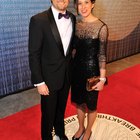
Semi Formal Vs. Formal Dress Code

What Not to Wear to a Nightclub

What Is the Proper Clothing for Mormon ...

What Kind of Clothes Do Children in ...
How to Dress for a Casual Dinner Party

Recommended Attire for a Champagne ...

Types of Evening Wear

How to Dress for a Semi Formal Event

Appropriate Dress for College ...

What Is Uptown Casual Dress?

School Uniforms in the 1940s

How Do I Dress Down a Little Black ...

How to Dress Country Club Casual - Men
What to Wear to a Pageant
- You Look Fab: Smart Casual for Ladies
Hallie Engel is a food and lifestyle writer whose work has appeared in several international publications. She served as a restaurant critic for "Time Out Abu Dhabi" and "Time Out Amsterdam" and has also written about food culture in the United Arab Emirates for "M Magazine." She holds a bachelor's degree in communications and film studies from University of Amsterdam.
Photo Credits
Dressing for a Yacht Club Party
Lucky you! You have just received an invitation for your very first yacht club party. For most people this brings up the question “What on earth do I wear?”. Have no fear! We work with many yacht clubs to make sure their members look sharp with custom ties and scarves . Here are some of our style tips to help you navigate the waters of yacht club fashion and pull together an amazing outfit.
Yacht Club Wear – Do Nots
While yacht club attire can vary by club and time of day of the event, there are certain items that just won’t do. You should always avoid the following:
- T-Shirts / Tank Tops
- Revealing clothing (i.e. cut-off shirts, mini skirts, etc)
- Wrinkled or otherwise “sloppy” attire
Also, while you may be tempted to don an ascot or jaunty captain’s hat … don’t. For most people this will come across as cliche rather than sporty. Classic styles, nautical colors and smart layers are the best way to go when building your dock-side ensemble. You can also shop many of the clubs’ stores for shirts and ties embellished with the club logo.
Yacht Club Wear – Dos
Hopefully, your invitation indicates the dress code. But if it doesn’t, there are two general rules of thumb. If the party is during the day, then select attire in the “country club casual” category. If the party is in the evening, opt for traditional cocktail party wear.
Country Club Casual for Men
A classic polo or Oxford shirt is the standard for men. Shirts should be clean, in good condition and neatly pressed. These should be worn with black slacks or khakis. When it comes to shoes, loafers in brown or black are the most popular choice. A less popular but also acceptable footwear option is a pair of leather boots in black or brown. Some yacht clubs require blazers even for daytime events. To be safe, check the attire requirements posted on the club’s website or call them prior to the event.
Country Club Casual for Women
Just like men, polo shirts paired with well-cut slacks are an acceptable option for women. Women can also choose a tailored blouse worn with a knee-length cotton skirt for a slightly dressier look. Another popular ensemble is a simple summer dress with minimal accessories. A cashmere sweater is the perfect outer layer to protect from cool breezes. Ballet flats are the top shoe choice when dressing country club casual.
Cocktail Attire for Men
While not as formal as black-tie, cocktail wear is decidedly dressier than daytime apparel at a yacht club. Dress slacks with a jacket and tie or a full suit are both appropriate options for an evening event. Choose neutrals and subdued tones over bright colors or prints. Men should accessorize with a black leather belt and matching shoes. Stick with a loafer or Oxford style shoe and be sure your socks coordinate with your pants.
Cocktail Attire for Women
Cocktail dresses should be knee-length or midi-length in a solid or very subtle print. If you are having a tough time finding the right color, the quintessential “little black dress” is always a smart choice. Another popular trend for evening events is a formal women’s pant suit. When it comes to accessorizing, less is more. Choose a single statement piece of jewelry rather than a multitude of pieces and opt for a clutch instead of a shoulder bag. Heels, dressy sandals, and ballet flats are all acceptable shoe options.
Whether your event is a casual Sunday brunch or a more formal evening affair, our quick tips will help you create the perfect yacht club outfit. Contact us today to create your own custom yacht club wear !

Let’s connect

Hours of Operation & Dress Code
Hours of operation, courtesies, customs, traditions & uniforms.
Click HERE to view.
For occasions requiring a uniform, the dress code is as follows:
Summer Uniform: White shoes, white pants with white web belt and brass buckle, white shirt without tie but with shoulder boards. Winter Uniform: White shoes, white pants with white web belt and brass buckle, white business shirt with Club burgee tie, navy blue blazer with Club badge. Formal Uniform: Winter Uniform except black bow tie (no cummerbund or tuxedo shirt). Summer Uniform for Ladies: White (no open toe) shoes, white pants or white (knee length straight) skirt with white web belt and brass buckle, white shirt without tie or without Women’s black cross-over tie but with shoulder boards. Pearls are allowed for ladies.
Winter Uniform for Ladies: White (no open toe) shoes, white pants or white (knee length straight) skirt with white web belt and brass buckle, white business shirt with Club burgee tie or Women’s black cross-over tie, navy blue blazer with Club badge.
Formal Uniform for Ladies: White (no open toe) shoes, white pants or white (long or knee length straight) skirt or dress with white top without collar or white formal long or knee length straight dress without belt and a navy-blue blazer. Pearls are allowed for ladies.
Uniform Details
- MSC Cruises
Dress Code for YC dinners
By sassycruiser , March 29, 2023 in MSC Cruises
Recommended Posts

sassycruiser
New to MSC and Yacht Club. Mostly cruise with NCL which is very casual. How dressed up do people get for YC dinners? It appears that there is a formal night - do men wear suits? We are fine with bringing suits, etc but if it’s not necessary would prefer not to.
Thank you.
Link to comment
Share on other sites.
Sailing out of the US for Caribbean sailings dress in the YC Restaurant is largely country club casual. I’m avoiding the term ‘resort casual’ as shorts for dinner are not acceptable (sorry, you may see them, but they are not ‘suggested attire for dinner’). You will however see folks who ‘dress’ for dinner. We do, but we are in a distinct minority. Formal night can be more dressy with at least jackets for gentleman. Depending on the itinerary I may bring my tux. There I will be a very distinct minority. If you have a higher ratio of Europeans on the cruise (mostly out of Miami or French Antilles) you will see a definite upping of the dominant dress.

Thank you. I will make sure my gentlemen bring their jackets etc.

Ooh, I was just about to make some 🍿 Popcorn to watch this show...
To answer the OP's question - it's a free for all. There is a SUGGESTED dress code and it's up to the Maitre D' to enforce. There are posters who insist (blah blah blah) that it's their vacation and they paid for it and they can wear shorts and flops to dinner, darn it, because how they dress shouldn't bother your enjoyment of your dinner. In fact it does bother me because I generally feel like it's being done sometimes to have a showdown of sorts - "whatcha mean I can't wear what I want?" (voices escalating), "I paid to be here and I'll wear what I want, wanna try me?", etc...." (However, I have seen plenty of men walk toward Le Muse on the Divina in shorts, accompanied by their butler, and be denied entrance.)
Then there are posters who believe in Ladies and Gentlemen acting like ladies and gentlemen. For this we use the Country Club Attire guidelines. No hats in dining room, no shorts for dinner, etc. If you couldn't wear for dinner in a restaurant at a members only country club then you shouldn't be wearing it in the YC. You want to insist on shorts and flops and a baseball cap - go to the MDR, the buffet, order room service or snack on the olives in Top Sail (kidding).
In short, jackets are NOT required for formal night. Collared shirt and trousers are perfectly appropriate, a tie is a nice touch that doesn't add weight to a suitcase. A jacket is icing on the cake, but not necessary.
32 minutes ago, Morgsmom said: snack on the olives in Top Sail (kidding).
And the carmelized onions.

Gatordad1967
Suits are not necessary. I was in shorts all week, and loved it.

Two Wheels Only

^^ He would probably get into the Yacht Club for dinner. He might get turned away but I wouldn't be surprised if he was sitting at the table next to me.
Shorts, hat, no socks......whatever. 😅
There's the actual rules
The rules that MSC enforce
The rules that some passengers would like them to be, which generally fall into two camps of either stricter/more formal and the opposite.

In our 2 YCs with 2 different dining room staff on 2 different ships (Meraviglia, Seashore), the only persons I saw turned away were a younger couple in bathing attire who clearly had come from the pool. They were literally dripping on the floor outside the dining room entry.
Maître d' politely asked that they change as they would "make it impossible to dry the chairs for the next guests". They even offered to sit them on the pool deck and have their butler bring them clothes, or have their dining selection brought to their rooms. It was a nice move to maintain decorum and not make a scene.
We are the "resort casual" folks - having lived in Bermuda for years, tailored shorts, collared shirt (and the occasional jacket) is considered dressed up. We dress the same as we would at any "white tablecloth" restaurant: no hats, no flip flops, no tank tops, no gym/pool-wear, and if we wear shorts they are tailored and long enough to cover the bits.
Oddly enough, as compared to NCL where they emphasize "freestyle cruising" but require long pants at some of their restaurants (though not specifically in the Haven), our experience is that you not be called out in the YC unless you are rude or disrespectful.
Have a wonderful cruise! Warmest, Amy
Thank you Amy.
on our last NCL cruise in February our adult son was turned away from LeBistro on the first night because he was wearing knee length shorts and his luggage hadn’t arrived. Rules are rules I guess. We just left quietly and ate where we could.
We don’t normally wear shorts to any dinner. We always take dress pants, nice shirts etc. I just didn’t want to cause problems if we were out of dress code.
Having good manners always fits. Like the old saying you are never fully dressed without a smile!
2 hours ago, Two Wheels Only said: ^^ He would probably get into the Yacht Club for dinner. He might get turned away but I wouldn't be surprised if he was sitting at the table next to me. Shorts, hat, no socks......whatever. 😅
did he pass the grey poupon?
49 minutes ago, sassycruiser said: on our last NCL cruise in February our adult son was turned away from LeBistro on the first night because he was wearing knee length shorts and his luggage hadn’t arrived . Rules are rules I guess. We just left quietly and ate where we could.
Usually , NCL will be Cruise Casual (shorts allowed) on the first night for that exact reason....

" Embarkation day will be Cruise Casual in all restaurants. "
Yea, no issues in other restaurants just LeBistro.
TampaGambler
Just got off the seascape 2 weeks ago, we were a group of 14. On gala night I wore jean pants and all other nights wore shorts, no problem at all.
Each night the manager promptly came over and laughed with our table.
Some people dress up, others don't... Regardless, they will not kick you out of the YC restaurant.
4 hours ago, Gatordad1967 said: did he pass the grey poupon?
With pinky extended, of course... 😁
15 hours ago, amygutman said: With pinky extended, of course... 😁
well played!

We wear jeans/chinos and a shirt (likely short-sleeved). Maybe a jacket if feeling smart. No smarter than that.
morpheusofthesea
We would extend this to every meal when we cruise nowadays. "When you pay for a stay in a hotel, you also pay for the comfort, amenities, and services of a hotel, but it does not necessarily mean that you can do and act whatever you like and however you feel. There are hotel manners that you must take note of. Courtesy and respect beget the same, and knowing what to wear for breakfast in a hotel is a basic manner that makes a big difference. Most hotels establish a formality culture in dining for breakfast as a sign of respect and consideration for other guests and the staff. Unless your breakfast wear is as comparable to your smart-casual wear, that wouldn’t be a problem." https://thealcazar.com/what-to-wear-for-breakfast-in-a.../
https://tableagent.com/article/dressing-to-dine-dress-codes-defined/ you can understand why dress codes are sometimes suggested by eateries of a certain merit: they wish for their guests to experience the world they have created. You can savor the luxury of top-notch service best when you too look and feel first-rate. The essence of fine dining wants to take patrons out of their ordinary lives, and for two hours, allow them to bask in the extraordinary experience of their choice. To truly be apart of such a supreme culinary happening—one must look the part and one must dress to dine.
- 10 months later...
On 3/29/2023 at 9:06 AM, Morgsmom said: Ooh, I was just about to make some 🍿 Popcorn to watch this show... To answer the OP's question - it's a free for all. There is a SUGGESTED dress code and it's up to the Maitre D' to enforce. There are posters who insist (blah blah blah) that it's their vacation and they paid for it and they can wear shorts and flops to dinner, darn it, because how they dress shouldn't bother your enjoyment of your dinner. In fact it does bother me because I generally feel like it's being done sometimes to have a showdown of sorts - "whatcha mean I can't wear what I want?" (voices escalating), "I paid to be here and I'll wear what I want, wanna try me?", etc...." (However, I have seen plenty of men walk toward Le Muse on the Divina in shorts, accompanied by their butler, and be denied entrance.) Then there are posters who believe in Ladies and Gentlemen acting like ladies and gentlemen. For this we use the Country Club Attire guidelines. No hats in dining room, no shorts for dinner, etc. If you couldn't wear for dinner in a restaurant at a members only country club then you shouldn't be wearing it in the YC. You want to insist on shorts and flops and a baseball cap - go to the MDR, the buffet, order room service or snack on the olives in Top Sail (kidding). In short, jackets are NOT required for formal night. Collared shirt and trousers are perfectly appropriate, a tie is a nice touch that doesn't add weight to a suitcase. A jacket is icing on the cake, but not necessary.
Do you see anything other than I'm seeing regarding the rules as stated by MSC? The website says for evening wear it is suggested to adhere to a more polished look. In that they included tailored pants and shorts. Typically, I don't even bring long pants on any beach type vacation. If it's required, I'll participate. If it's merely other people's opinion, I'll stick to my nice button up shirt and khaki shorts. Can you clarify?
40 minutes ago, ColbyBixby said: Do you see anything other than I'm seeing regarding the rules as stated by MSC?
MSC is more " suggestion " than " rule ". Certain things can be enforced but often times, even those things aren't enforced.
43 minutes ago, ColbyBixby said: If it's required, I'll participate. If it's merely other people's opinion, I'll stick to my nice button up shirt and khaki shorts. Can you clarify?
The khaki shorts should be fine. MSC seems to make a distinction between shorts (think gym shorts) and shorts (khakis, cargo shorts, etc.).
In your case, I would suggest bringing a pair of pants just in case the Maître d' is strict on your particular sailing. The same Maître d' might allow shorts the following week. Who knows?
Have I seen gym shorts being worn in the Yacht Club for dinner? Yes.
Is it possible that the same person wearing the same shorts might get turned away at the MDR on another MSC cruise? Yes.
1 hour ago, ColbyBixby said: Do you see anything other than I'm seeing regarding the rules as stated by MSC? The website says for evening wear it is suggested to adhere to a more polished look. In that they included tailored pants and shorts. Typically, I don't even bring long pants on any beach type vacation. If it's required, I'll participate. If it's merely other people's opinion, I'll stick to my nice button up shirt and khaki shorts. Can you clarify?
I have seen men refused from YC at dinner for shorts. But i have also seen thugs with baseball caps allowed. 🤷🏼♀️

1 hour ago, Morgsmom said: But i have also seen thugs with baseball caps allowed.
Definition of terms, please.
13 hours ago, Bgwest said: Definition of terms, please.
hum... let's go with hooligan 🙂 , but I'm talking basketball shorts hiked so low as to see the waist logo on the "under britches", tank top, backwards ball cap... that whole thing. (Seashore and Meraviglia) However, on the Divina have also witnessed a gent in linen dress shorts being turned away to go change at dinner.
Please sign in to comment
You will be able to leave a comment after signing in
- Welcome to Cruise Critic
- ANNOUNCEMENT: Set Sail Beyond the Ordinary with Oceania Cruises
- ANNOUNCEMENT: The Widest View in the Whole Wide World
- New Cruisers
- Cruise Lines “A – O”
- Cruise Lines “P – Z”
- River Cruising
- Cruise Critic News & Features
- Digital Photography & Cruise Technology
- Special Interest Cruising
- Cruise Discussion Topics
- UK Cruising
- Australia & New Zealand Cruisers
- Canadian Cruisers
- North American Homeports
- Ports of Call
- Cruise Conversations
Announcements
- New to Cruise Critic? Join our Community!
Write Your Own Amazing Review !

Click this gorgeous photo by member SUPERstar777 to share your review!
Features & News

LauraS · Started 7 hours ago
LauraS · Started Monday at 09:50 PM
LauraS · Started Monday at 05:37 PM
LauraS · Started Monday at 04:09 PM
LauraS · Started Monday at 06:02 AM

- Existing user? Sign in OR Create an Account
- Find Your Roll Call
- Meet & Mingle
- Community Help Center
- All Activity
- Member Photo Albums
- Meet & Mingle Photos
- Favorite Cruise Memories
- Cruise Food Photos
- Cruise Ship Photos
- Ports of Call Photos
- Towel Animal Photos
- Amazing, Funny & Totally Awesome Cruise Photos
- Write a Review
- Live Cruise Reports
- Member Cruise Reviews
- Create New...

Dress to Impress: What to Wear to a Yacht Party
Introduction.
Attending a yacht party can be an exciting and glamorous experience, but it's important to dress appropriately for the occasion. Whether you're a seasoned yacht-goer or a first-timer, it's essential to understand the dress code and theme of the party to ensure you make the right impression. The first thing to consider when dressing for a yacht party is the theme of the event. If there is a specific theme, such as a nautical or tropical theme, it's important to incorporate elements of that theme into your outfit. This can be as simple as wearing a striped shirt or incorporating bright, tropical colors into your ensemble. Another important factor to consider is the location of the yacht party. If the party is taking place in a tropical location, lightweight and breathable fabrics are a must. Opt for cotton or linen materials that will keep you cool and comfortable in the heat. On the other hand, if the party is taking place in a cooler climate, layering options such as a light jacket or sweater may be necessary. It's also important to consider whether or not there is a specific dress code for the yacht party. If there is, be sure to adhere to it and dress accordingly. If not, classic yacht party attire such as nautical stripes, boat shoes, and khaki pants are always a safe bet. Finally, don't forget to accessorize your outfit to complete the look. Statement sunglasses, a sun hat, and a beach bag are all great options to consider. When it comes to footwear, boat shoes, sandals, or espadrilles are appropriate choices. It's important to avoid wearing heels or anything that may damage the deck of the yacht. In conclusion, dressing for a yacht party can be a fun and exciting experience. By considering the theme of the party, the location, and the dress code (if there is one), you can ensure that you make the right impression and feel confident in your outfit. Remember to have fun with your outfit choices while still being mindful of the occasion.
Table of Content
Consider the venue, accessories, men's attire.
When deciding what to wear to a yacht party, it's important to consider the venue. The location of the party can greatly influence your outfit choice. If the party is taking place in a tropical location, you'll want to opt for light and breezy fabrics that will keep you cool in the heat. Think flowy sundresses, linen pants, and cotton shirts. Bright colors and bold prints are also a great choice for a tropical yacht party. On the other hand, if the party is taking place in a cooler climate, you'll want to dress in layers to stay warm. A light jacket or sweater paired with a dress or pants and a blouse is a great option. Neutral colors like navy, white, and beige are perfect for a cooler climate yacht party. It's also important to consider the type of yacht you'll be on. If the yacht is more casual, you can get away with a more relaxed outfit. However, if the yacht is more formal, you'll want to dress accordingly. Always check with the host or hostess to see if there is a specific dress code for the party. Overall, when considering the venue for a yacht party, it's important to dress for the weather and the type of yacht you'll be on. Keep in mind that you'll be on a boat, so you'll want to wear something that is comfortable and won't get in the way. With these tips in mind, you'll be sure to impress at your next yacht party.

When it comes to dressing for a yacht party, it's important to consider whether or not there is a specific dress code. Some yacht parties may have a formal dress code, while others may be more casual. If there is a dress code, it's important to adhere to it to show respect for the host and other guests. If there is no dress code specified, there are still some classic yacht party attire options to consider. Nautical stripes are always a safe bet, as are boat shoes. For women, a sundress or jumpsuit in a light and breezy fabric can be a great option. For men, a collared shirt and khaki pants can be a good choice. It's important to remember that even if there is no dress code, a yacht party is still a special occasion and it's important to dress appropriately. Avoid anything too casual, such as shorts or flip flops, and opt for something a bit more put-together. Ultimately, the key to dressing for a yacht party is to strike a balance between comfort and style. You want to be able to move around and enjoy yourself, but you also want to look good while doing it. Don't be afraid to have fun with your outfit choices, but always be mindful of the occasion and the other guests. With the right outfit, you'll be sure to impress and have a great time on the yacht.

Accessories are an essential part of any outfit, and they can make or break your look at a yacht party. When it comes to accessorizing for a yacht party, think statement pieces that will elevate your outfit and add a touch of glamour. One of the most important accessories for a yacht party is sunglasses. Not only do they protect your eyes from the sun, but they also add a touch of sophistication to your look. Opt for a pair of oversized sunglasses with a bold frame to make a statement. Another must-have accessory for a yacht party is a sun hat. Not only will it protect your face from the sun, but it will also add a touch of elegance to your outfit. Choose a wide-brimmed hat in a neutral color like beige or white to complement your outfit. A beach bag is also a great accessory to bring to a yacht party. Not only will it hold all of your essentials like sunscreen and a towel, but it will also add a touch of style to your look. Choose a straw beach bag with colorful tassels or pom-poms for a fun and playful touch. When it comes to jewelry, less is more at a yacht party. Opt for a simple pair of earrings or a delicate necklace to add a touch of sparkle to your outfit. Avoid anything too flashy or over-the-top, as it can detract from your overall look. In conclusion, accessories are an important part of any outfit, and they can take your yacht party look to the next level. Choose statement pieces like oversized sunglasses, a wide-brimmed hat, and a straw beach bag to add a touch of glamour to your outfit. Remember to keep your jewelry simple and understated, and you'll be sure to turn heads at your next yacht party.

When it comes to footwear for a yacht party, it's important to strike a balance between style and practicality. While you want to look fashionable and put-together, you also need to consider the fact that you'll be spending time on a boat. This means that you'll need to choose shoes that are comfortable, slip-resistant, and won't damage the deck of the yacht. One classic option for both men and women is the boat shoe. These shoes are designed with a non-slip sole and are made from materials that can withstand exposure to water. They also have a preppy, nautical look that is perfect for a yacht party. For women, sandals or espadrilles are also a great choice. Look for styles with a low heel or flat sole to ensure that you can move around the boat with ease. It's important to avoid wearing heels or anything with a sharp or pointed sole. These types of shoes can easily damage the deck of the yacht, which is not only a faux pas but can also be dangerous. Additionally, you'll want to avoid shoes that are too casual, such as flip-flops or sneakers. While these may be comfortable, they don't quite fit the dress code for a yacht party. When choosing footwear for a yacht party, it's also important to consider the color and style of your outfit. If you're wearing a bold or patterned dress, for example, you may want to opt for neutral-colored shoes to balance out the look. On the other hand, if you're wearing a simple outfit, you can add a pop of color or texture with your shoes. Overall, the key to choosing footwear for a yacht party is to prioritize comfort and practicality while still looking stylish. With the right shoes, you'll be able to enjoy the party without worrying about slipping or damaging the yacht.

When it comes to dressing for a yacht party, men have a few options to choose from. The key is to strike a balance between looking stylish and being comfortable. Linen or cotton pants are a great choice for a yacht party, as they are lightweight and breathable. Pair them with a polo shirt for a classic, preppy look. Boat shoes are a must-have for any yacht party outfit, as they are both stylish and practical. They provide good grip on the deck of the yacht and are comfortable to wear for long periods of time. While shorts may be tempting in warm weather, they are generally not appropriate for a yacht party. Instead, opt for pants or even a pair of tailored shorts if the dress code allows. Avoid anything too casual, such as t-shirts or athletic wear. A yacht party is a special occasion, and your outfit should reflect that. Accessories can also play a role in a man's yacht party outfit. Sunglasses are a must-have for any outdoor event, and a sun hat can provide both style and sun protection. A watch is also a great accessory to add to your outfit, as it can complete the look and add a touch of sophistication. In summary, men should aim for a classic, preppy look when dressing for a yacht party. Linen or cotton pants, a polo shirt, and boat shoes are all great options. Avoid anything too casual, such as shorts or athletic wear. Don't forget to add some accessories to complete the look and have fun with your outfit while still being mindful of the occasion.

In conclusion, dressing appropriately for a yacht party is crucial to ensure that you feel comfortable and confident while enjoying the festivities. Remember to consider the venue and any dress code requirements before selecting your outfit. Don't be afraid to have fun with your outfit choices, but also keep in mind that classic yacht party attire such as nautical stripes and boat shoes never go out of style. Accessorizing your outfit with statement sunglasses, a sun hat, and a beach bag can also add a touch of glamour to your look. When it comes to footwear, opt for boat shoes, sandals, or espadrilles, and avoid anything that may damage the deck of the yacht. Men should consider wearing linen or cotton pants, a polo shirt, and boat shoes, while avoiding anything too casual. Ultimately, the key is to strike a balance between style and practicality, and to enjoy the party while feeling confident in your outfit. So go ahead and dress to impress at your next yacht party!

About author
Related posts, can you wear rhodium plated jewelry in the shower, sparkling clean: can you use peroxide to clean your jewelry, what is miriam haskell jewelry worth.
- Entertainment
Most popular

- Pontoon Boats
- Personal Watercraft
- nauticalknowhow
- Nautical Knots
- Tools and Calculators
What to Wear on a Yacht
When you’re on a yacht you’re obviously going to dress for the weather but, in general, you want to keep it light and cool. Casual is good within reason as long as you don’t go overboard, so to speak, and it need not be formal but it shouldn’t look inappropriate or out of place. There’s no set in stone dress code for yachts
The most expensive yachts in the world cost hundreds of millions of dollars and, for most of us, that’s a bit out of reach. But that doesn’t mean we’ll never get on a yacht for a weekend charter or even a yacht party and when that happens knowing what to wear is something you may be curious about. Let’s dig into some deeper details of suitable yacht attire for men and women so you don’t have to worry about feeling self conscious when you’re living it up on a fancy yacht.
Yacht Styles Suitable for Men

In 80s movies you may have seen some yacht captains decked out in full formal jackets with hats and pipes and everything. You can still do that and, no word of a lie, a guy at my uncle’s yacht club used to wear the navy jacket and a captain’s hat everywhere he went for years. But most people like to keep it casual on a yacht and far less formal with a simple, casual outfit.
Linen is a popular choice for yachting because it’s very light and breezy and keeps you cool under the blazing sun. A linen shirt, like linen button downs, have a real casual but not inappropriate quality to them that has been linked to boating for years and would ensure you never look out of place.
Light cotton works just as well, of course, and something like a polo shirt wouldn’t make you stand out in a crowd, or a simple button down. Even a t-shirt wouldn’t look out of place but you’ll want to tailor that to the situation. If you’re literally just day sailing then that’s great. But if it’s a slightly more formal outing or maybe a party then you may want to keep it a little more upscale
Here’s another case where you should take the situation into account. Shorts and trunks can definitely be appropriate on a yacht but if you’re having a party in the evening then maybe consider longer pants. However, if you’re actually traveling on the yacht, especially if you’re fishing or sailing/racing, a good pair of swim shorts will do you well. Not just for the freedom and for keeping you cool but in the event of an emergency and you do end up in the water, it’s never a bad idea to be ready to swim.
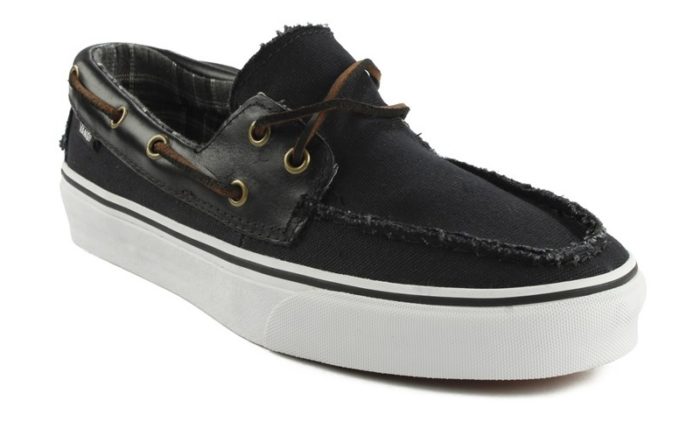
Boat shoes are a must for any boat ride. You don’t want to be skidding around on the deck in inappropriate footwear but at the same time you want to be comfortable. These are often called deck shoes as well, and they are very close to loafers with the addition of laces.
You’ll definitely see people in loafers on yachts but loafers don’t have siped soles, which means they aren’t textured to provide the proper grip on deck. If the yacht is going to be actually out there sailing and moving on the water, you want deck shoes.
Some people wear flip flops and that may be fine for a casual day with friends.
Accessories

You should be wearing sunglasses on a boat whether or not its a yacht just because you want to keep your eyes protected from dangerous UV rays and the glare off of the water. Polarized shades are the best but anything is better than nothing. A nice pair of aviators won’t look out of place, or some Ray Bans can be great as well.
Yacht Styles for Women

Traditionally the difference between men’s fashion and women’s fashion on a yacht has been one of practicality. In the past, men were the ones always controlling the yacht and women were passengers. Boating has a somewhat shady history of not being friendly to women, you’ll recall. And for that reason women were mostly seen wearing swimsuits and lounging on yachts. But if you’re a woman running the boat, you’ll likely want the same freedom and comfort that a man in a simple shirt and shorts is enjoying.
Now if you’re not piloting the boat and instead are just around to enjoy a yacht party, then swimsuits tend to be the order of the day and potentially some kind of wrap or cover up as well. Basically whatever feels most comfortable and appropriate to the occasion.
Things like kaftans, sundresses, and various wraps and coverups that would work poolside or at the beach when you’re not in the water are just as welcome on a yacht and won’t look out of place at all. A knee length summer dress is something you’d likely see on any yacht.
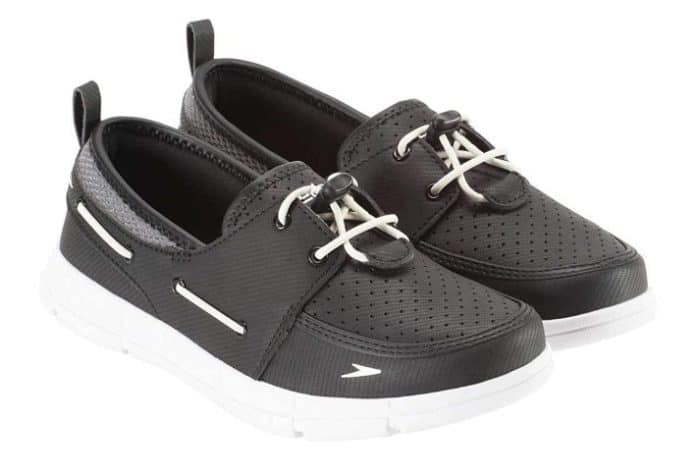
Like men, you can get a good pair of women’s boat shoes that look a little more elegant if that’s what interests you, and they’re a good investment. Again, a boat shoe is less about appearance than function when the boat is actually in motion and you want something that gives you firm footing, which a boat shoe can do.
Both hats and sunglasses are more than appropriate for women on a yacht and offer the added protection from the sun that you’re going to want anyway. You won’t look out of place and you’ll be doing your eyes and skin a favor by keeping them away from harmful UV rays. Remember the sunscreen as well.
What to Wear to a Yacht Party

Now a yacht party is a different sort of monster than just being on a yacht. This will likely be a more formal occasion and that means dressing up a little. Ditching the shorts for this is probably a good idea.
Unless you have been specifically told this is a formal wear event, black tie affair don’t dress for one. Most yacht parties aren’t that formal because, well, they’re on boats. Leaning into the boat aspect is a better option. A suit would be as formal as you should expect unless told something ultra formal like a tuxedo is expected. But most yacht parties are likely to be a little more casual than that.
Consider dress pants and a button down shirt or a blazer. A sport coat and tie, maybe with a matching jacket, is also very common for parties on yachts.
A more formal occasion, a wedding for instance, will probably clue you in as to what would be expected in terms of dress. And, hopefully, your hosts are going to be gracious enough to make it clear if you do need to dress to the nines.
You can find some more formal boat shoes and, if things get a little fancier, some dress shoes that don’t have slippery soles will work as well.
Are Cocktail Dresses Appropriate for Women?

At the more formal end of things, a classy yacht party could very well require you to wear a cocktail dress or in rare cases even some kind of fancy gown. Cocktail attire is a little less formal than evening wear and more suited for a casual affair. Hopefully it will be made clear before you agree to show up just how formal the event is, but it’s definitely not unheard of. If it’s a party at night, and you’re going to be moored out on the water with a view of the city, for instance, a dress would be well within reason.
If things aren’t so formal as a boat wedding, then consider a wide-legged pant, a romper, a wrap skirt or really anything you’d wear to a gathering on a beach, or pool type party.
One thing you want to remember when attending any event on a yacht is to not wear heels. I’ve seen it in person and it’s a bad idea. Not that you’re guaranteed to lose your balance, but the odds are definitely leaning towards it. It’s an accident waiting to happen, so stick with flat shoes.
Are all Boat Parties the Same?
People can throw a boat party for weddings, anniversaries, charity events, retirements and probably a hundred other things. Don’t let the fact that it’s on a yacht throw you off if you’ve never attended one. A party is a party, after all.
If you’re unclear of expectations, feel free to ask. Consider bringing a sweater or light jacket just in case it gets cold and remember that good footwear is extra important on a yacht so you keep your balance. Whether it’s ultra formal or super casual, that will never change.
The Bottom Line
Classy but casual is often an easy way to approach dressing on a yacht. If it’s a party, you may need to step it up a notch, but that will really depend on the party itself and what your hosts expect. Consider linen and other very light, breathable fabrics. Remember boat shoes are the best idea to keep your grip on deck, and don’t forget swimsuits as well as sunglasses and other sun-protection gear.
My grandfather first took me fishing when I was too young to actually hold up a rod on my own. As an avid camper, hiker, and nature enthusiast I'm always looking for a new adventure.
Categories : Yachts
Leave a Reply Cancel reply
Your email address will not be published. Required fields are marked *
Save my name, email, and website in this browser for the next time I comment.
More in Yachts

Lonian Yacht: An Insider's Guide

A Closer Look at the Madsummer Yacht
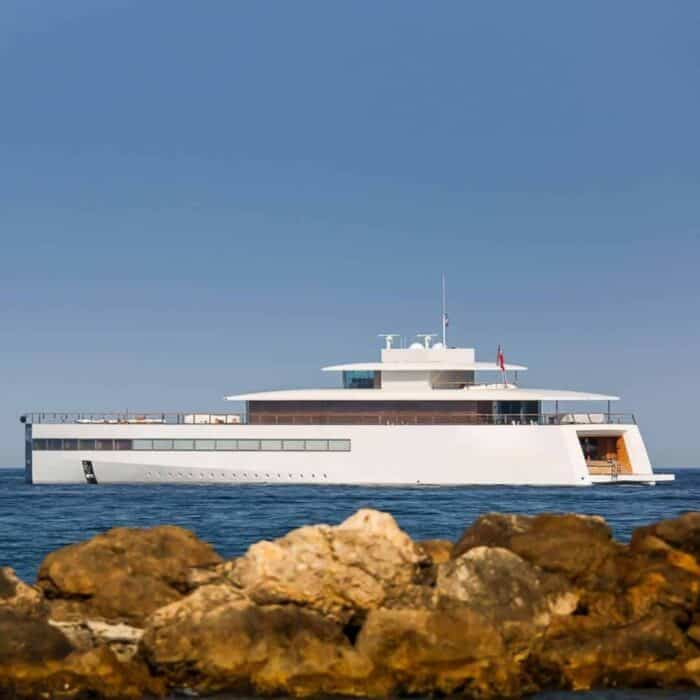
Your Insider’s Look at Steve Jobs’ Yacht Venus

Your Insider’s Guide to the Aviva Yacht

The People’s Poncho Review and Ratings

Oru Lake Kayak Review

What Is A Gunwale?

131 of the Best Hawaiian Boat Names

167 Patriotic Boat Names
About boatsafe.
Established in 1998, BoatSafe is your independent guide into the world of boating, fishing, and watersports. We provide expert insights and detailed guides to help you find products tailored to your needs and budget.
Contact Boatsafe
- Address: 4021 West Walnut Street. Rogers, AR 72756
- Phone: (479)339-4795
- Email: [email protected]
Site Navigation
- How We Test
- Corrections Policy
- Privacy Policy
- Terms & Conditions
- Editorial Policy
- Affiliate Disclosure
Our Reviews

All content is © Copyright 2024. All rights reserved.

What to Wear to a Yacht Party – Your Dress Code Guide!

Dressing for a boat party is different than any other kind of event. While you have good times, you need to look great and most importantly, feel comfortable in your clothing. Also, you need to take some safety precautions into consideration as boats have unpredictable movements. After all, you want to have an exceptional time! Most yacht events take place in the summer, so you need to dress accordingly to the weather. What will be your event about? A Day party? A night party? In this article, you will find out exactly what to wear to a yacht party.
Table of Contents
Most parties are held during the day. You will probably spend most of your time enjoying dancing on the deck with a cocktail in your hand or swimming in the water, so you need an attire comfortable to wear and easy to pull on/off!
- Choose a swimsuit or a bikini to wear under your clothes. Make sure to pick a color that suits your attire.
- A flowy dress, short skirt, airy beach pants, or a short over your swimsuit will be perfect for this kind of party. You can also match them with a summary layer or a loose blouse.
- As for the shoes, flat sandals with soft soles will get you out of trouble. High heels are an absolute no-no as they are not safe on a boat and can scratch the deck.
Accessories
- You should be wearing sunglasses during the day, but not just any, you need polarized sunglasses to protect 100% your eyes from the UV rays of the sun
- Try to store your stuff like sunglasses, makeup, and hair clips in a waterproof handbag. It could be useful if it gets wet!
- Makeup Use only waterproof makeup during the day
- Opt for a tight swimsuit if you plan to wear it under your cloth. Otherwise, there are stylish good looking swimwears that look more like dress shorts, which you can match with loose shirts and a light jacket
- The most appropriate clothes for men are loose pants, boating shorts , and jean shorts assorted with light shirts, or polo and a loose vest.
- Avoid flip-flops and opt for nonmarking boating shoes , like Sperry. These come in a wide variety of styles to choose from and will match any outfit. With these shoes, you can walk in complete tranquility without worrying about hurting your feet or slipping on the wet deck.
- Opt only for a waterproof watch if you intend to wear one. You don’t want to bother taking it off, and on each time you go for a swim.
- As mentioned for women above, the same concept applies to men. A good pair of polarized sunglasses is a must!
Night Party
In the evening, you can still wear casual clothes but a bit more dressy. The thin, soft, and flowy textile is more appropriate for night parties. Bring a light jacket with you. It gets cooler in the evening.
- Princess waist dresses, skirt with flounces, loose pants assorted with dressy tops are the perfect choices. A chic option will be to wear a color-coordinated wrap or a jacket. A long dress harmonized with a nice pair of chandelier earrings is a great option if you opt to dress chicly
- Here, again, avoid high heels. Flats and low-heeled sandals will be perfect and will suit any outfit.
- Men should wear comfortable pants with a dress shirt or even a polo, and a light jacket on top.
- I will say it again, the best shoes to wear on a boat is Sperry, but hey, this is your party, you can pick any other type of boat shoes as long as they are non-marking.
- Girls, even if high heels elongate your legs and make you more attractive. It is preferable to avoid wearing them on a boat. Opt for boating shoes !
- Mosquitoes love humidity, especially in the late afternoon. You should bring a repellent with you. You Never know.
- Try to use only waterproof accessories
- The sun beat down during the day, bring sunscreen and wear long sleeves to protect you from the sun
- You can wear long dresses but not too long to avoid tripping.
- If you are unsure about the type of party, ask the person that organizes the event on the yacht what is and not appropriate.
- It’s easy to get dehydrated on a yacht because you don’t feel the sun as you are most of the time in the water or on the deck and at sea, there are always winds. PS, wear a hat and drink a lot of water!
Final Words!
Now that you know how to dress for a day and night party on a yacht, all you need to do is have a good time!
Want to Know More about Dress Code?
Subscribe to Cruising Sea newsletter to receive every two-week the latest post straight to your inbox!
More articles
- What to wear for sailing
- What to wear for a boat party at night
- What to wear on a boat ride
- What to wear to a boat party
What about you? Have you been to a yacht party? If so, feel free to share your experience in the comment below.

Daniella has been passionate about travel, the sea, and nature for many years. As a child, she frequently traveled throughout the Mediterranean and continued with her journeys throughout her adult life.
Her experiences have created the desire within her to share her love for traveling with other passionate and adventurers who want to discover beautiful horizons and new cultures.
8 thoughts on “What to Wear to a Yacht Party – Your Dress Code Guide!”
I have a yacht party to go to and I really needed this guide to make sure that I will take whatever I need. It is really easy to forget a few things and later regret once you reach the party. However, in the evening yacht parties, is it okay to wear heels?
Oh, that’s great, I am sure you’ll have fun!
Yes, I agree with you, it is easy to forget things. This is why it is important to write down what you need before you go:) Once you are on the boat, you cannot go back unless you live nearby.
You cannot wear high heels on a boat, there are few reasons to this. It is not comfortable, not safety and it can damage the deck:) You wouldn’t want this happen.
Thank you for the comment and wish you to have unforgettable moments on the yacht party!
Have a wonderful day!
Hi Daniella, I really like that you divided your article into parts like what to wear in the day or in night! And that you pay attention to both men and women is great, too! often, there are only guides for women. Keep going on as active as you are! Your website is catchy!
Thank you for the kind comment, I really appreciate:) Whats women without men and whats men without women? We can’t live without each other:), Have a wonderful day!
I have been on a yacht for a dinner party sailing in heels! It was a bit troublesome especially going up and down stairs.
Is this post geared toward Northeast US or somewhere else in the world? Here in Florida, it is absolutely okay to wear flip flops to a day yacht party as long as they aren’t cheap! Sperry’s or other boat shoes are acceptable at night for men if the rest of the outfit is semi-casual.
Thank you for the comment:)
Yes, this article concerns everyone. No matter the country. Of course, you can wear flip flops , you can even go barefoot if you wish to, but the risk of hurting your feet or slipping on the deck is much higher. Most charter companies require wearing boat shoes because if something happens and someone didn’t follow the guideline, then the company or the owner of the boat will not be covered by their assurance.
However, Sperry’ shoes are the most recommended on boats as they are comfortable and stylish.
But, again, as long as it is non-marking shoes, you are good to go!
I like how you said that the most appropriate clothes for men are loose pants. My wife and I are planning to go on a trip and we have no idea what to wear. I will definitely share this article with my wife to give her ideas of what to wear in case we go to a boat party.
Hi Dereck, This would be a great idea! I am sure your wife will find something nice to wear:) Thank you for the comment and wish you a lovely day!
Leave a Comment Cancel reply
By using this form you agree with the storage and handling of your data by this website. *
Moscow airport: Moscow Vnukovo International Airport ( VKO )
Moscow vnukovo international airport.
Vnukovo International Airport is Moscow's oldest airport and one of the three international airports near the Russian capital (the other two are Domodedovo International Airport and Sheremetyevo International Airport ).
Just like other airports Vnukovo Airport is implementing major expansions. In 2011 the new domestic Terminal A was opened. The entire expansion and modernization plan will be completed in 2015.
IATA airport code: VKO ICAO airport code: UUWW
Moscow Vnukovo International Airport 1st Reisovaya Str 12 119027 Moscow Russian Federation
Telephone, fax, email
Telephone: +7(0)495 937 5555 Fax: +7(0)495 436 2503 Email: via contact form
Airport codes
- Website Moscow Vnukovo Airport
- Arrivals and Departures
Related pages
- Car rental Russia Car rental Russia General information and regulations In order to rent a car (at most car rental companies) you have to be 25 years old and have held your license for 2 years. It is recommended to get an International Driver's License be...
cal yacht club rowing

California Yacht Club (CYC)
by evandiaz | May 19, 2023 | Yacht Club Members

California Yacht Club (CYC) calyachtclub.com 4469 Admiralty Way Marina del Rey, CA 90292 (310) 823-4567 Fax:(310) 822-3658
Total: 950 members – 33% power, 63% sail, 4% rowers.
Facilities: Bar open Wed. thru Sun 1000 to 2400. Dining room open Wed.- Sun for lunch and dinner (breakfast on Sat. & brunch on Sun.) Snack bar open every day from Memorial Day to Labor Day 1000 to 1630. Heated Pool and Paddle Tennis Courts available to members and their guests. 320 member slips (25’ to 120’), 100+ dry storage slips (up to 25’), two 2-ton hoists and launch ramp. Guest docks are first come, first served, but call for reservations. First night free for reciprocal club members. CYC monitors channel 68.
Junior program: Year round. Junior Sailing and Rowing Program. Open to all youths in the community (ages 8-18). Full time Junior staff.
Comments: Active power, sail and rowing fleets. Family friendly Club with a full schedule of races, cruises, and social activities.
Recent Posts
- CHANGE OF COMMAND
- CHANGE OF COMMAND AWARD
- SCYA Announces the 2024 Club of the Year Criteria
- Opening Day Calendar Posted
- King Harbor Yacht Club (KHYC)
Recent Comments
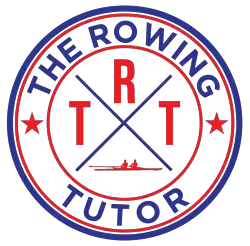
The 10 Best Rowing Clubs in Los Angeles
Los Angeles is a city with a rich history in rowing. Rowing clubs have been around in Los Angeles since the late 1800s, and many of them are still going strong today. In this blog post, we will take a look at the top 10 rowing clubs in Los Angeles and what makes them so successful. We will also discuss the different types of rowing that these clubs offer and how you can get involved. So if you’re looking for a place to row in Los Angeles , be sure to check out one of these great clubs!

Table of Contents
1: Los Angeles Rowing Club
The Los Angeles Rowing Club was founded in 1994 and is located in Marina del Rey, California. They are a non-profit organization that is open to the public. The LARC was created with the mission to promote the sport of rowing, and they do so by providing quality rowing programs for all levels of experience. They offer both sweep rowing and sculling programs, as well as learn-to-row classes. The LARC is also home to several competitive teams that compete at the local, state, and national level.
Some of their most notable achievements include winning the US Rowing Club National Championship in 2004 and sending two athletes to the Olympic Games in 2008. In addition to their competitive teams, the LARC also has a strong community outreach program that provides free rowing lessons to underserved youth in the Los Angeles area. The LARC is truly a place for everyone, whether you’re a seasoned rower or just looking to try something new.
2: Lions Rowing Club
The Lions Rowing Club in Los Angeles, USA has a beautiful and vastly successful history. The club was established in 1887, making it one of the clubs that paved the way for the newer clubs to arrive in the 1900s. In its early years, the club was based out of a boathouse on the Los Angeles River, but today it is located on Grand Canal in Long Beach. The Lions Rowing Club has produced many national champions and Olympic champions over the years, including Olympic gold medalist John Larissa and world champion rower Sarah Trowbridge.
The club is also linked to several colleges and universities in the area, including UCLA, USC, and Pepperdine. As a result of its successes both on and off the water, the Lions Rowing Club is widely regarded as one of the premier rowing clubs in the United States.
3: Long Beach Rowing Association
The Long Beach Rowing Association Rowing Club in Los Angeles, USA has an extremely interesting history. Founded in 1872, the club started to attract rowers in vast numbers. Throughout its history, the club has been dedicated to promoting the sport of rowing and developing its members into successful athletes. Today, the club is home to a diverse group of rowers of all ages and abilities. The club offers a variety of programs for both beginners and experienced rowers, making it one of the most inclusive rowing clubs in the area.
In addition to its excellent programs, the club is also linked to several colleges and universities, making it a great place for college rowers to train and compete. The Long Beach Rowing Association Rowing Club has a proud tradition of excellence and is committed to continuing to develop world-class rowers.
4: California Yacht Club
The California Yacht Club Rowing Club in Los Angeles is a rowing club with an impressive pedigree. Founded in 1994, the club has been home to many famous and successful rowers over the years. The club is located in Marina del Rey, just a short drive from downtown Los Angeles, and it remains one of the premier rowing clubs in the country.
The club is closely linked to UCLA, which is just down the road, and many of its members are student-athletes who row for the university. In recent years, the club has produced several Olympians and national champions, cementing its place as a top rowing destination in the United States.
The Importance of Hydration When Rowing
5: Metropolitan Rowing Club
The Metropolitan Rowing Club in Los Angeles has an interesting and storied history. The club was originally founded in 1884, making it one of the first rowing clubs to welcome people through their doors. In its early years, the club was based out of a boathouse on the banks of the Los Angeles River. The club quickly gained a reputation for excellence, and in 1886 they won their first National Championship. In the years since, the club has produced numerous national champions and Olympic rowers.
Today, the Metropolitan Rowing Club is based out of a state-of-the-art facility in Marina del Rey. The club is open to rowers of all ages and abilities, and they offer a variety of programs for both recreational and competitive rowers. Whether you’re looking to get fit, compete at the highest level, or just enjoy a day on the water, the Metropolitan Rowing Club is the perfect place for you.
6: Whitehall Spirit
The Whitehall Spirit Club in Los Angeles was founded in 1997. The club has produced many national and international champions, including two Olympic gold medalists. The Whitehall Spirit Club is also linked to several colleges and universities, making it a great place for students to learn and compete. If you’re looking for a top-notch rowing club with a rich history and plenty of success, the Whitehall Spirit Club is the perfect choice.
The Row LA Rowing Club in Los Angeles is a historic rowing club that was founded in 1985. The club is based out of Marina del Rey and is one of the most well-known rowing clubs in Southern California. The club is also linked to several colleges, including the University of Southern California and UCLA. The Row LA Rowing Club is a respected and prestigious rowing club that has a rich history and tradition of success.
8: Rivanna Rowing Club
Rivanna Rowing Club is located in Los Angeles, USA. The club has produced several successful rowers, including Olympians and national champions. The club is also linked to a college nearby, which provides access to facilities and equipment. The club has a strong focus on developing young rowers and providing them with opportunities to compete at the highest level.
The club has a rich history and tradition of winning, and this is reflected in the success of its members. Rivanna Rowing Club is a highly respected and well-known club, and it continues to produce champions and contribute to the sport of rowing.
9: Open Water Rowing Center
The Open Water Rowing Center is located in Los Angeles, USA and is a rowing club that is open to the public. The club has produced several famous and successful rowers, such as Olympian rower Sue Enquist and national champion rower George Plimpton. The club is also linked to several colleges nearby, such as the University of Southern California and UCLA.
The club has been very successful in producing Olympic champions and national champions. In addition, the club has also been successful in developing young athletes into professional rowers. The Open Water Rowing Center is an excellent place for anyone interested in learning how to row or for anyone looking to improve their rowing skills.
10: Duluth Rowing Club
Founded in 1966, the Duluth Rowing Club is a popular club in LA. Located in Los Angeles, the club has produced several national and international champions, including two Olympic gold medalists. The Duluth Rowing Club is also affiliated with the University of California, Los Angeles, one of the top rowing programs in the country. As a result, the Duluth Rowing Club is considered one of the premier rowing clubs in the United States.
The Duluth club has produced numerous national champions and Olympic medalists. In addition to its competitive success, the Duluth Rowing Club is also known for its beautiful rowing facility, which overlooks downtown Los Angeles. The club is open to rowers of all levels of experience, from beginners to experienced athletes. Whether you’re looking to compete at the highest level or simply enjoy a leisurely row on a beautiful day, the Duluth Rowing Club is the perfect place for you.

Application
Cyc jr. rowing inquiry form.
We are looking forward to hearing from you
CYC Rowing Participant Information
California Yacht Club is located at: 4469 Admiralty Way, Marina del Rey, CA 90292 .
- If driving, please park in the CYC visitor’s lot adjacent to Admiralty Way and accessed from the driveway which is between Café del Rey and the Warehouse Restaurant.
- Once parked, proceed by foot and enter the member’s parking lot by passing by the main entry gate.
- After passing the main entry gate, continue walking, bearing hard left along the chain link fence at the north end of the large parking lot until it ends at a dark green shade cloth covered rowing shed.
- We meet, at the rowing sheds which are opposite the tall bamboo plants separating the Warehouse Restaurant and CYC.
If you will be late or unable to attend, PLEASE text (and identify yourself) as soon as possible: Craig Leeds 310.948.1456 and/or Anna Wilczek 818.523.2987.
If the main entry gate is locked when you arrive, please text us.
Participants should bring: athletic shoes (running shoes), socks, shorts, shirts, sunscreen, water, a change of clothes,
towel and personal items (hats, sunglasses, orthotics, inhalers, etc).
To keep all the gear organized, a small duffel bag or back pack is recommended.
Clothes should fit reasonably tightly so while rowing, hands won’t get caught in shirts and shorts won’t get caught in the sliding seats.
Dressing in layers and using wicking type fabrics is recommended.
Here are some links that will be helpful (you may need to copy and paste into a browser):
- This is a video from Concept2 regarding technique on the rowing machine which is where we begin. Please watch the video before the first session.
- World Rowing
- This is a great pictorial representation of the rowing stroke as taught at CYC:
- This is a great video showing Australian world champion scullers and sweep rowers in a beautiful setting.
- Here’s a link to the US Women winning the quad at the 2015 World Championship:
Please don’t hesitate to ask for more information.
California Yacht Club-Junior Rowing

2021 J/70 WORLDS : CHAMPION
Peter duncan and relative obscurity return to the podium as j/70 world champion at cal yacht club.

2021 J/70 WORLDS : CORINTHIAN CHAMPIONS
The ducasse sailing team of santiago, chile, triumphed in the corinthian division..

2021 J/70 WORLDS : ONE PRO CHAMPIONS
Threatening minors wins one pro..

PETER DUNCAN AND RELATIVE OBSCURITY WIN THE 2021 J/70 WORLDS
Peter Duncan and Relative Obscurity Return to the Podium as J/70 World Champion at California Yacht Club
Peter Duncan’s Relative Obscurity has prevailed over 60 other teams and challenging wind conditions to capture the 2021 J/70 World Championship title at California Yacht Club, today. In a five-day series that tested the skill and patience of top-notch competitors from 11 nations, Duncan – sailing with Willem van Waay, Morgan Trubovich and Victor Diaz de Leon – secured a top five position in the beginning of the regatta and never let go.
“I’m elated!” said Duncan as he returned to the dock, bustling with activity. “That was a tough day out there. We didn’t start very well but had a bit of a break with a header on the first run of the second race that let us get close to everybody and sail through some folks we need to sail through,” he explained. “We have a lot of fun onboard – joke and laugh and keep it light – and that worked in our favor when we had to grind through. Everybody knows what their job is, and these guys do them exceptionally well.”
WELCOME TO THE J/70 WORLDS 2021
Cal Yacht Club is proud to host the 2021 racing of the J/70 Worlds.
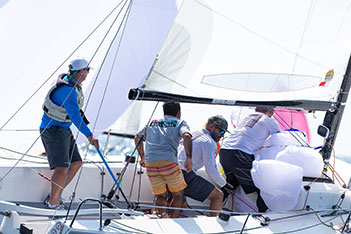
RECAP / NEWS
Peter Duncan’s Relative Obscurity has prevailed over 60 other teams and challenging wind conditions to capture the 2021 J/70 World Championship title at California Yacht Club, today.
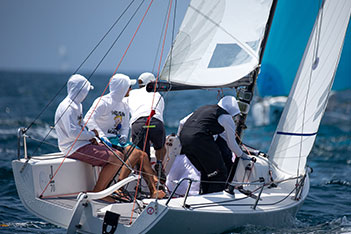
DAILY PHOTO / VIDEO
Threatening Minors sailed by Jordan Janov, Grant Janov, Ryan Janov, Reddin Kherli and Willie Mcbride, took honors.
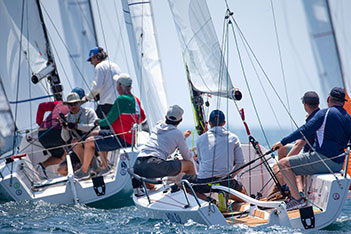
SOCIAL MEDIA
The J/70 is 22.75 feet with an 11 foot long cockpit and deck-stepped carbon mast for easy rigging and stepping.
The crew shall consist of 3 or more persons. The number of crew shall not be changed during an event.
The J/70 Class has been created as a strict one-design Class where the true test when racing is between crews and not boats and equipment.
Well, chances are it will not be like Day 1 of the Pre-Worlds. Maybe more like Day 2. But then again, this is MdR—anything can happen.
SANTA MONICA BAY
The Santa Monica Bay is dominated by an onshore breeze that typically doesn't kick in until around noon. Watch out for the oscillations!
CAL YACHT CLUB
CYC has a long history of excellence in race management. We host everything from Championship-level regattas to more casual weekend random leg races.
SAY WHAT? : THE J/70 WORLDS 2021
"Cal Yacht Club did an awesome job."
Peter Duncan | Relative Obscurity
“It was very cool that there were four boats who could have won this thing in the last race...”
CALIFORNIA YACHT CLUB
Founded originally in 1922 by yachtsmen including Charles Hathaway and Frank Garbutt, the California Yacht Club's first clubhouse was built in Wilmington, CA in Los Angeles' inner harbor (berths nos. 192 & 193), just opposite Terminal Island. Close by were the yards of renowned yacht builders Wilmington Boat Works and Fellows & Stewart (second location). In the club's inaugural year, member yachtsmen formed the first Star class fleet on the Pacific coast. Involved in all aspect of the sport, the club has encouraged a variety of pleasure boating, first in Los Angeles Harbor, and now in Santa Monica Bay.
Over the years CYC has been the club for numerous prominent yachtsmen including Merritt Adamson, Pierpont Davis, Roy E. Disney, J. Paul Getty, Samuel K. Rindge, William Stewart, James Kilroy and navigator extraodinaire, Ben Mitchell. Movie mogul Cecil B. DeMille once served as a trustee of the club and donated a gold cup for powerboat racing. Comedy film producers Al Christie and Hal Roach were both deeply involved in club activities in the twenties and thirties.
Power boating has always been a part of the club's mission along with sailing and rowing. The first CYC powerboat regatta was run in 1922 and the winner was none less than the famous Gar Wood in his Harmsworth Trophy winner Miss America. CYC's Catalina Challenge race for powerboats has been run annually since 1922.
A fire on Thanksgiving Day, 1930 severely damaged the original clubhouse although the heroic efforts of some members saved all of the trophies.
In 1932, several CYC members figured prominently in the sailing events at the Los Angeles Olympic Games. Owen Churchill, inventor of the SwimFin, won the gold medal in the Eight-Metre Class with Angelita.
Unfortunately, the club was forced to relinquish its key location in the East Basin to the Coast Guard for the war effort in 1941. A dormant period followed.
With the development of the long-awaited Marina Del Rey in the early 1960s, the club reformed in '63 and elected Fritz Overton, Commodore in 1923, as head of the "new" club. In 1966, they opened the modern clubhouse and marina facility that is their home today. The radial design of the building allows sweeping panoramic views of the marina.
The California Yacht Club is owned by the Hathaway family, owners of the Los Angeles Athletic Club. The annual "Great Catalina to Marina del Rey Rowing and Paddling Event" pays tribute to Charles Hathaway's row in 1976 from Catalina Island to the club on his 50th birthday.
The unique combination of private ownership and annually elected flag officers has worked well to establish California Yacht Club as one of the outstanding clubs in the nation.
‘Nothing left’: After California Yacht Club fire, residents mourn loss of a beloved spot

- Show more sharing options
- Copy Link URL Copied!
In an instant, an overnight seaside blaze engulfed decades’ worth of boating trophies, historical artifacts and cherished memorabilia at the California Yacht Club in Marina del Rey on Monday.
Fire crews attempted to control the blaze as heavy smoke and flames consumed the two-story building. By the time they had subdued the fire two hours later, only the skeletal remnants of the clubhouse were left standing.
John Myers, senior vice president of the club, said the blaze had been reported by an employee working late in the clubhouse Monday night. The fire spared the remainder of the facilities on the ground, including the docks and the yachts moored there. But the clubhouse, and particularly its second floor, was all but wiped out.
“We are working closely with the Los Angeles County Fire Department in their investigation of the cause of the incident and will share those findings when they become available to us,” Myers said.

Members are left mourning, comparing the loss to the death of a loved one.
Jennifer Dakoske Koslu awoke in Rancho Mirage at 5:30 a.m. Tuesday, before the sun had risen, to find her phone inundated with text messages from club members.
The first message she read simply stated, “The CYC is gone.”
“As soon as I opened my phone, it went to a link on the Citizen app and saw a video of the club burning. I was shocked,” Dakoske Koslu said.
For the last 24 years, Dakoske Koslu and her family have been dedicated members of the CYC, whose clubhouse is a few miles away from their home in Playa del Rey. She said it is where her children have grown up, familiarizing themselves with every inch.
“I remember taking my son there on the Fourth of July when he was just 3 weeks old. It was the first place we went with him as a newborn,” Dakoske Koslu said.
She and her husband biked to the club in the aftermath of the fire, greeted by the charred remains of the building on Wednesday afternoon.
“The destruction is unbelievable. It’s clear that the fire was burning intensely on the second floor,” Dakoske Koslu said. “There’s nothing left.”
The second floor once housed a collection of the club’s prestigious racing trophies, kept on display for members and visitors. The fire melted all but a single salvageable California Cup. Most notably, the priceless King of Spain Trophy, acquired in 1929 from King Alfonso XIII, was lost.
Additionally, the club lost cherished photographs of every past commodore, a significant position within a yacht club. Members said they didn’t know if anyone had digitized the images of the commodores or of the club’s founders.
“We would tell yachting stories at the bar around lots of memorabilia, and the yachting artifacts behind the bar are all gone now,” Tom Materna said. “The yacht club provided us a facility for the off-the-water celebrations after hard-fought competition on the water.”

The CYC dates to the early 1920s, started by boat owners from the Los Angeles Athletic Club and other yacht clubs. The Board of Harbor Commissioners approved the first clubhouse in 1922, designed by famed architect Edwin Bergstrom, co-designer of the Pentagon.
In 1965, the yacht club submitted a proposal for an all-encompassing $1-million, two-story, 10,000-square-foot clubhouse on four acres off Admiralty Way. Members envisioned a state-of-the-art facility with 170 boat slips, a guest dock, a small boat hoist and a dry land storage facility for boats. The clubhouse that resulted was dedicated on June 10, 1967.
Then-Commodore William A. DeGroot Jr. told The Times that the triangular parcel of land on which the clubhouse still sits is a “perfectly logical place for a club facility, and a commanding view down the main channel of the marina.”
Though the building has historical significance to its members, it does not have a historic designation, according to Linda Dishman, president of the Los Angeles Conservancy.
“We are deeply saddened by this tragedy and so grateful for the outpouring of support from the community and our members,” Myers said. “CYC has been a beacon for the nautical community for the past 101 years.”
Materna, 68, first found out about the fire through Facebook as friends posted videos and photos of the damage Tuesday morning. Then he began receiving calls and text messages from friends.
“Everybody woke up in the morning and realized we’d lost a significant part of the sailing community,” Materna said.
His connection to the club dates back nearly 52 years, to when he was just 16 years old. After spending 30 years sailing professionally with Hobie Cats, mainly racing catamarans — a watercraft with two parallel hulls of equal size — he recently served as a crew member on other club members’ racing yachts.
The CYC is pivotal in the boat racing community, organizing and hosting events such as the Optimist National Championship and Junior Olympic trials, Materna said. He fondly remembers the hundreds of people from across the globe converging on the marina for similar events.
The main topic among members now is what’s next for the club. Dakoske Koslu noted that the club’s ownership changed over the last few years, and many are unsure and concerned about the club’s continuation after the fire.
The club relocated to the marina in 1967, leasing the land it sits on from the county.
“I don’t think the county has really valued the contributions of the California Yacht Club as an important part of the Marina. They value Trader Joe’s because it’s more money for them,” Dakoske Koslu said.
Dakoske Koslu said she’s seen numerous small marine-oriented businesses displaced from the marina, making way for more commercialized developments such as Trader Joe’s and Recreational Equipment Inc.
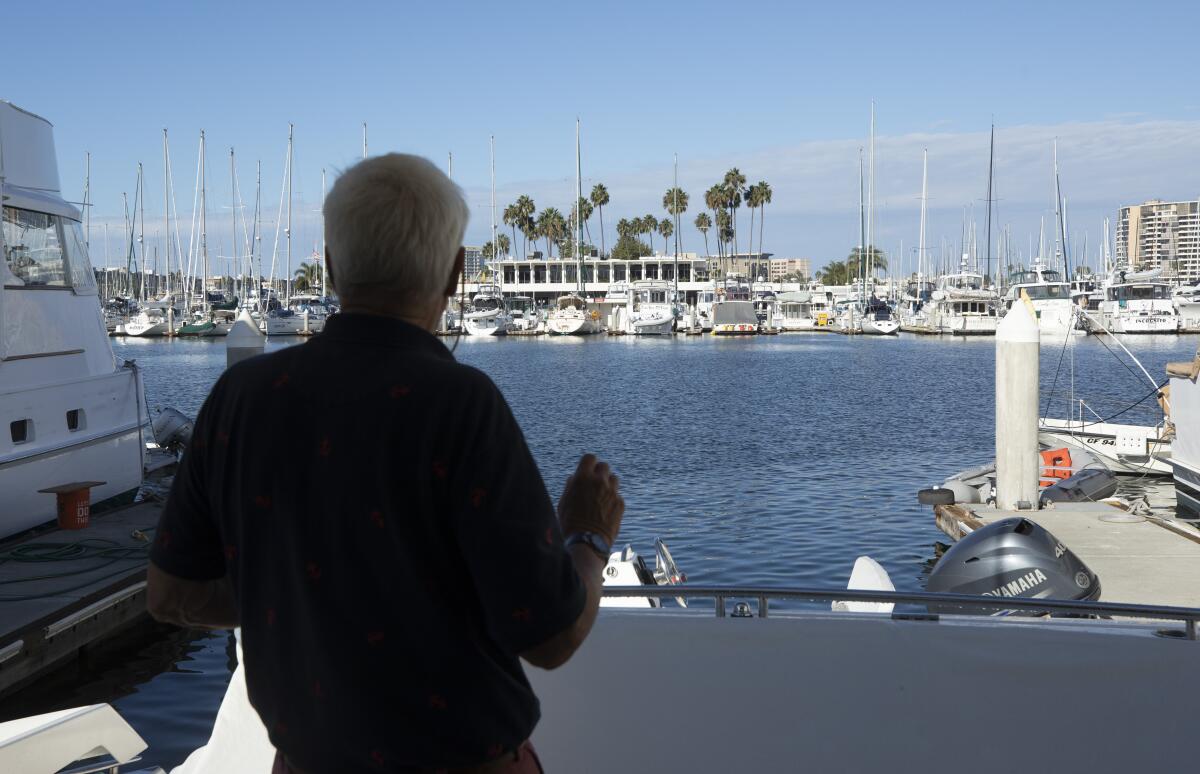
More to Read

Monterey Park shooting survivors dance again in sadness, solidarity: ‘Nothing can kill our spirit’
Jan. 22, 2024

Fire guts historic California Yacht Club in Marina del Rey
Dec. 12, 2023

After 24 days, officials declare Tustin hangar fire ‘fully extinguished’
Dec. 2, 2023
Start your day right
Sign up for Essential California for news, features and recommendations from the L.A. Times and beyond in your inbox six days a week.
You may occasionally receive promotional content from the Los Angeles Times.

Anthony De Leon is a 2023-24 reporting fellow at the Los Angeles Times. Born in Fresno to a Chicano family, he pursued his higher education in his hometown, earning an associate‘s degree in journalism from Fresno City College and then completing a bachelor’s in media, communications and journalism at Fresno State. He went on to complete his master’s in media innovation at the University of Nevada, Reno.
More From the Los Angeles Times

Migrant arrests are up along the border in California and dropping in Texas. Why?

The informant next door: A quiet L.A. life masked Kremlin ties for FBI source accused of lying about Bidens

Opinion: Should California schools stick to phonics-based reading ‘science’? It’s not so simple

She poured her heart into Arcadia’s Book Rack. Now the small bookstore is closing
Rowing club los angeles: everything you need to know.
If you’re interested in rowing and live in Los Angeles, you’re in luck. Los Angeles has a long history of rowing, and there are many rowing clubs to choose from. Rowing is an excellent way to stay in shape, meet new people, and enjoy the beautiful outdoors. In this article, we’ll take a closer look at rowing clubs in Los Angeles, their history, benefits, and how to join them.
History of Rowing Club in Los Angeles
Rowing has been a popular sport in Los Angeles for over a century, with the first rowing club, the Los Angeles Rowing Club, established in 1908. The club was founded by a group of rowing enthusiasts who wanted to promote the sport in Southern California. The first boathouse was located in the Venice Canals, and the club quickly gained popularity.
Over the years, many other rowing clubs have been established in Los Angeles, including the California Yacht Club, the Long Beach Rowing Association, and the Marina Aquatic Center. These clubs have played a significant role in promoting rowing in Los Angeles, and their members have achieved many successes in local and national competitions. Despite many challenges, including funding, maintenance, and environmental issues, rowing clubs in Los Angeles continue to thrive and attract new members.
Rowing is a low-impact, full-body workout that is suitable for people of all ages and fitness levels. Joining a rowing club in Los Angeles offers many benefits, including improving your physical and mental health, socializing with like-minded people, and competing in rowing events.
Health Benefits
Rowing is an excellent way to improve your cardiovascular health, build muscle strength, and burn calories. According to a study by Harvard Health Publishing, rowing burns more calories than running or cycling, making it an effective way to lose weight and get in shape. Rowing also helps to reduce stress, improve sleep quality, and boost your mood.
Social Benefits
Joining a rowing club in Los Angeles provides an opportunity to meet new people, make friends, and socialize. Rowing clubs often organize social events such as barbecues, parties, and team-building exercises, allowing you to connect with other members outside of the boat. Rowing also promotes teamwork, communication, and leadership skills, which can be applied to other areas of your life.
Next, we will discuss how to join a rowing club in LA and popular rowing clubs in the area.
The Benefits of Joining a Rowing Club in Los Angeles
Rowing is an excellent way to stay active and healthy, but joining a rowing club in Los Angeles offers many additional benefits beyond physical fitness.
Rowing is a low-impact, full-body workout that improves cardiovascular health, builds muscle strength, and burns calories. Regular rowing can help reduce the risk of chronic diseases such as diabetes, heart disease, and obesity. Additionally, rowing is an excellent way to improve flexibility and balance, which is essential for maintaining mobility as you age.
Joining a rowing club in Los Angeles provides an opportunity to meet new people, make friends, and develop a sense of community. Rowing clubs often organize social events such as barbecues, parties, and team-building exercises, allowing you to connect with other members outside of the boat. Rowing also promotes teamwork, communication, and leadership skills, which can be applied to other areas of your life.
Competitive Benefits
For those who enjoy competition, joining a rowing club in Los Angeles provides opportunities to participate in local and national rowing events. Rowing clubs often have teams that compete in regattas, races, and other events, giving members a chance to test their skills against other rowers. Participating in rowing competitions can be a fun and rewarding experience, and it can help you set and achieve personal goals.
How to Join a Rowing Club in Los Angeles
Joining a rowing club in Los Angeles is relatively easy, but there are some requirements you need to meet before you can become a member. Here’s what you need to know:
Requirements for Joining
Most rowing clubs in Los Angeles require that you be at least 18 years old and have a basic level of fitness. Some clubs may also require that you have previous rowing experience or complete a rowing class before you can join. Additionally, you may need to pass a swim test to ensure that you can safely navigate the water.
Application Process
To join a rowing club in Los Angeles, you will need to fill out an application form and pay a membership fee. The application form will typically ask for your contact information, rowing experience (if any), and emergency contact information. Once your application is approved, you will be given access to the club’s facilities and equipment. Some clubs may also require that you attend an orientation session to learn about the club’s rules and safety procedures.
Popular Rowing Clubs in LA
There are many rowing clubs to choose from in Los Angeles, each with its unique features, facilities, and programs. Here are some of the most popular rowing clubs in the area:
1. Los Angeles Rowing Club
The Los Angeles Rowing Club is the oldest rowing club in the city, founded in 1908. The club is located in a historic boathouse in the Marina del Rey harbor and offers programs for rowers of all levels, from beginners to advanced. The club has a competitive racing team, a recreational rowing program, and hosts many social events throughout the year.
2. California Yacht Club
The California Yacht Club is located in Marina del Rey and has a dedicated rowing program with a focus on competitive racing. The club has a state-of-the-art boathouse and equipment and offers programs for juniors and adults.
3. Long Beach Rowing Association
The Long Beach Rowing Association is located in Long Beach and offers programs for all levels, including recreational, competitive, and adaptive rowing. The club has a large boathouse and a fleet of boats, including singles, doubles, quads, and eights.
4. Marina Aquatic Center
The Marina Aquatic Center is located in Marina del Rey and is affiliated with the University of Southern California. The center offers rowing programs for USC students and the general public, including recreational and competitive rowing. The center has a large boathouse, a fleet of boats, and a team of experienced coaches.
In conclusion, joining a rowing club in Los Angeles is an excellent way to stay in shape, make new friends, and enjoy the beautiful outdoors. Rowing offers many health benefits, including improving cardiovascular health, building muscle strength, and reducing stress. By joining a rowing club, you can also develop teamwork, communication, and leadership skills, which can be applied to other areas of your life.
If you’re interested in joining a rowing club in Los Angeles, there are many options to choose from, each with its unique features and programs. We encourage you to check out the clubs we’ve listed and find one that suits your needs and interests. Remember, rowing is a lifelong sport that can be enjoyed at any age and fitness level, so why not give it a try and see what it can do for you? Join a rowing club in Los Angeles today and experience the benefits of this fantastic sport!

- CLASSIFIEDS
- NEWSLETTERS
- SUBMIT NEWS
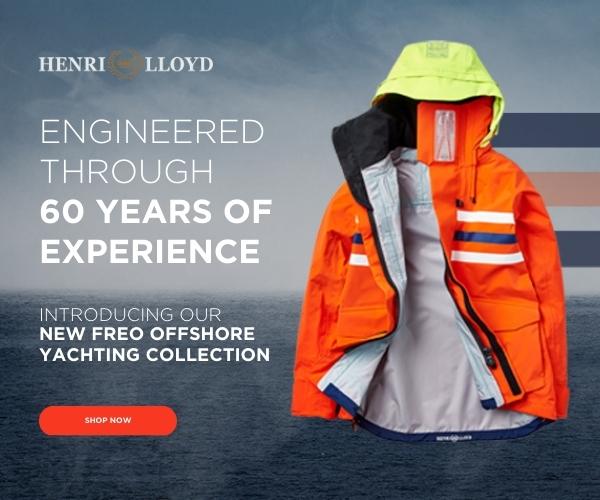
2024 Puerto Vallarta Race at San Diego Yacht Club - Day 1

Related Articles

News from non-English countries
"They fell to the ground with screams": Russian Guards fired at children single near Moscow - there is a casualty
2023-08-20T20:58:57.477Z
Highlights: In Russia, in the city of Elektrostal (Moscow region), during demonstrations, Rosgvardia soldiers began shooting at spectators with children from machine guns with blank cartridges. One child received serious damage from a rebounded cartridge case. In the video, a child can be heard crying and screaming violently. It is also interesting that Russia recently arranged a solemn farewell to Vladimir Shestakov, convicted for the murder of a child, who became a mercenary of PMC "Wagner" and was liquidated in the war in Ukraine.

In Russia, in the city of Elektrostal (Moscow region), during demonstrations, Rosgvardia soldiers began shooting at spectators with children from machine guns with blank cartridges.
So far, one injured child is known.
This was reported by the local Telegram channel of the Cheka-OGPU.
"Small children were clutching their heads screaming and falling to the ground. Not without injuries. The child received serious damage from a rebounded cartridge case," the report said.
One of the witnesses to the incident posted a video. It was her child who was shot by the Russian Guards. In the video, a child can be heard crying and screaming violently.
After the woman realized that her child had been wounded, she called her husband and doctor.
Meanwhile, Russian occupier Ivan Alekseev in the war in Ukraine after a drunken quarrel killed his colleague and tried to cover up the crime, saying it was the work of "Ukrainian saboteurs."
It is also interesting that Russia recently arranged a solemn farewell to Vladimir Shestakov, convicted for the murder of a child, who became a mercenary of PMC "Wagner" and was liquidated in the war in Ukraine.
- The suspect in the murder of a military volunteer was released from custody
- They will teach "patriotism": Russians in the occupied territories launch cadet classes
- Russia has created another training ground near Mariupol: how many soldiers are in the city
Source: tsn
All news articles on 2023-08-20
Lebanese economist: More than $5 billion in economic losses as a result of the Israeli bombing in the south 2024-02-22T19:51:47.940Z
Alexey Navalny died of natural causes, according to a medical report shown to his mother 2024-02-22T19:51:40.552Z
Ukraine deters powerful Russian aviation, but missiles are running out - Western analysts 2024-02-22T19:51:34.062Z
Rumen Petkov: Why is there no commission for Alexei Petrov, is he less murdered? - Politics 2024-02-22T19:41:54.985Z
Indexation of pensions: who is waiting for an increase and what is the maximum amount 2024-02-22T19:41:47.569Z
El presidente de Ecuador explica por qué cambió de idea y no va a triangular armamento con Estados Unidos 2024-02-22T19:41:40.057Z
The US announced sanctions against Russian oligarchs - US 2024-02-22T19:41:33.285Z
The threat is real: Zhorin on the "accession" of Transnistria to the Russian Federation and ways to solve the problem 2024-02-22T19:31:41.099Z
In pictures: Israel destroys Yasser Arafat's house in Gaza 2024-02-22T19:31:33.225Z
Yavor Bozhankov: Through the memorandum, we offer non-politicized figures - Politics 2024-02-22T19:22:34.868Z
Russia poses a threat to Western countries underwater — Bloomberg 2024-02-22T19:22:28.686Z
Resumption of flights from Ukraine: how long will it take and will anyone be able to fly 2024-02-22T19:22:20.429Z
Russia: Israel is deliberately working to expel the Palestinians from Gaza 2024-02-22T19:21:47.736Z
Kuleba is in Warsaw to ensure the smooth passage of military aid to Kiev - EU 2024-02-22T19:21:40.328Z
"Project": Putin repressed more people than Brezhnev over the past 6 years 2024-02-22T19:11:40.960Z
Peter Stano: Medvedev should take care of his psyche - US 2024-02-22T19:11:33.489Z
USA: Houthi missiles hit British ship in Red Sea - Middle East 2024-02-22T19:01:40.890Z
A second summit in Paris to exchange prisoners.. Will it succeed in stopping the Israeli war on Gaza? 2024-02-22T18:51:55.880Z
"The military should feel needed": how well-known activists offer to help the defenders of Ukraine 2024-02-22T18:51:46.860Z
The EP calls for an investigation into the spyware found on the phone of an MEP - EU 2024-02-22T18:51:39.323Z
The Armed Forces of Ukraine were hit by motorized riflemen from Transbaikalia near Volnovakha: at least 60 Russian occupiers were killed - mass media News/Politics 2024-02-21T01:01:05.199Z
Russia faces the biggest drone assault on its own territory since the start of the invasion of Ukraine News/Politics 2023-08-30T19:20:25.125Z
Mayor: Houses in Kharkiv survive Russian missile attack News/Politics 2024-01-08T04:35:43.208Z
Volleys from Grady, DRG hunting and drones: how do the residents of Semenivka live, who see Russia from the windows News/Politics 2024-01-25T17:38:35.096Z
Jiuba MMA. There is a piece | Two women beat each other, kicked their stomachs and screamed, and one person roared: The shirt was rotten Life/Entertain 2023-08-29T12:21:13.624Z
Friendly fire: in Russia, a soldier shot his friend while hunting News/Politics 2023-09-19T18:06:18.501Z
Massive UAV raid on Russia: there were reports of "arrivals" on military facilities News/Politics 2023-11-26T20:07:15.992Z
Ukrainian army: Russia launches large-scale attack on Ukraine News/Politics 2024-01-08T09:35:57.571Z
Change of tactics, dangerous drones and where a "major offensive" of the Russian Federation is expected: what is known about the situation at the front News/Politics 2024-01-08T11:06:34.048Z
AT&T customers report massive service outage. Verizon and T-Mobile also report failures News/Politics 2024-02-22T12:51:36.220Z
E-cigarette explodes in man's pocket - EU News/Politics 2024-02-22T10:32:47.254Z
Jordan airdrops medical aid into Gaza in cooperation with Britain News/Politics 2024-02-22T00:31:35.733Z
4 thousand victims in 2023. Africa hosts half of the global “terrorism” activities News/Politics 2024-02-22T00:41:24.515Z
Explainer: Battle of constitutional recognition and identity crisis! 'Don't want Rajasthani language' trending on Twitter News/Politics 2024-02-22T05:31:39.885Z
The State Department stated that the Russian Federation could not gain an advantage in the war against Ukraine News/Politics 2024-02-21T23:41:18.927Z
300,000 tons of sugar are coming - Bashe News/Politics 2024-02-22T12:32:38.087Z
Canada is going to help finance massive shipments of ammunition to Ukraine - CBC News News/Politics 2024-02-21T21:51:18.263Z
Air alert in the Israeli city of Eilat on the Red Sea - Middle East News/Politics 2024-02-22T05:01:49.555Z
Putin at the inauguration of the Future Games: “Sport should unite people” News/Politics 2024-02-22T04:42:06.063Z
© Communities 2021 - Privacy
- Sport Betting
- Yearly calendar
- Latest results
- English Español French Italiano Nederlands
TheSports.org
All sports Site

Field hockey - Dinamo Elektrostal Moscow

Hockey Club Dinamo Elektrostal is a field hockey team from Russia, based in Moscow. The club was founded in 1994.
Dinamo Elektrostal Moscow - Results
2021/2022 2018/2019 2017/2018 2017 2015/2016 2013/2014 2011/2012 2007/2008
Men's Euro Hockey League - Final Round - 2021/2022
Dinamo elektrostal moscow - identity.
- Official name : Hockey Club Dinamo Elektrostal
- Country : Russia
- Location : Moscow
- Founded : 1994
- Wikipedia link : http://nl.wikipedia.org/wiki/Dinamo_Elektrostal
Dinamo Elektrostal Moscow - Titles, trophies and places of honor
- Best result : First Round in 2021/2022
- Best result : 1st
- 1 times first in 2010
- 1 times second in 2009
- 1 times third in 2017
Postal Address
- © Info Média Conseil : 419 Rue Lemelin, St-François QC G0A3S0, Canada
- Vacation Rentals
- Restaurants
- Things to do
- Moscow Tourism
- Moscow Hotels
- Moscow Bed and Breakfast
- Moscow Vacation Rentals
- Flights to Moscow
- Moscow Restaurants
- Moscow Attractions
- Moscow Travel Forum
- Moscow Photos
- All Moscow Hotels
- Moscow Hotel Deals
- Moscow Motels
- Moscow Campsites
- Moscow Hostels
- Business Hotels Moscow
- Moscow Family Hotels
- Spa Resorts Moscow
- Moscow Luxury Hotels
- Romantic Hotels Moscow
- Moscow Green Hotels
- Moscow Ski-In / Ski-Out Hotels
- Moscow Resorts
- 5-stars Hotels in Moscow
- 4-stars Hotels in Moscow
- 3-stars Hotels in Moscow
- Radisson Blu Hotels in Moscow
- Hampton by Hilton Hotels in Moscow
- AZIMUT Hotels in Moscow
- Marriott Hotels in Moscow
- Novotel Hotels in Moscow
- Holiday Inns in Moscow
- ibis Hotels in Moscow
- Crowne Plaza Hotels in Moscow
- Rotana Hotels in Moscow
- Accor Hotels in Moscow
- InterContinental (IHG) Hotels in Moscow
- Radisson Hotels in Moscow
- Moscow Hotels with a Pool
- Pet Friendly Hotels in Moscow
- Moscow Hotels with Parking
- 3rd Transport Ring (TTK) Hotels
- District Central (TsAO) Hotels
- Garden Ring Hotels
- Tverskoy Hotels
- Boulevard Ring Hotels
- Zamoskvorechye Hotels
- Arbat Hotels
- Meshchanskiy Hotels
- District Eastern (VAO) Hotels
- Red Square & Kitay-gorod Hotels
- Moscow Affordable Hotels
- Boutique Hotels Moscow
- Moscow Heritage Hotels
- Downtown Moscow Hotels
- Hotels with Hot Tubs in Moscow
- Moscow Horseback Riding Hotels
- Moscow Hiking Hotels
- Moscow Hotels with Game Room
- Moscow Hotels with Lounge
- Moscow Hotels with Bridal Suite
- Hotels near Red Square
- Hotels near Moscow Metro
- Hotels near Saint Basil's Cathedral
- Hotels near Moscow Kremlin
- Hotels near High-Speed Train Sapsan
- Hotels near GUM
- Hotels near State Tretyakov Gallery
- Hotels near Tsaritsyno Museum-Reserve
- Hotels near Armoury Chamber
- Hotels near Bolshoi Theatre
- Hotels near (ZIA) Zhukovsky International Airport
- Hotels near (VKO) Vnukovo Airport
- Hotels near (DME) Domodedovo Airport
- Grand Bavaro Princess
- Grand Sirenis Riviera Maya Resort
- Hotel Playa Vista Azul
- Iberostar Selection Varadero
- Bahia Principe Luxury Akumal
- Barcelo Maya Palace
- Sanctuary At Grand Memories Varadero
- Grand Memories Varadero
- Paradisus Princesa Del Mar Resort & Spa
- Melia Internacional Varadero
- Serenade Punta Cana Beach & Spa Resort
- Grand Muthu Cayo Guillermo Hotel
- Royalton Cayo Santa Maria
- BlueBay Grand Esmeralda
- Barcelo Bavaro Palace All Inclusive Resort
- Popular All-Inclusive Resorts
- Popular Beach Resorts
- Popular Family Resorts
- Popular All-Inclusive Hotels
- Popular Hotels With Waterparks
- Popular Honeymoon Resorts
- Popular Luxury Resorts
- Popular All-Inclusive Family Resorts
- Popular Golf Resorts
- Popular Spa Resorts
- Popular Cheap Resorts
- All Moscow Restaurants
- American Restaurants with Buffet in Moscow
- Cafés in Moscow
- Eastern European Restaurants with Outdoor Seating in Moscow
- Fast Food Restaurants in Moscow
- Italian Restaurants in Moscow
- Japanese Restaurants in Moscow
- Mediterranean Restaurants in Moscow
- Pizza in Moscow
- Russian Restaurants in Moscow
- Seafood Restaurants in Moscow
- Sushi Restaurants with Private Dining in Moscow
- Vegan Restaurants in Moscow
- Vegetarian Restaurants in Moscow
- Best Hummus in Moscow
- Best Green Curry in Moscow
- Best Sandwiches in Moscow
- Best Tempura in Moscow
- Best Pad Thai in Moscow
- Best Hot Dogs in Moscow
- Best Burritos in Moscow
- Best Salad in Moscow
- Best Lobster in Moscow
- Best Pancakes in Moscow
- Best Noodle in Moscow
- Best Salmon in Moscow
- Best Tortellini in Moscow
- Best Focaccia in Moscow
- Best Juice & Smoothies in Moscow
- Breakfast Restaurants in Moscow
- Lunch Restaurants in Moscow
- Dinner Restaurants in Moscow
- Bakeries in Moscow
- Buffet Restaurants in Moscow
- Coffee & Tea in Moscow
- Desserts in Moscow
- Food Delivery Restaurants in Moscow
- Kid Friendly Restaurants in Moscow
- Late Night Restaurants in Moscow
- Restaurants for Special Occasions in Moscow
- Restaurants with Outdoor Seating in Moscow
- Romantic Restaurants in Moscow
- Arbat Restaurants
- Basmanny Restaurants
- Buffet Restaurants in Khamovniki
- Desserts in Presnensky
- Hamburgers in Presnensky
- International Restaurants in Basmanny
- Khamovniki Restaurants
- Late Night Mediterranean Restaurants in Tverskaya
- Maryina Roshcha (Jewish Quarter) Restaurants
- Patriarch Ponds Restaurants
- Presnensky Restaurants
- Red Square & Kitay-gorod Restaurants
- Tverskaya Restaurants
- Yakimanka Restaurants
- Zamoskvorechye Restaurants
- GreenLeaders
- Things to Do
- Travel Stories
- Rental Cars
- Add a Place
- Travel Forum
- Travellers' Choice
- Help Centre
- Europe
- Russia
- Central Russia
- Moscow
- Moscow Restaurants
Club Risovalshchikov
Ratings and reviews, food and ambience, location and contact.

CLUB RISOVALSHCHIKOV, Moscow - Butovo South - Restaurant Reviews, Photos & Phone Number - Tripadvisor
- Service: 4.5
Every item on this page was chosen by an ELLE editor. We may earn commission on some of the items you choose to buy.

Yacht Rock: ELLE’s February 2024 Shopping Guide
From the rowing club to the runway, preppy classics are making a splash.
It’s time to recruit your own team of sporty staples. Go all in on the throwback aesthetic by pairing collegiate standbys with rope bracelets and loafers.
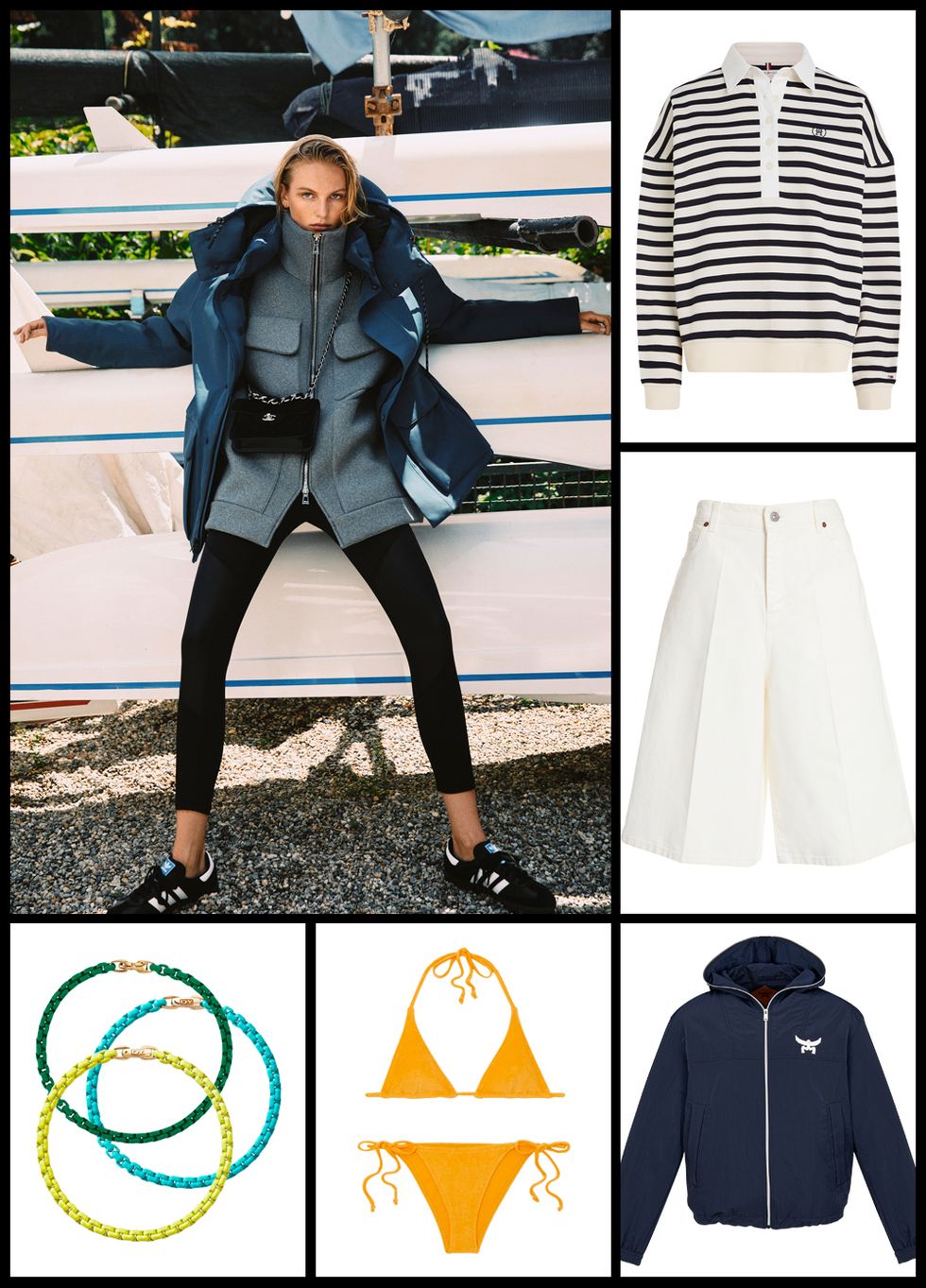
Dries Van Noten Retro Runner Sneakers

Joe McCoy Double Stripe Tee

Sanborn Canoe Maquoketa Canoe Paddle

MCM Laurel Logo Windbreaker

Lisa Marie Fernandez Pamela Terry Bikini
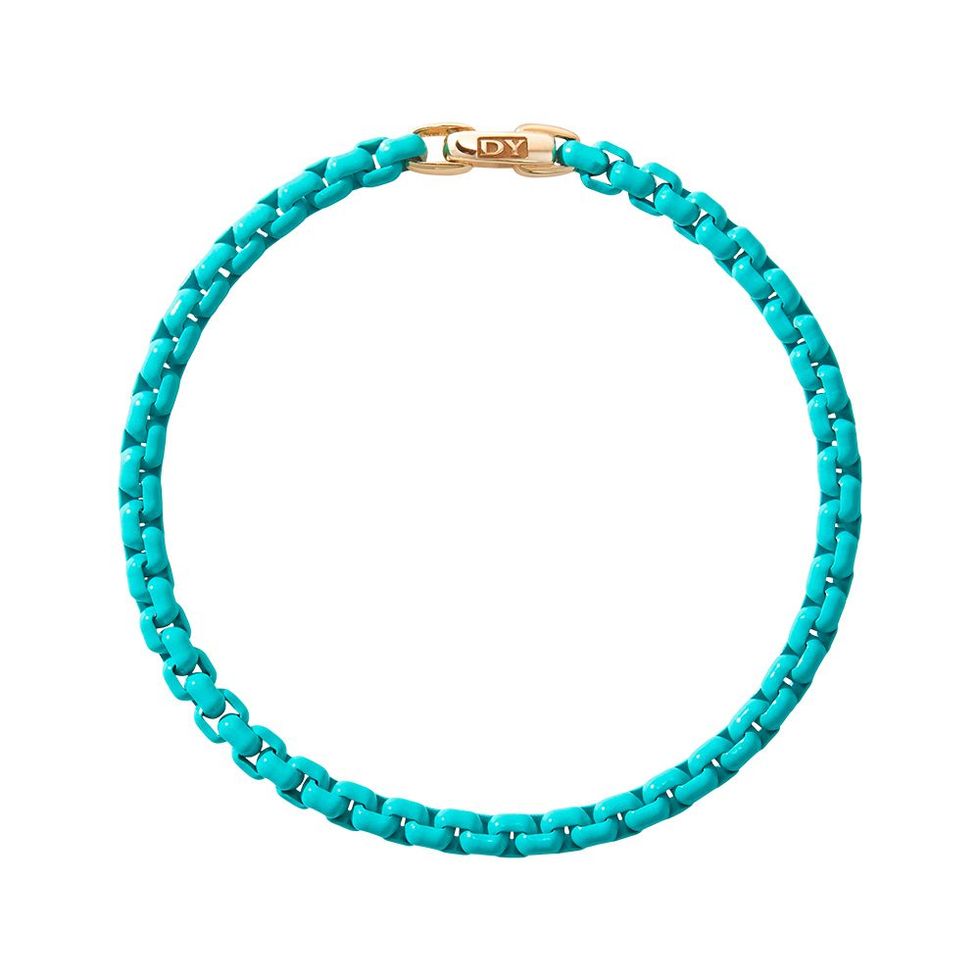
David Yurman DY Bel Aire Color Box Chain Bracelet
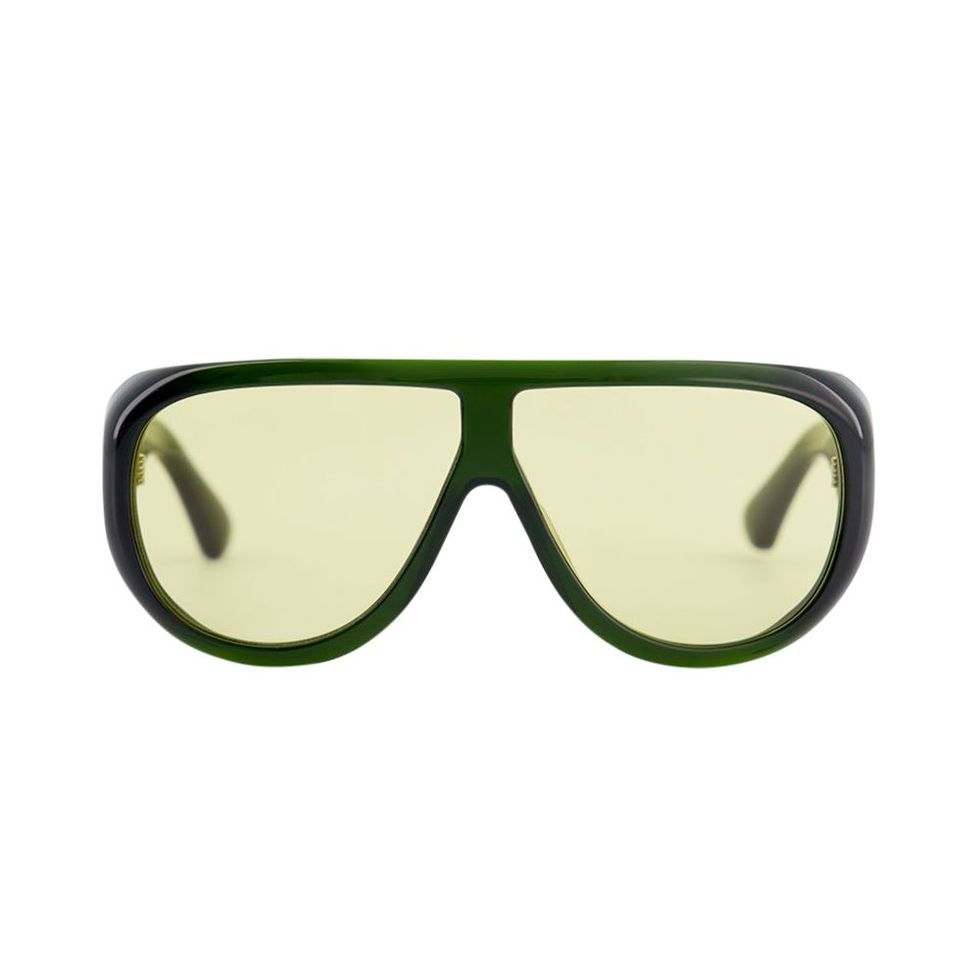

Port Tanger Gambia Sunglasses
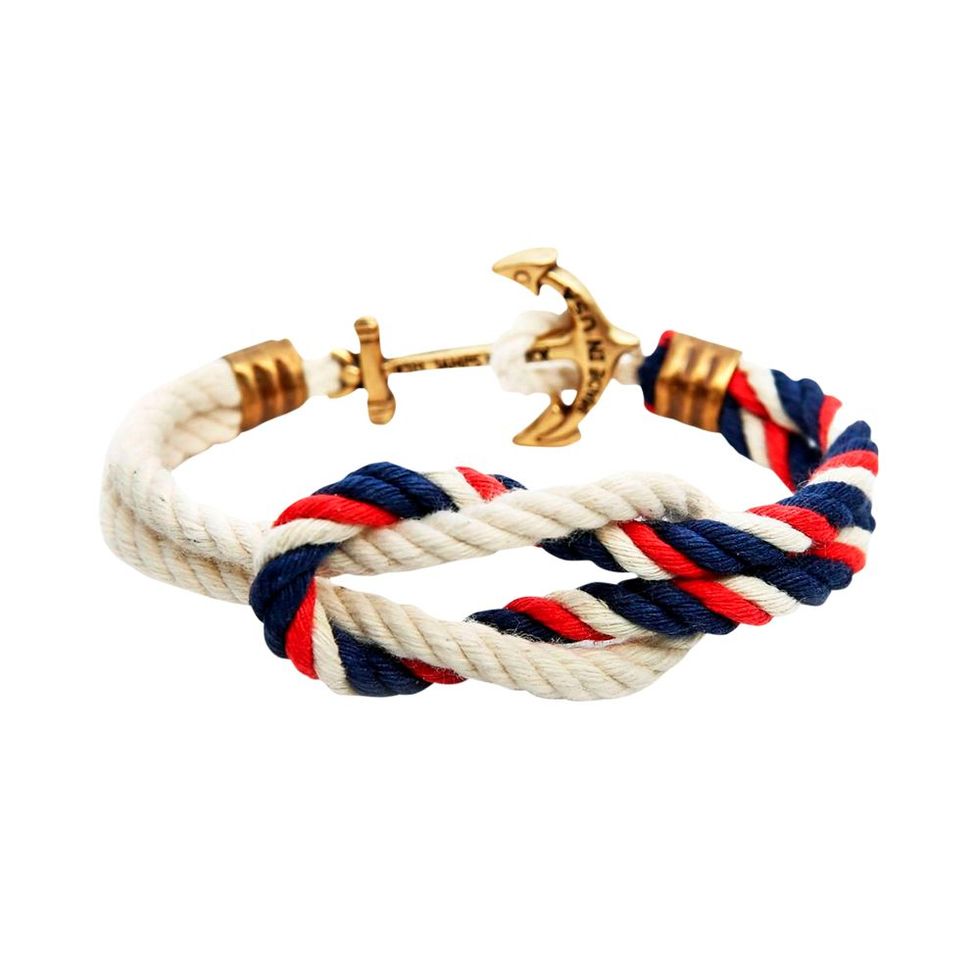
Kiel James Patrick American Classic

Marant Étoile Alec Open-Knit Sweater
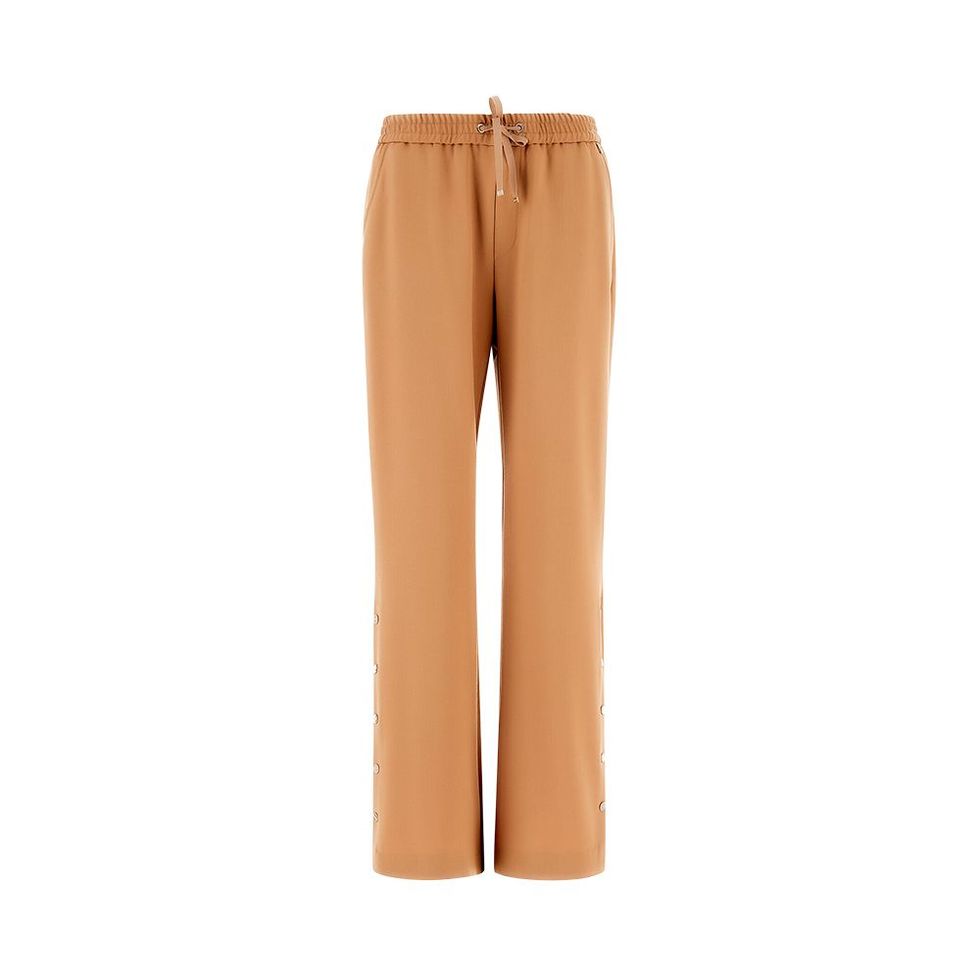
Herno Stretch Trousers
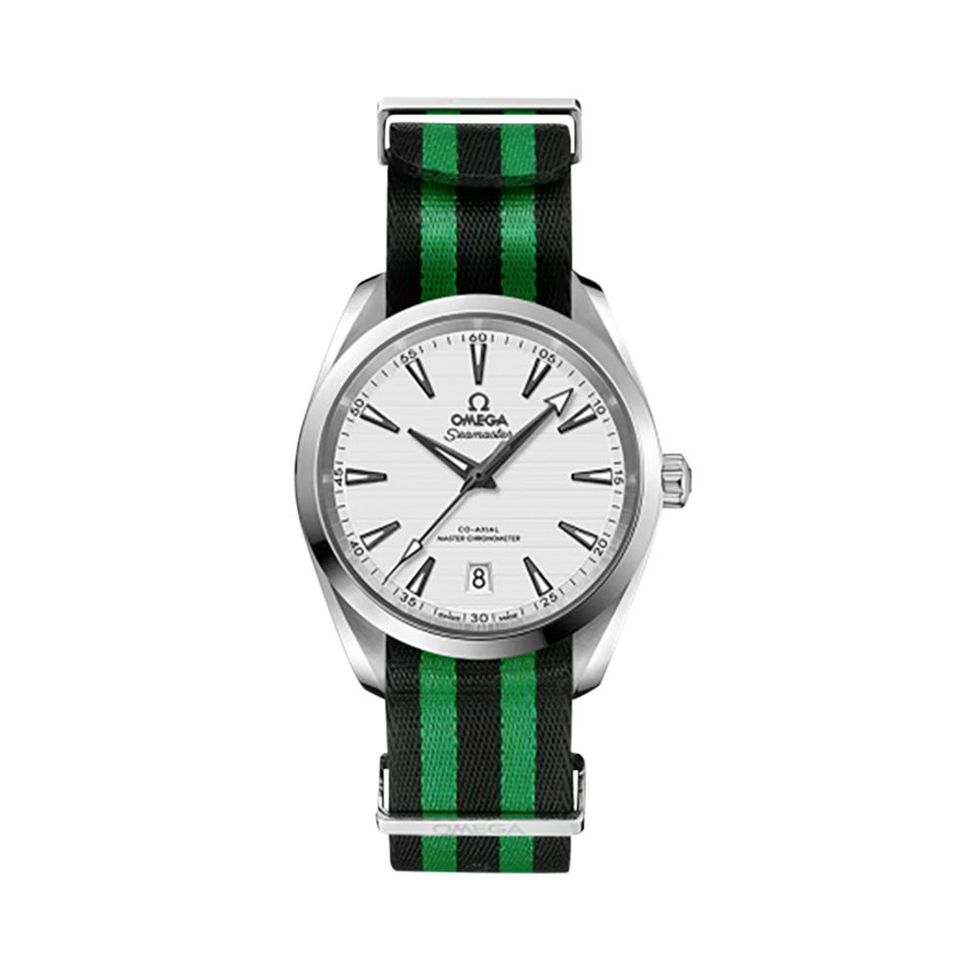
Omega Seamaster Aqua Terra 150m
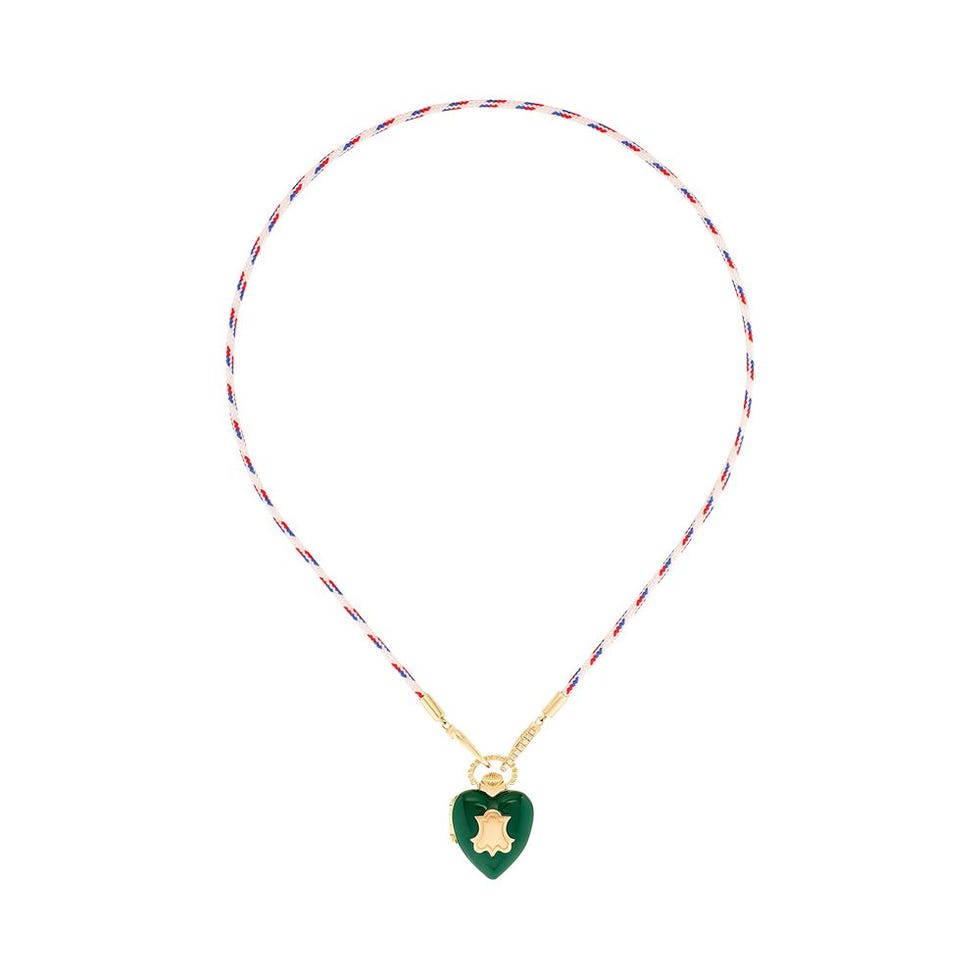
Ben The You Vault Pendant Necklace
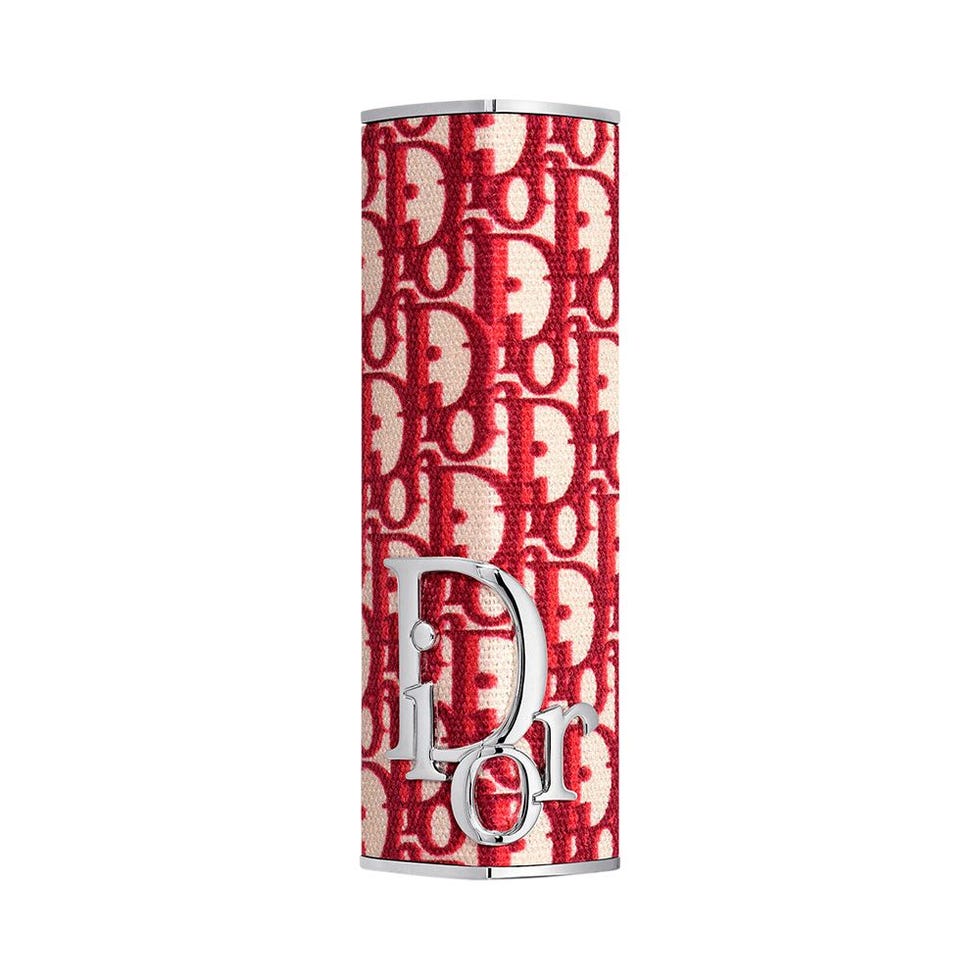
Dior Dior Addict Case
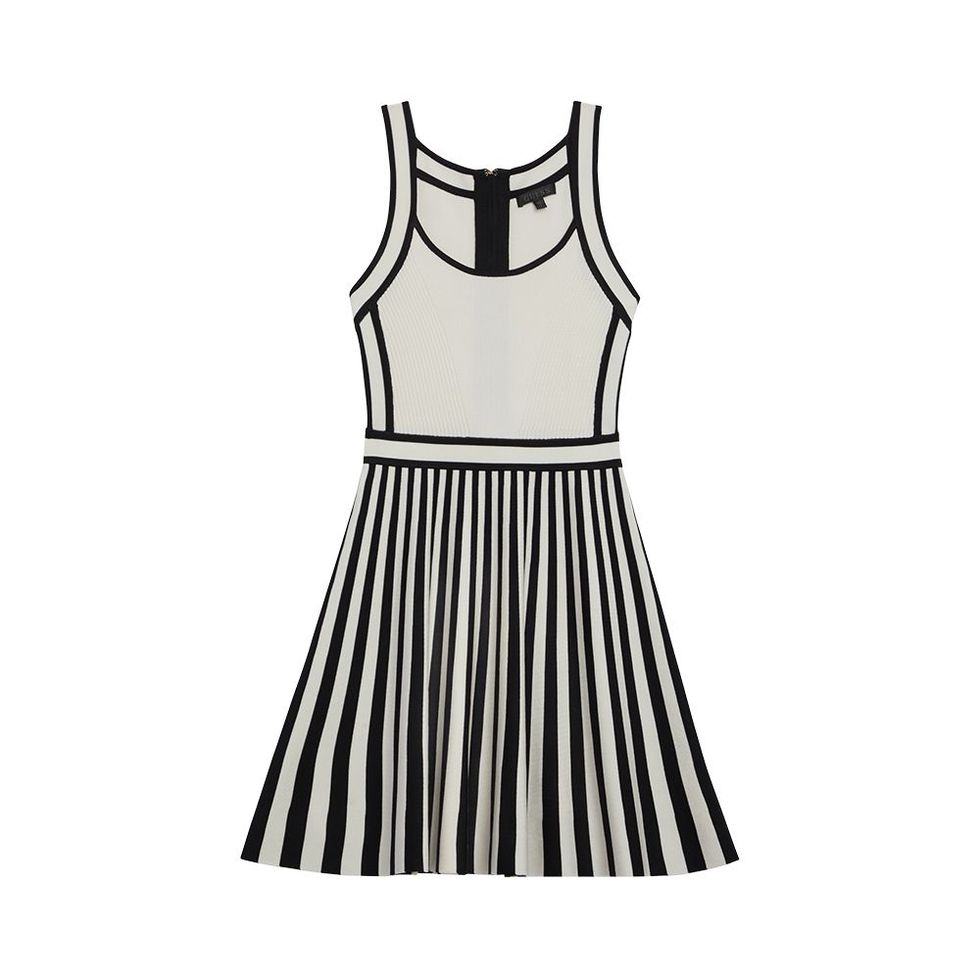
Guess Mirage Nautical Sweater Dress
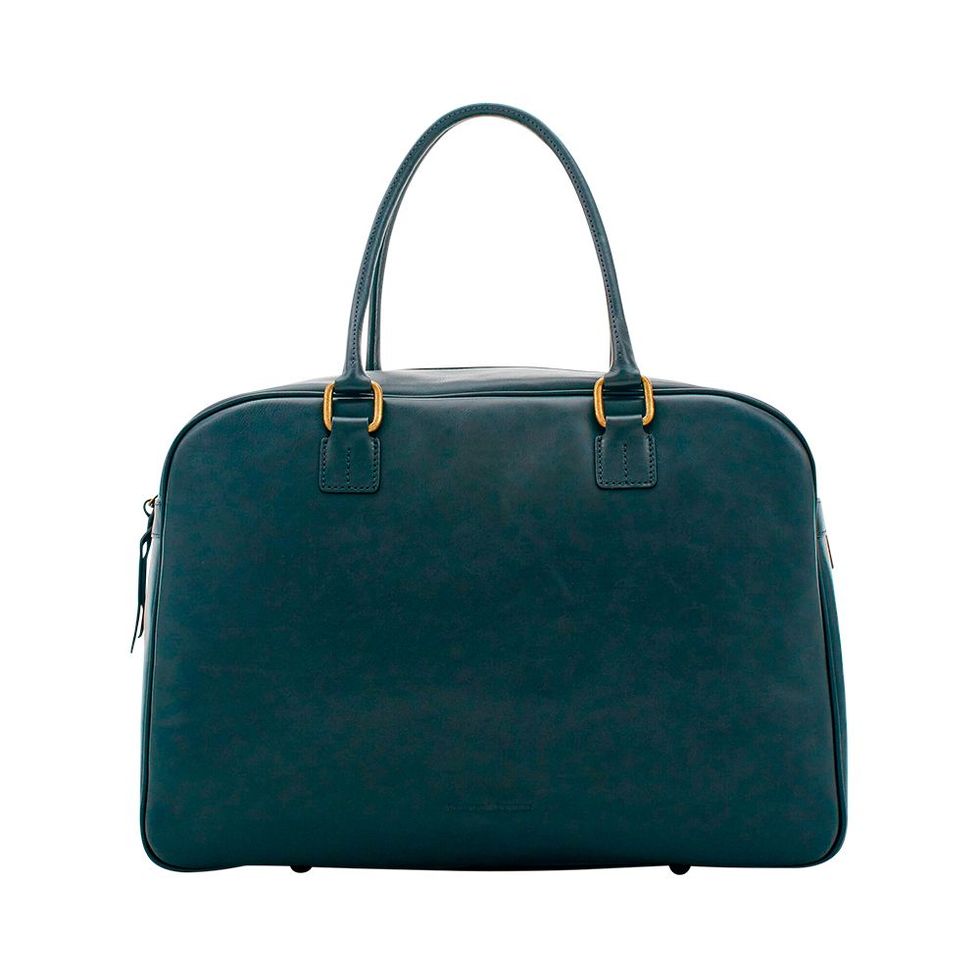
Dooney & Bourke Florentine Bowler Duffle
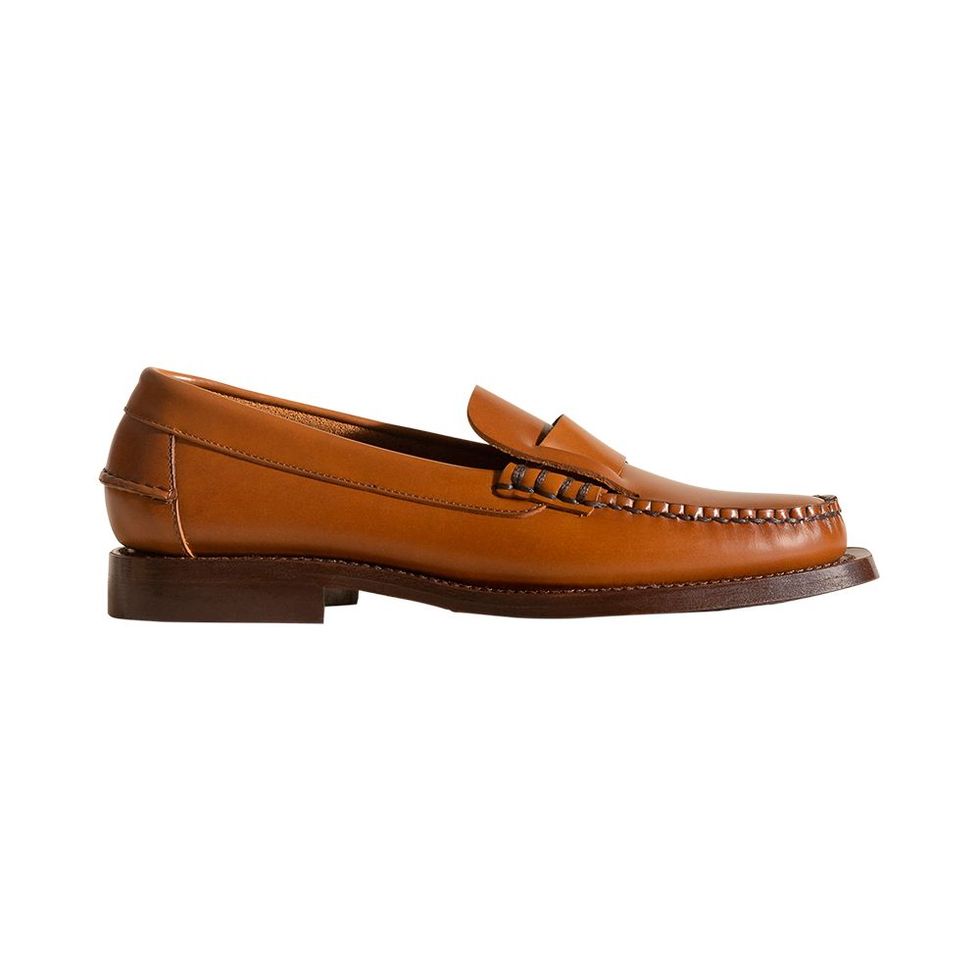
Hereu Sineu Slip-on Loafers
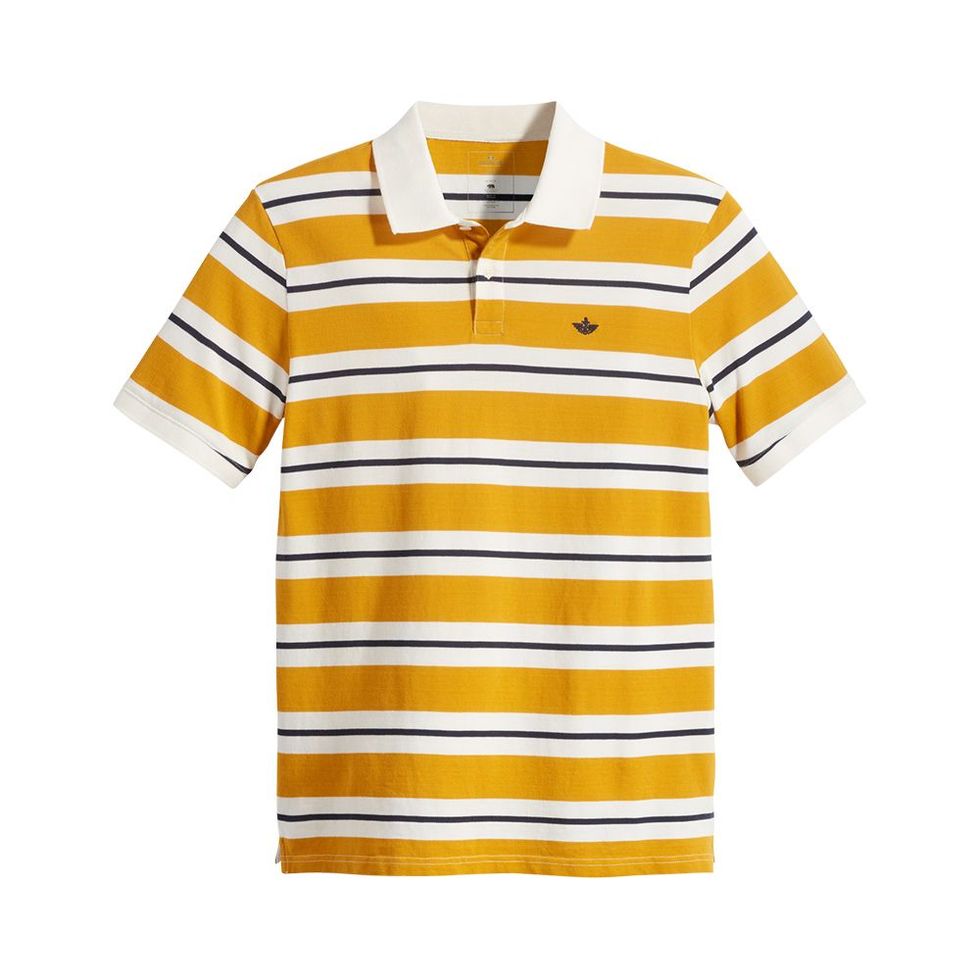
Dockers Rib Collar Polo
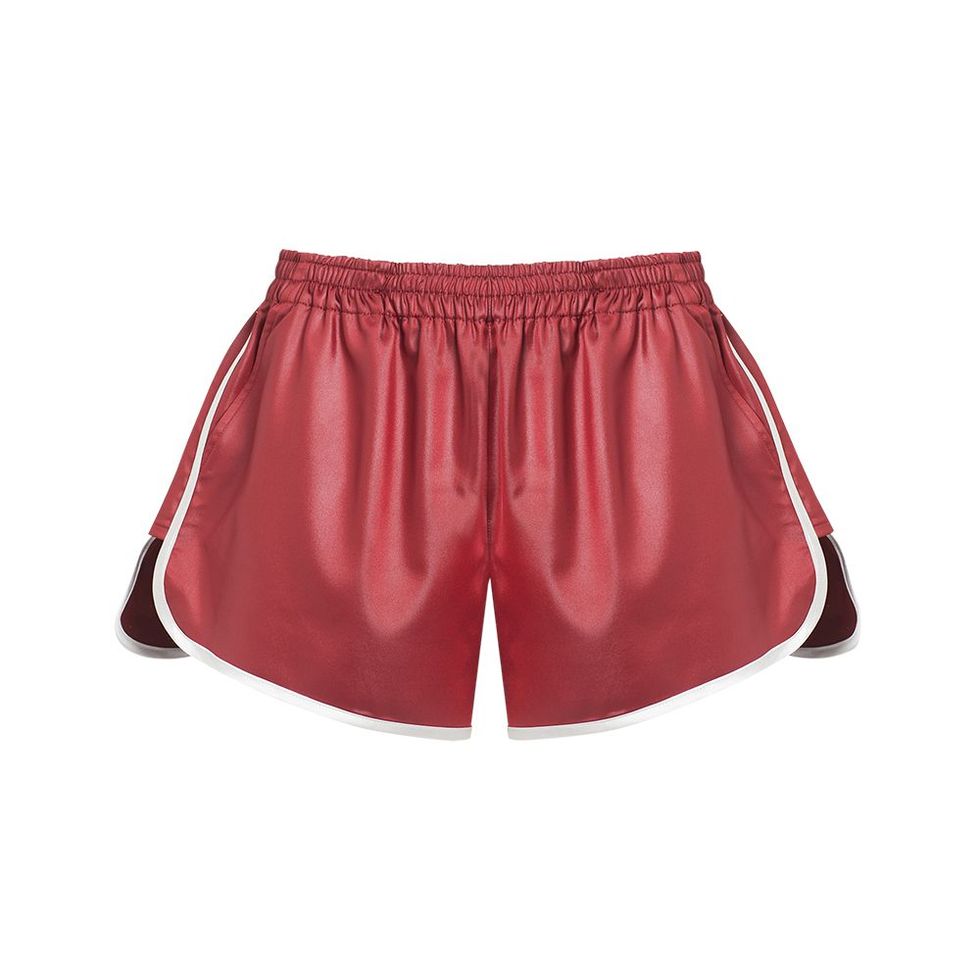
Mango Satin Shorts

The Best-Dressed Celebrities at the 2024 SAGs

17 Area Rugs

A First Look at Jhoan Sebastian Grey for HSN

The Best Street Style From Milan Fashion Week

The Launch: Fashion News to Know This February

Shop the 16 Best Hobo Bags for Effortless Style
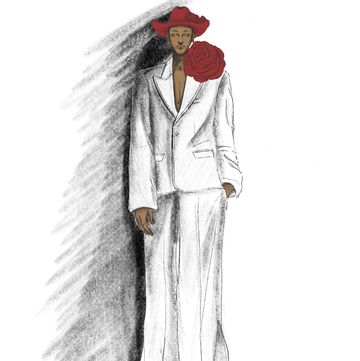
Willy Chavarria Reacts to His First ELLE Cover

This Spring, Fashion Gets Bold and Bright

Spring Is for the Shape Shifters

Spring’s Must-Have Striped Accessories

Vittoria Ceretti Is the Ultimate Supermodel
- Tomilino Tourism
- Tomilino Hotels
- Tomilino Bed and Breakfast
- Tomilino Vacation Rentals
- Flights to Tomilino
- Tomilino Restaurants
- Things to Do in Tomilino
- Tomilino Travel Forum
- Tomilino Photos
- Tomilino Map
- All Tomilino Hotels
- Tomilino Hotel Deals
- Hotels near Museum of Moscow Helicopter Plant of Mil
- Hotels near Museum Zvezda
- Hotel Xcaret Mexico
- The LINQ Hotel + Experience
- Flamingo Las Vegas
- Mandalay Bay Resort & Casino
- Hyatt Ziva Cancun
- Dreams Macao Beach Punta Cana
- Hotel Riu Montego Bay
- Moon Palace Cancun
- Excellence Oyster Bay
- Secrets Cap Cana Resort & Spa
- Beaches Turks & Caicos
- Secrets Moxche Playa del Carmen
- Hotel Riu Republica
- Secrets Maroma Beach Riviera Cancun
- Hotel Riu Palace Kukulkan
- All Tomilino Restaurants
- Arabic Restaurants in Tomilino
- Chinese Restaurants in Tomilino
- Japanese Restaurants in Tomilino
- Korean Restaurants in Tomilino
- Middle Eastern Restaurants in Tomilino
- Russian Restaurants in Tomilino
- Travelers' Choice
- Help Center
- Moscow Oblast
- Tomilino
- Tomilino Restaurants
Ratings and reviews
Location and contact, california, tomilino - restaurant reviews - tripadvisor.

California Yacht Club was established in 1922 and boated its' first competitive rowing team back in the 1930's. In 1977, after a long hiatus, Stan Mullin, Ken Jacobs and Charles Hathaway reactivated rowing at the Club. CYC rowers now number about 60, and represent all abilities, ages and motivations.
Adult Rowing - California Yacht Club CYC is a great place for adults of all ages and skills to row out of Marina Del Rey. We have more than 60 active adult rowers with a wide range of interests and motivations varying from recreational, fitness, social, open water, and racing.
CYC Rowing - California Yacht Club - Rowing About us CYC Junior Rowing CYC offers a range of rowing programs suitable for girls and boys ages 12 - 18. CYC membership is not required to participate. Our junior rowing programs include: a highly successful competitive rowing team, a recreational program and private lessons.
Everyone at the California Yacht Club is devastated by the fire that took place at the structure of our historic club on Monday, December 11, 2023. We want to extend our sincere thanks to the Los Angeles County Fire Department for their rapid response and intensive efforts to extinguish the fire. We are committed to working with the fire ...
Junior Sailing and Rowing Program. Open to all youths in the community (ages 8-18). Full time Junior staff. Comments: Active power, sail and rowing fleets. Family friendly Club with a full schedule of races, cruises, and social activities.
California Yacht Club's Junior Rowing Program runs seasonally from September through June, and extends into Summer with several two week "Learn to Row" camps. The core instruction of the program is sculling. Singles, doubles and quads are the on the water tools for quality learning, and our inventory of ergometers are used for land training.
California Yacht Club, Marina del Rey, California. 4,778 likes · 133 talking about this · 24,313 were here. The California Yacht Club mission is to...
California Yacht Club was established in 1922 and boated its first competitive rowing team back in the 1930's. In 1977, after a long hiatus, Stan Mullin, Ken Jacobs and Charles Hathaway reactivated rowing at the Club and it has grown since then.
The California Yacht Club has a wonderful community of members who enjoy a packed social calendar of over 400 events throughout the year that features water activities, wine tastings, movies...
California Yacht Club is located at: 4469 Admiralty Way, Marina del Rey, CA 90292. ... California Yacht Club-Junior Rowing. Craig Leeds [email protected] 310.948.1456. and. Anna Wilczek [email protected] 818.523.2987. CYC offers a variety of summer programs for junior age (13 - 18) boys and girls. CYC membership is not required to enroll.
J/70 Worlds 2021 : Peter Duncan's Relative Obscurity has prevailed over 60 other teams and challenging wind conditions to capture the 2021 J/70 World Championship title at California Yacht Club, today. In a five-day series that tested the skill and patience of top-notch competitors from 11 nations, Duncan - sailing with Willem van Waay, Morgan Trubovich and Victor Diaz de Leon - secured ...
Congratulations to the California Yacht Club Rowing Team on an impressive showing at the Long Beach Christmas regatta! 27 medals is an incredible achievement, and we are so proud of all of your hard...
The California Yacht Club is owned by the Hathaway family, owners of the Los Angeles Athletic Club. The annual "Great Catalina to Marina del Rey Rowing and Paddling Event" pays tribute to Charles Hathaway's row in 1976 from Catalina Island to the club on his 50th birthday.
3,429 Followers, 1,052 Following, 637 Posts - See Instagram photos and videos from California Yacht Club (@calyachtclub) 3,429 Followers, 1,052 Following, 637 Posts - See Instagram photos and videos from California Yacht Club (@calyachtclub) Something went wrong. There's an issue and the page could not be loaded. ...
515 Followers, 265 Following, 67 Posts - See Instagram photos and videos from California Yacht Club Rowing (@calyachtclubrowing)
• 1st US Rowing Coach to win back-to-back Gold medals in the Mens Eight (97,98,99) (04,05). ... RC and California Rowing Club • Advisory coach at Cambridge University in England for their annual Boat Race since 1993 • U.S. Men's Olympic Head Coach from 2009-2012 London Olympic Games (Bronze - M4-)
When the California Yacht Club burned in Marina del Rey, prestigious awards, a priceless trophy and cherished photos were lost. Members mourn the club's loss.
The Los Angeles Rowing Club is the oldest rowing club in the city, founded in 1908. The club is located in a historic boathouse in the Marina del Rey harbor and offers programs for rowers of all levels, from beginners to advanced. The club has a competitive racing team, a recreational rowing program, and hosts many social events throughout the ...
Related Articles J/Teams Silver in Southern California Islands Race J/130 1st, J/111 2nd, & J/125 2nd The annual Southern California offshore and coastal racing season kicked off with the 2024 Islands Race, a coastal race co-hosted by Newport Harbor Yacht Club and San Diego Yacht Club since 2010. Posted on 19 Feb BadPak wins 2024 Islands Race Rio100 sets course record The annual Southern ...
The moment of the explosion in Moscow was broadcast on the rowing championship: video. News/Politics 2023-08-11T12:06:55.387Z. 8-Year-Old Boy Killed in Russian Strike on Western Ukraine. News/Politics 2023-08-11T14:26:57.994Z. They were going to reconnaissance the territory: border guards "landed" the occupiers' UAVs near Avdiivka.
Dinamo Elektrostal Moscow - Titles, trophies and places of honor. Men's Euro Hockey League since 2007/2008 (7 participations) . Best result : First Round in 2021/2022; EuroHockey Men's Club Trophy since 2008 . Best result : 1st
Club Risovalshchikov, Moscow: See 7 unbiased reviews of Club Risovalshchikov, rated 4.5 of 5 on Tripadvisor and ranked #4,585 of 15,890 restaurants in Moscow.
Yacht Rock: ELLE's February 2024 Shopping Guide From the rowing club to the runway, preppy classics are making a splash. By Rosie Jarman Published: Feb 21, 2024
California, Tomilino: See unbiased reviews of California, one of 16 Tomilino restaurants listed on Tripadvisor.
salcombe yacht club regatta 2022 results
Salcombe yawl owners' association.
Town regatta entry’s and results.
Results for the 7th
We have 2 firsts but if you apply ISAF App A 8.2 (highest last results then 154 takes 1st and 184 2nd)

- ← Results And Prize Giving SYC Regatta
- Yawl Tennis →

- CLASSIFIEDS
- NEWSLETTERS
- SUBMIT NEWS

Boats for sale

Salcombe Gin SYC Regatta to be held 7-12 August 2022

Related Articles

Upcoming Events

Race Results
28-29 october - academy trophy, 4x4 championships, summer series: overall, 29 september - 1 october - british keelboat league finals, 24 september - ancient mariners race, 23 september - denise cartlidge ladies race, 15 - 17 september - summer series: september regatta, 9-10 september - women's open keelboat championships & women's british keelboat league, 2-3 september - passage race: yarmouth, 19-20 august - passage race: poole, 8-9 july - summer series: salcombe gin july regatta, 15-17 june 2023 - key yachting j cup regatta, 10-11 june 2023 - passage series: portsmouth, 4-5 june 2023 - summer series: champagne charlie june regatta, 26-27 may - deauville race, 13-14 may - etchells bedrock trophy, 7 - 8 may 2023 - summer series: north sails may regatta, 29 - 1 may 2023 - solent cruiser race, 22-23 april - passage race: chichester, 14 - 15 january - hamble winter icebreaker regatta.
Black Group
White Group
IRC Results
BKL Results
Result Files
Solent Cruiser Race Results (.pdf, 53.556 KiB)
Royal Southern Summer Series: Overall
Passage series: overall, central cans series overall, 29 - 30 oct 2022 - the academy trophy, 22-22 oct 2022 - doublehanded cup, 21-23 oct 2022 - rya national match racing championships grand final, 15 - 16 oct 2022 - ioca uk optimist end of season championships, 30 sep -2 oct 2022 - british keelboat league finals, 24-25 sep 2022 - royal southern summer series: land union september regatta, 3 sep 2022 - denise cartlidge ladies' race, 13-14 aug 2022 - passage series: poole & back, 16-17 jul 2022 - women's open keelboat championships & women's british keelboat league, 9-10 jul 2022 - royal southern summer series: salcombe gin july regatta, 2 jul 2022 - central cans series: independence day tumbler, 1-3 jul 2022 - sb20 uk national championships, 18 jun 2022 - central cans series: summer solstice salver, 11-12 jun 2022 - passage series: gunwharf quays, 4-5 jun 2022 - royal southern summer series: champagne charlie platinum jubilee regatta, 19-20 may 2022 - interservice match racing championships, 21 may 2022 - central cans series: spring saucer, 14-15 may 2022 - x-yachts solent cup, 14-15 may 2022 - international etchells bedrock trophy, 7-8 may 2022 - royal southern summer series: north sails may regatta, 23-24 apr 2022 - passage series: hamble-yarmouth cup, 9 - 9 apr 2022 - central cans series: freedom cup, 26-27 mar 2022 - optimist spring cup, 19-20 mar 2022 - boysterous cup 2022, 29 jan 2022 - academy frostbite series 2022.
Summer Series Overall White Group After Sept Regatta (.pdf, 624.032 KiB)
Summer Series Overall Black Group After Sept Regatta (.pdf, 1.247 MiB)
Passage Series 2022 Results (.pdf, 49.729 KiB)
Central Cans Series Overall Results (.pdf, 138.155 KiB)
Results (.pdf, 402.635 KiB)
Doublehanded Cup Results (.pdf, 397.553 KiB)
Result Links
Inter Services Match Racing Championships Results (.pdf, 149.689 KiB)
Sports Class Results After R5 (.pdf, 71.652 KiB)
Family Class Results After R3 (.pdf, 25.66 KiB)
Rsrnyc Optimist Spring Cup 2022 Results (.pdf, 61.347 KiB)
Boysterous Cup Results (.pdf, 74.821 KiB)
Academy Frostbite Series 2022 Results (.pdf, 15.56 KiB)
17 - 19 Sep 2021 - Summer Series 4 - Land Union September Regatta & HP30 Nationals
10 - 12 sep 2021 - hamble classics, 28 - 30 aug 2021 - august charity cup, 24 - 25 jul 2021 - pre-cowes week regatta / central solent xod champs, 17 - 25 jul 2021 - central cans series - live results, 10 - 11 jul 2021 - summer series 3 - salcombe gin july regatta, 24 - 26 jun 2021 - the landsail tyres j-cup, 12 - 13 jun 2021 - summer series 2 - june regatta, 5 - 6 jun 2021 - women’s open keelboat championship, 29 - 30 may 2021 - x-yachts solent cup, 8 - 9 may 2021 - summer series 1 - may regatta, 17 - 28 jan 2021 rsrnyc esailing winter series - rya winter club championships 2021.
Cumulative Results
Central Cans Series Results (change tabs for different events)
Cumulative Results – Live
WOKC Live Results
BKL Women’s Championship Live Results
Family Class Race 1 Results (.pdf, 178.17 KiB)
Family Class Race 2 Results (.pdf, 127.68 KiB)
Family Class Race 3 Pursuit Results (.pdf, 115.57 KiB)
Family Class Overall Results After 3 Races (.pdf, 148.629 KiB)
eSailing Winter Series Event & Overall Results – Change tabs to view different events & overalls
Royal Southern Esailing Winter Series 2021 Responses Overall Results (.pdf, 863.775 KiB)
12 - 12 Dec 2020 - Academy Winter Racing
17 - 18 oct 2020 academy trophy 2020, 19 - 20 sep 2020 summer series 4 - land union september regatta, 17 - 20 sep 2020 sb20 national championships, 12 - 13 sep 2020 passage race series: hamble scramble, 11 - 13 sep 2020 j/70 national championships 2020, 5 - 6 sep 2020 etchells bedrock trophy, 22 - 23 aug 2020 hamble classics 2020, 19 - 19 jul 2020 fortnightly family-friendly race 4: the great return race, 2 - 2 aug 2020 fortnightly family-friendly race 5: the final fortnightly, 12 - 12 jul 2020 fortnightly family-friendly race 3: belated independence day, 7 - 7 jun 2020 fortnightly family-friendly race 1: hamble cup, 23 - 30 apr 2020 esailing spring club championship, 13 - 13 apr 2020 open e-ster regatta, 9 - 16 apr 2020 esailing series, 14 - 15 mar 2020 the boysterous cup 2020, 25 - 28 mar 2020 academy frostbite series 2020.
Academy Winter Series Live Results
Academy Trophy 2020 Results (.pdf, 144.721 KiB)
Overall Results
2020 SB20 UK Sprint Championship – Thursday 17th September
2020 SB20 UK Open & National Championship – Friday 18th – Sunday 20th September
Individual & Overall Results
Cumulative Race Results
Saturday Fun Race Results
Regatta Results
Family Friendly Fortnightly Overall Series Results (.pdf, 111.632 KiB)
Belated Independence Day Results V2 (.pdf, 104.053 KiB)
Hamble Cup Results (.pdf, 98.162 KiB)
eSailing Spring Club Championship – Qualifying Round
eSailing Spring Club Championship – Club Final
E Ster Regatta Results No Medal Race (.pdf, 89.47 KiB)
eSailing Series #1 – 9th April 2020
eSailing Series #2 – 16th April 2020
eSailing Series Overall
Boysterous Cup 2019 Race By Race After 17 (.pdf, 200.961 KiB)
Boysterous Cup 2019 Overall After 17 (.pdf, 252.072 KiB)
Academy Frostbite Series 2020 Race Results (.pdf, 104.376 KiB)
Academy Frostbite Series 2020 Overall Results (.pdf, 89.726 KiB)
9 – 7 Dec 2019
Academy Winter Series 2019
- Academy Winter Series Event 1 Provisional Results (.pdf, 105.548 KiB)
- Academy Winter Series Event 2 Provisional Results Race By Race (.pdf, 112.542 KiB)
- Academy Winter Series Event 3 Provisional Results Race By Race (.pdf, 110.998 KiB)
- Academy Winter Series Provisional Event Results (.pdf, 99.012 KiB)
- Academy Winter Series Provisional Overall (.pdf, 98.412 KiB)
26 – 27 Oct 2019
Royal Southern Academy Trophy 2019
- Academy Trophy 2019 Overall Results (.pdf, 418.258 KiB)
11 – 13 Oct 2019
FAST 40+ Round 6 2019
- Fast 40 Round 6 Results Cumulative (.pdf, 99.621 KiB)
- Fast 40 Round 6 Results Race By Race (.pdf, 104.107 KiB)
14 – 15 Sep 2019
Land Union September Regatta supported by Doyle Sails
8 – 8 Sep 2019
Ancient Mariners Race 2019
2019 Results Of Ancient Mariners Race (.pdf, 118.752 KiB)
7 – 7 Sep 2019
Denise Cartlidge Ladies Race 2019
2019 Results Of Ladies Race (.pdf, 121.59 KiB)
18 – 20 Jul 2019
Landsail Tyres J-Cup 2019
J/70 UK Class Training Event 2019
13 – 14 Jul 2019
Summer Series High Points Series – Overall After July Regatta
Summer Series 3 – Champagne Charlie July Regatta
Summer Series 3, Champagne Charlie July Regatta – Yachtscoring Results
7 – 7 Jul 2019
The Vital Spark Pursuit Race 2019
Pursuit Race Results (.pdf, 145.574 KiB)
22 – 18 Aug 2019
Passage Race Series Results as of 23/08/19 – Including Deauville Race, Passage Race 1 (Round Wight by Night) and Passage Race 2 (Poole & Back)
Passage Series Overall Results 230819 (.pdf, 50.268 KiB)
22 – 23 Jun 2019
British Keelboat League – Youth Qualifier
Bkl Youth Qualifier Final Standings (.pdf, 511.851 KiB)
Bkl Youth Qualifier Race By Race Results (.pdf, 590.5 KiB)
15 – 16 Jun 2019
Summer Series High Points Series – Overall After June Regatta
Summer Series 2 – RigIt June Regatta
Summer Series 2, RigIt June Regatta – Yachtscoring Results
18 – 19 May 2019
Summer Series 1 – Antigua Sailing Week May Regatta
Summer Series 1, Antigua Sailing Week May Regatta – Yachtscoring Results
20 – 22 Apr 2019
Solent Cruiser Race 2019
26 – 16 Mar 2019
Royal Southern Academy Frostbite Series 2019
Academy Frostbite Series 2019 Final Results (.pdf, 210.972 KiB)
1 – 9 Nov 2019
IRC Solent Championships Results 2019
Irc Solent Championship Results 2019 (.pdf, 11.48 KiB)
15 – 16 Sep 2018
The Royal Southern Hamble Classics
All results other than Gaffer 1
Gaffer 1 Overall Results (.pdf, 102.855 KiB)
Gaffer 1 Race 1 (.pdf, 223.837 KiB)
Gaffer 1 Race 3 (.pdf, 233.295 KiB)
8 – 9 Sep 2018
Doyle Sails September Regatta, Inclusive of the Performance 40 Class Nationals
Event Results
20 – 22 Jul 2018
J/70 Nationals
2018 J/70 Nationals
14 – 15 Jul 2018
Charles Heidsieck July Regatta
- Charles Heidsieck July Regatta Cumulative (.pdf, 136.594 KiB)
- Charles Heidsieck July Regatta R1 (.pdf, 135.789 KiB)
- Charles Heidsieck July Regatta R2 (.pdf, 133.376 KiB)
- Charles Heidsieck July Regatta R3 (.pdf, 137.174 KiB)
Charles Heidsieck July Regatta R4 (.pdf, 137.062 KiB)
30 – 1 Jul 2018
RYA national Match Racing Championships – Qualifier 1
The Poole and Back Passage Race
2018 Passage Series Results
23 – 24 Jun 2018
Harken June Regatta
- Harken June Regatta Cumulative (.pdf, 160 KiB)
- Harken June Regatta R1 (.pdf, 160 KiB)
- Harken June Regatta R2 (.pdf, 160 KiB)
- Harken June Regatta R3 (.pdf, 160 KiB)
- Harken June Regatta R4 (.pdf, 156 KiB)
- Harken June Regatta R5 (.pdf, 156 KiB)
- Harken June Regatta R6 (.pdf, 144 KiB)
25 – 26 May 2018
2018 Cowes – Deauville Race
12 – 13 May 2018
North Sails May Regatta
Harkenmayregattacumulative (.pdf, 168 KiB)
Harkenmayregattar1 (.pdf, 144 KiB)
Harkenmayregattar2 (.pdf, 140 KiB)
Harkenmayregattar3 (.pdf, 140 KiB)
5 – 6 May 2018
X-Yachts Solent Cup
2018 X-Yachts Solent Cup
Family Overall (.pdf, 205.568 KiB)
Family Pursuit (.pdf, 169.911 KiB)
Family R1 (.pdf, 171.805 KiB)
27 – 29 Apr 2018
Fast 40+ Race Circuit – Round 1
- Charles Heidsieck July Regatta R4 (.pdf, 137.062 KiB) 30 – 1 Jul 2018RYA national Match Racing Championships – Qualifier 1
- Vacation Rentals
- Restaurants
- Things to do
- Elektrostal Tourism
- Elektrostal Hotels
- Elektrostal Bed and Breakfast
- Flights to Elektrostal
- Elektrostal Restaurants
- Things to Do in Elektrostal
- Elektrostal Travel Forum
- Elektrostal Photos
- Elektrostal Map
- All Elektrostal Hotels
- Elektrostal Hotel Deals
- Elektrostal Hostels
- Elektrostal Business Hotels
- Elektrostal Family Hotels
- Elektrostal Spa Resorts
- 3-stars Hotels in Elektrostal
- Elektrostal Hotels with Banquet hall
- Elektrostal Hotels with Game room
- Hotels near Electrostal History and Art Museum
- Hotels near Park of Culture and Leisure
- Hotels near Statue of Lenin
- Hotels near Museum and Exhibition Center
- Hotels near Museum of Labor Glory
- Hotels near (ZIA) Zhukovsky International Airport
- Hotels near (VKO) Vnukovo Airport
- Hotels near (DME) Domodedovo Airport
- Excellence Playa Mujeres
- Secrets Maroma Beach Riviera Cancun
- Dreams Las Mareas Costa Rica
- Hotel Riu Republica
- The LINQ Hotel + Experience
- Temptation Cancun Resort
- Giraffe Manor
- Disney's All-Star Movies Resort
- Hyatt Ziva Cancun
- Secrets Royal Beach Punta Cana
- Hotel Xcaret Mexico
- Renaissance Wind Creek Aruba Resort
- Excellence Punta Cana
- Hotel Riu Palace Cabo San Lucas
- Crystal Land Of Paradise
- Popular All-Inclusive Resorts
- Popular Beach Resorts
- Popular Family Resorts
- Popular All-Inclusive Hotels
- Popular Hotels With Waterparks
- Popular Honeymoon Resorts
- Popular Luxury Resorts
- Popular All-Inclusive Family Resorts
- Popular Golf Resorts
- Popular Spa Resorts
- Popular Cheap Resorts
- All Elektrostal Restaurants
- Restaurants near Beer Club Tolsty Medved
- Cafés in Elektrostal
- Chinese Restaurants in Elektrostal
- European Restaurants for Families in Elektrostal
- European Restaurants for Large Groups in Elektrostal
- European Restaurants for Lunch in Elektrostal
- Fast Food Restaurants in Elektrostal
- French Restaurants in Elektrostal
- Italian Restaurants in Elektrostal
- Japanese Restaurants in Elektrostal
- Pizza in Elektrostal
- Russian Restaurants in Elektrostal
- Seafood Restaurants in Elektrostal
- Vegetarian Restaurants in Elektrostal
- GreenLeaders
- Elektrostal
- Things to Do
- Travel Stories
- Rental Cars
- Add a Place
- Travel Forum
- Travelers' Choice
- Help Center
- Europe
- Russia
- Central Russia
- Moscow Oblast
- Elektrostal
- Elektrostal Restaurants
Beer Club Tolsty Medved
Ratings and reviews, location and contact.

BEER CLUB TOLSTY MEDVED, Elektrostal - Menu, Prices & Restaurant Reviews - Tripadvisor
- Service: 4.5
- Sport Betting
- Yearly calendar
- Latest results
- English Español French Italiano Nederlands
TheSports.org
All sports Site

Field hockey - Dinamo Elektrostal Moscow

Hockey Club Dinamo Elektrostal is a field hockey team from Russia, based in Moscow. The club was founded in 1994.
Dinamo Elektrostal Moscow - Results
2021/2022 2018/2019 2017/2018 2017 2015/2016 2013/2014 2011/2012 2007/2008
Men's Euro Hockey League - Final Round - 2021/2022
Dinamo elektrostal moscow - identity.
- Official name : Hockey Club Dinamo Elektrostal
- Country : Russia
- Location : Moscow
- Founded : 1994
- Wikipedia link : http://nl.wikipedia.org/wiki/Dinamo_Elektrostal
Dinamo Elektrostal Moscow - Titles, trophies and places of honor
- Best result : First Round in 2021/2022
- Best result : 1st
- 1 times first in 2010
- 1 times second in 2009
- 1 times third in 2017
Postal Address
- © Info Média Conseil : 419 Rue Lemelin, St-François QC G0A3S0, Canada
Subscribe to our newsletter for the latest and greatest in luxury, delivered to your inbox.
Recibe nuestros últimos artículos, eventos, promociones e invitaciones.
We are committed to respecting your privacy. Click here to view our Privacy Policy .
Estamos comprometidos a respetar tu privacidad. Lee nuestra Política de Privacidad para más información.
- Cruises, Trains
- Curated Trips
- Destinations
- HOTELS & RESORTS
- Local Attractions
- CHEFS & RESTAURANTS
- Food & Drink
- Gourmet & Organic
- Specialty Stores
- TIPS & RECIPES
- SPORTS & OUTDOORS
- Accessories, Parfums
- Designers, Boutiques
- Watches & Jewelry The best jewelry and watches in the world, with news about the latest collectible pieces and their stories.
- Personalities
- Philanthropy
- ARCHITECTURE & DESIGN
- FURNITURE & DÉCOR
- Real Estate
- Smart Living
- Health & Fitness
- Personal Growth
- Spas & Retreats
- Events The best events of international high society, its guests, behind the scenes details and photos.
- Books & MOVIES
- FAIRS & EXHIBITS
- Performance Arts

Local Attractions / Travel
The best golf clubs in moscow: luxury, exclusivity, and entertainment.
By Walter Raymond
February 24, 2015

- The Best Golf Clubs in…
In Russia, the western concept of building architecturally beautiful golf courses filled with modern and luxurious amenities has found fertile ground. What was considered a frivolous pastime during the time of the Soviets has become the latest trend for the stylish set. These days, there are countless options around Moscow to practice golf, polo, ski, yachting, and other sports alongside 5-star hotels, luxurious country houses, and magnificent villas.
The game of golf is a sport that requires passion and expertise. It is also part of a culture that considers this pastime a synonym of social prestige and exclusivity. In recent years, the new Russian elite has turned to golf as a vehicle of integration in the era of globalization. Golf courses are also meeting and socializing spaces where Muscovite tycoons can relax and also seal business deals.
Golf Courses in Russia
The Moscow Country Club, Pestovo Golf & Yacht Club, Tseleevo Golf & Polo Club, and Zavidovo Golf Club, PGA National Russia are some of the most exclusive and elegant golf courses in Russia. Some of them have made it to the list of Top 15 golf clubs in the world, a source of great prestige for the country.
Moscow Country Club Moscow Country Club

The first 18-hole golf course built in Russia, Moscow Country Club, hosts the exclusive PGA European Tour. Located just eight miles from the city center, this luxurious facility was created by architect Robert Trent Jones Jr . The design takes advantage of a typical Russian birch and spruce forest to provide a natural environment of extraordinary beauty.
Pestovo Golf & Yacht Club Pestovo Golf & Yacht Club

The Pestovo Golf & Yacht Club is 18 miles from the heart of Moscow, close to historical monuments from the 17th and 18th centuries. Designed by famed architects Paul and Dave Thomas , this 18-hole course is part of a complex that includes a yacht club, an equestrian center, and a health and wellness facility. Pestovo Golf & Yacht Club is Russia’s version of a classic country club with multiple attractions.
Tseleevo Golf & Polo Club Tseleevo Golf & Polo Club

This park is among the best in Eastern Europe and was awarded the 2014 World Golf Award as the best golf course in Russia. Located 25 miles from Moscow, it is part of a vast complex featuring an 18-hole golf course, designed by Jack Nicklaus , a polo club and a mountain ski club with four tracks. The design combines classic Scottish, Alpine, and English features in a dreamy landscape.
Zavidovo Golf Club, PGA National Russia Zavidovo Golf Club, PGA National Russia

Less than 60 miles from Moscow, this golf course with a definite Scottish design is the only one in Russia recognized as a PGA (Professional Golfers’ Association) from Britain and Ireland. Located in an ecologically pristine area on the banks of the Volga River, the Zavidovo Golf Club embodies the spirit and appearance of the legendary Scottish golf courses. Its many springs and streams, hills, forests, swamps and lakes justify its reputation as a very demanding circuit. Last year, it entered the exclusive club of the 15 best golf courses in the world. ■
Related posts
Geneva is a magical place with its snowy alpine peaks, perfect sights, and on the shores of one o...
One of Europe's finest luxury hotels is located on the bank of the Maigue River in Limerick Count...
Enjoy amazing spa treatments at The Bahia del Duque Hotel nestled in the island paradise of Tener...
SYC Salcombe Gin Regatta National 12 2022
Scoring codes used.
Sailwave Scoring Software 2.29.0 www.sailwave.com
- © Roadtrippers
- © Mapbox
- © OpenStreetMap
- Improve this map

The Breakfast Club
501 S Main St, Moscow , Idaho 83843 USA
- Independent
- Credit Cards Accepted
- More in Moscow
Learn more about this business on Yelp .
“Breakfast & Lunch among friends”
The Breakfast Club has been a locally-owned Moscow breakfast staple for 12 years. The food is delicious, and the portions are appropriate (not gigantic). They have stuffed biscuits and gravy which is biscuits cut in half with eggs and bacon in the middle, covered in in-house made sausage gravy. If you are ever in Moscow in the wee hours of the morning, this is the place to stop!!!

Reviewed by Melanie B.
Phenomenal!!! We went to Moscow for a quick wkend trip and stumbled upon this spot! The wait was 45 mins (of which needed up being 20 / 30 mins! Nothing but positive things to say about The... Read more

Reviewed by Katrina B.
Great food, Great environment Great prices. I'm not coffee drinker but the coffee bar and the latte they made me was really good. The biscuits and gravy weren't the best but I had assumed as... Read more

Reviewed by Anna S.
A nice breakfast/brunch spot! The ambiance and decorations feel very classic diner though with a slight upscale vibe. We came a few minutes before their brunch was closing but they were still... Read more
View 387 reviews on
- Sun - Sat: 7:00 am - 2:00 pm
Problem with this listing? Let us know .
Has RV parking changed? Let us know .
- Check Parking
- Unavailable Pets Allowed
- Unknown Restrooms
- Unavailable Wifi
- Unknown Wheelchair Accessible
- Check Credit Cards Accepted
- Check Lunch
- Check Brunch
- Unavailable Dinner
- Check Drinks
- Check Dine In
- Check Takeout
- Check Breakfast
- Check Waitstaff
Parking, Dining
Nearby Hotels
Related trip guides, the great northern is a 3,600 mile, cross-country odyssey, pacific coast highway: oregon - washington, the ultimate guide to north cascades national park, the top things to do on a u.s. route 20 road trip, keep exploring with the roadtrippers mobile apps..
Anything you plan or save automagically syncs with the apps, ready for you to hit the road!
Connect with us and hit up #roadtrippers
Tall tales, trip guides, & the world's weird & wonderful.
- Roadpass Digital
- Mobile Apps
Business Tools
- Partnerships
Get Inspired
- Road trip ideas by state
- National parks
- Famous routes
- Voices from the Road
Fresh Guides
- The ultimate guide to Mammoth Cave National Park
- The Ultimate Guide to Badlands National Park
- Route 66 Leg 2: St. Louis to Tulsa
- Route 66 Leg 1: Chicago to St. Louis
- Route 66 Leg 3: Tulsa to Amarillo
- Top 10 things to do in Ohio
- Offbeat Road Trip Guides
- Road Trip USA
- Scenic Routes America
- National Park Road Trips
- Terms and Conditions
- ☰ Menu
- Welcome to SYC
- New Members Guide
- Club Rules, Safeguarding Policies and Code of Conduct
- Membership Form
- Benefits of Becoming a Member - Our Partners
- Club Officers
- SYC Data Privacy Policy
- Ramblers - SYC Walking Group
- Join the RYA
- MENUS - Wine and Food
- OPENING HOURS & FOOD
- NORs & SIs for Open Meetings 2024
- 2024 Sailing Programmes & NOR's & SI's for Club Racing
- Salcombe Gin Merlin Rocket Week 30th June 2024 - 5th July 2024
- SYC Salcombe Gin Regatta Week 11th - 16th August 2024
Salcombe Town Regatta 2024
- Race Management guidance and Safety documents
- Accommodation Links for Visitors
- Championship Roll of Honour
- Mid-Week Series
- Model Yacht Racing
- Ladies Who Launch/Open Dinghy Sailing
- Glenbeigh Girl - Javelin 30
- Elan 31 2008 - Starfire
- Optomist for Sale
- John Leach 9 foot Tender
- With Vitting for Sale
- Laser Standard (standard & 4.7 Rig)
- Gill Jacket and Trousers - Brand New
- Merlin Rocket 3479 For Sale
- Solo Sail for Sale
- RYA Training
- Book online
- 2019 Results
- 2018 Results
- Summer Series 2017
- Sailing Club Series 2017
- Cadet Autumn Series 2017
- Winter Series 2017
- Autumn Series 2017
- Results Archive
- 2016 Race Results
- CADET HANDICAP
- MEDIUM HANDICAP
- FAST HANDICAP
- YAWL HANDICAP
- OPEN MEETING
- HENRI LLOYD SALCOMBE YACHT CLUB REGATTA
- MERLIN ROCKET
- 2017 Race Res
- 2017 Race Results
- SALCOMBE GIN SALCOMBE YACHT CLUB REGATTA
- SALCOMBE TOWN REGATTA
- 2024 Calendar
- Baseball Cap
- Cadet T-Shirt
- Childs Hoodie
- Female polo top
- Merlin Rocket Print
- Mill Bay Parking
- SYC Calendar
- SYC Cruiser Calendar
- Weather, Tides & Webcam

The dates for the Salcombe Town Regatta Dinghy Racing 2024 are Monday 5th - Friday 9th August.
We look forward to seeing you there!
If you purchase a Mill Bay boat park ticket (available from our online shop) please collect a sticker for your boat from the SYC office. (Stickers have to be displayed at all times).

sailwave results Salcombe Town Regatta 2022 ... Salcombe Town Regatta 2022 Salcombe Yacht Club. Competitor List Fleet Class SailNo HelmName CrewName PY Extra Col 1 Extra Col 2; Laser 4.7 156205 Charles Evans 1207 Laser 4.7 180342 Henry Evans 1208 Aero 7 1746 Simon Ballantine ...
sailwave results Salcombe Town Regatta Yawl 2022 ... Salcombe Town Regatta Yawl 2022 Salcombe Yacht Club. STR Yawl Handicap 2022 Yawl Blue Class. Sailed: 4, Discards: 1, To count: 3, Rating system: PY, Entries: 13, Scoring system: Appendix A. Rank Boat Class Sail number Helm
Salcombe Yacht Club Festive Series 2023/24 Eleven competitors, mainly in Solos, turned up for the 1st race of the Salcombe Yacht Club Festive Series 2023/24 on Saturday 23rd December. Despite the forecast westerly breeze, gusting over 30 knots, with Barney Greenhill running proceedings, racing went ahead, with a course comprising three loops of ...
sailwave results SYC Salcombe Gin Regatta Solo 2022 ... SYC Salcombe Gin Regatta Solo 2022 Salcombe Yacht Club. SYC Salcombe Gin Regatta Solo Overall. Sailed: 6, Discards: 1, To count: 5, Rating system: PY, Entries: 28, Scoring system: Appendix A. Rank
Club House. Club House; ROOM HIRE; MENUS - Wine and Food; OPENING HOURS & FOOD; Contact details. Cliff House Cliff Rd Salcombe Devon TQ8 8JQ UK. Phone : 01548 842593 Company No. 10627328 VAT No. 141485869 View on map
Town Regatta Entry's and Results . ... December 2022; March 2022; September 2020; August 2020; June 2020; February 2020; November 2019; August 2019; ... Sail World Monthly e-News Salcombe Yacht Club; Salcombe Yacht Club; Surf Report Salcombe; Tide Chart Salcombe; Watch House Live Wind Guru;
Racing. Salcombe is a beautiful sailing area with dramatic cliffs, golden beaches and unspoilt creeks. Families and friends can enjoy a great spectator sport either from the splendid vantage point of the Yacht Club terrace with a commanding view of the start and finish line or the beautiful golden sandy beaches of the East Portlemouth shore.
Yacht Scoring is a featured packed 100% web based regatta administration and scoring system that simplifies the task of competitor registration, event management, competitor and media communications while providing results in near-real time to competitors and the World following your event on the internet.
sailwave results SYC Salcombe Gin Regatta Morning Fleets 2022 ... SYC Salcombe Gin Regatta Morning Fleets 2022 Salcombe Yacht Club: Salcombe Gin Regatta Morning Fleets 2022 Enterprise Fleet. Sailed: 6, Discards: 1, To count: 5, Rating system: PY, Entries: 7, Scoring system: Appendix A ... Club Helm Crew Name PY R1 R2 R3 R4 R5 R6 Total Nett; 1st ...
Related Articles Salcombe Yacht Club Festive Series 2023/24 Three days of very different racing before and after Christmas Eleven competitors, mainly in Solos, turned up for the first race of the Salcombe Yacht Club Festive Series 2023/24 on Saturday 23rd December. Despite the forecast westerly breeze, gusting over 30 knots, racing went ahead.
Wednesday. 7:00 AM for 8:00 AM. £10. Pre-registration necessary, either on Saturday in the Cliff House Gardens from 17:00 - 19:00, or on Sunday on Island Street from 12:00 - 14:00.
Yacht Scoring is a web based regatta management, regatta administration and regatta scoring system that simplifies the task of competitor registration, event management, competitor and media communications while providing results in near-real time to competitors and the World following your event on the internet.
8-9 July - Summer Series: Salcombe Gin July Regatta; 15-17 June 2023 - Key Yachting J Cup Regatta; 10-11 June 2023 - Passage Series: Portsmouth; ... Rsrnyc Optimist Spring Cup 2022 Results ... Royal Southern Yacht Club Rope Walk Hamble Southampton SO31 4HB . Phone: +44 (0) 2380 450 300.
sailwave results SYC Salcombe Gin Regatta Yawl 2022 ... SYC Salcombe Gin Regatta Yawl 2022 Salcombe Yacht Club: SYC Salcombe Gin Regatta Yawl Fleets 2022 Yawl Blue Class. Sailed: 6, Discards: 1, To count: 5, Rating system: PY, Entries: 22, Scoring system: Appendix A. Rank
Beer Club Tolsty Medved, Elektrostal: See 65 unbiased reviews of Beer Club Tolsty Medved, rated 4.5 of 5 on Tripadvisor and ranked #1 of 39 restaurants in Elektrostal.
Dinamo Elektrostal Moscow - Titles, trophies and places of honor. Men's Euro Hockey League since 2007/2008 (7 participations) . Best result : First Round in 2021/2022; EuroHockey Men's Club Trophy since 2008 . Best result : 1st
The 2024 Regatta, once again to be sponsored by Salcombe Gin, and will take place from 11th to 16th August 2024. We hope that the thought of summer sailing, fantastic racing, our SYC friendly welcome, golden beaches, the superbly located Yacht Club Terrace high above the race course with exceptional viewing of the racing, and the fun 'Après ...
Yacht Scoring is a web based regatta management, regatta administration and regatta scoring system that simplifies the task of competitor registration, event management, competitor and media communications while providing results in near-real time to competitors and the World following your event on the internet. ... 2022 Royal Southern Summer ...
The Pestovo Golf & Yacht Club is 18 miles from the heart of Moscow, close to historical monuments from the 17th and 18th centuries. Designed by famed architects Paul and Dave Thomas, this 18-hole course is part of a complex that includes a yacht club, an equestrian center, and a health and wellness facility. Pestovo Golf & Yacht Club is Russia ...
SYC Salcombe Gin Regatta 2021 National 12 Salcombe Yacht Club: SYC Salcombe Gin Regatta National 12 2022 Overall. Sailed: 6, Discards: 1, To count: 5, Rating system: PY, Entries: 10, Scoring system: Appendix A. Rank Boat Class Sail No Helm Crew Club PY R1 R2 R3 R4 R5 R6 Total Nett; 1st: Whitebait: National 12: 3544:
The Breakfast Club has been a locally-owned Moscow breakfast staple for 12 years. The food is delicious, and the portions are appropriate (not gigantic). They have stuffed biscuits and gravy which is biscuits cut in half with eggs and bacon in the middle, covered in in-house made sausage gravy. If you are ever in Moscow in the wee hours of the morning, this is the place to stop!!!
Salcombe Town Regatta 2024. The dates for the Salcombe Town Regatta Dinghy Racing 2024 are Monday 5th - Friday 9th August. We look forward to seeing you there! If you purchase a Mill Bay boat park ticket (available from our online shop) please collect a sticker for your boat from the SYC office. (Stickers have to be displayed at all times).
thesis on persuasive communication

Want to create or adapt books like this? Learn more about how Pressbooks supports open publishing practices.
11.4 Persuasive Strategies
Learning objectives.
- Identify common persuasive strategies.
- Explain how speakers develop ethos.
- Explain how speakers appeal to logos and pathos.
- Explain how cognitive dissonance works as a persuasive strategy.
- Explain the relationship between motivation and appeals to needs as persuasive strategies.
Do you think you are easily persuaded? If you are like most people, you aren’t swayed easily to change your mind about something. Persuasion is difficult because changing views often makes people feel like they were either not informed or ill informed, which also means they have to admit they were wrong about something. We will learn about nine persuasive strategies that you can use to more effectively influence audience members’ beliefs, attitudes, and values. They are ethos, logos, pathos, positive motivation, negative motivation, cognitive dissonance, appeal to safety needs, appeal to social needs, and appeal to self-esteem needs.
Ethos, Logos, and Pathos
Ethos, logos, and pathos were Aristotle’s three forms of rhetorical proof, meaning they were primary to his theories of persuasion. Ethos refers to the credibility of a speaker and includes three dimensions: competence, trustworthiness, and dynamism. The two most researched dimensions of credibility are competence and trustworthiness (Stiff & Mongeau, 2003).
Competence refers to the perception of a speaker’s expertise in relation to the topic being discussed. A speaker can enhance their perceived competence by presenting a speech based in solid research and that is well organized and practiced. Competent speakers must know the content of their speech and be able to effectively deliver that content. Trustworthiness refers to the degree that audience members perceive a speaker to be presenting accurate, credible information in a nonmanipulative way. Perceptions of trustworthiness come from the content of the speech and the personality of the speaker. In terms of content, trustworthy speakers consider the audience throughout the speech-making process, present information in a balanced way, do not coerce the audience, cite credible sources, and follow the general principles of communication ethics. In terms of personality, trustworthy speakers are also friendly and warm (Stiff & Mongeau, 2003).
Dynamism refers to the degree to which audience members perceive a speaker to be outgoing and animated (Stiff & Mongeau, 2003). Two components of dynamism are charisma and energy. Charisma refers to a mixture of abstract and concrete qualities that make a speaker attractive to an audience. Charismatic people usually know they are charismatic because they’ve been told that in their lives, and people have been attracted to them.
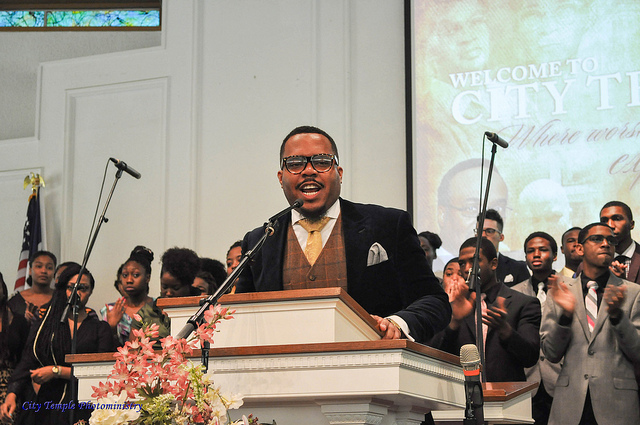
Dynamic speakers develop credibility through their delivery skills.
City Temple SDA Church, Dallas, Texas – Februrary 2, 2013, Oakwood University, Dynamic Priase – CC BY-SA 2.0.
Unfortunately, charisma is difficult to intentionally develop, and some people seem to have a naturally charismatic personality, while others do not. Even though everyone can’t embody the charismatic aspect of dynamism, the other component of dynamism, energy, is something that everyone can tap into. Communicating enthusiasm for your topic and audience by presenting relevant content and using engaging delivery strategies such as vocal variety and eye contact can increase your dynamism.
Logos refers to the reasoning or logic of an argument. The presence of fallacies would obviously undermine a speaker’s appeal to logos. Speakers employ logos by presenting credible information as supporting material and verbally citing their sources during their speech. Using the guidelines from our earlier discussion of reasoning will also help a speaker create a rational appeal. Research shows that messages are more persuasive when arguments and their warrants are made explicit (Stiff & Mongeau, 2003). Carefully choosing supporting material that is verifiable, specific, and unbiased can help a speaker appeal to logos. Speakers can also appeal to logos by citing personal experience and providing the credentials and/or qualifications of sources of information (Cooper & Nothstine, 1996). Presenting a rational and logical argument is important, but speakers can be more effective persuaders if they bring in and refute counterarguments. The most effective persuasive messages are those that present two sides of an argument and refute the opposing side, followed by single argument messages, followed by messages that present counterarguments but do not refute them (Stiff & Mongeau, 2003). In short, by clearly showing an audience why one position is superior to another, speakers do not leave an audience to fill in the blanks of an argument, which could diminish the persuasive opportunity.
Pathos refers to emotional appeals. Aristotle was suspicious of too much emotional appeal, yet this appears to have become more acceptable in public speaking. Stirring emotions in an audience is a way to get them involved in the speech, and involvement can create more opportunities for persuasion and action. Reading in the paper that a house was burglarized may get your attention, but think about how different your reaction would be if you found out it was your own home. Intentionally stirring someone’s emotions to get them involved in a message that has little substance would be unethical. Yet such spellbinding speakers have taken advantage of people’s emotions to get them to support causes, buy products, or engage in behaviors that they might not otherwise, if given the chance to see the faulty logic of a message.
Effective speakers should use emotional appeals that are also logically convincing, since audiences may be suspicious of a speech that is solely based on emotion. Emotional appeals are effective when you are trying to influence a behavior or you want your audience to take immediate action (Stiff & Mongeau, 2003). Emotions lose their persuasive effect more quickly than other types of persuasive appeals. Since emotions are often reactionary, they fade relatively quickly when a person is removed from the provoking situation (Fletcher, 2001).
Emotional appeals are also difficult for some because they require honed delivery skills and the ability to use words powerfully and dramatically. The ability to use vocal variety, cadence, and repetition to rouse an audience’s emotion is not easily attained. Think of how stirring Martin Luther King Jr.’s “I Have a Dream” speech was due to his ability to evoke the emotions of the audience. Dr. King used powerful and creative language in conjunction with his vocalics to deliver one of the most famous speeches in our history. Using concrete and descriptive examples can paint a picture in your audience member’s minds. Speakers can also use literal images, displayed using visual aids, to appeal to pathos.
Speakers should strive to appeal to ethos, logos, and pathos within a speech. A speech built primarily on ethos might lead an audience to think that a speaker is full of himself or herself. A speech full of facts and statistics appealing to logos would result in information overload. Speakers who rely primarily on appeals to pathos may be seen as overly passionate, biased, or unable to see other viewpoints.
Review of Ethos, Logos, and Pathos
- appearing competent, trustworthy, and dynamic;
- sharing their credentials and/or relevant personal experience;
- presenting a balanced and noncoercive argument;
- citing credible sources;
- using appropriate language and grammar;
- being perceived as likable; and
- appearing engaged with the topic and audience through effective delivery.
- presenting factual, objective information that serves as reasons to support the argument;
- presenting a sufficient amount of relevant examples to support a proposition;
- deriving conclusions from known information; and
- using credible supporting material like expert testimony, definitions, statistics, and literal or historical analogies.
- using vivid language to paint word pictures for audience members;
- providing lay testimony (personal stories from self or others);
- using figurative language such as metaphor, similes, and personification; and
- using vocal variety, cadence, and repetition.
Dissonance, Motivation, and Needs
Aristotle’s three rhetorical proofs—ethos, logos, and pathos—have been employed as persuasive strategies for thousands of years. More recently, persuasive strategies have been identified based on theories and evidence related to human psychology. Although based in psychology, such persuasive strategies are regularly employed and researched in communication due to their role in advertising, marketing, politics, and interpersonal relationships. The psychologically based persuasive appeals we will discuss are cognitive dissonance, positive and negative motivation, and appeals to needs.
Cognitive Dissonance
If you’ve studied music, you probably know what dissonance is. Some notes, when played together on a piano, produce a sound that’s pleasing to our ears. When dissonant combinations of notes are played, we react by wincing or cringing because the sound is unpleasant to our ears. So dissonance is that unpleasant feeling we get when two sounds clash. The same principle applies to cognitive dissonance , which refers to the mental discomfort that results when new information clashes with or contradicts currently held beliefs, attitudes, or values. Using cognitive dissonance as a persuasive strategy relies on three assumptions: (1) people have a need for consistency in their thinking; (2) when inconsistency exists, people experience psychological discomfort; and (3) this discomfort motivates people to address the inconsistency to restore balance (Stiff & Mongeau, 2003). In short, when new information clashes with previously held information, there is an unpleasantness that results, as we have to try to reconcile the difference.
Cognitive dissonance isn’t a single-shot persuasive strategy. As we have learned, people are resistant to change and not easy to persuade. While we might think that exposure to conflicting information would lead a rational person to change his or her mind, humans aren’t as rational as we think.
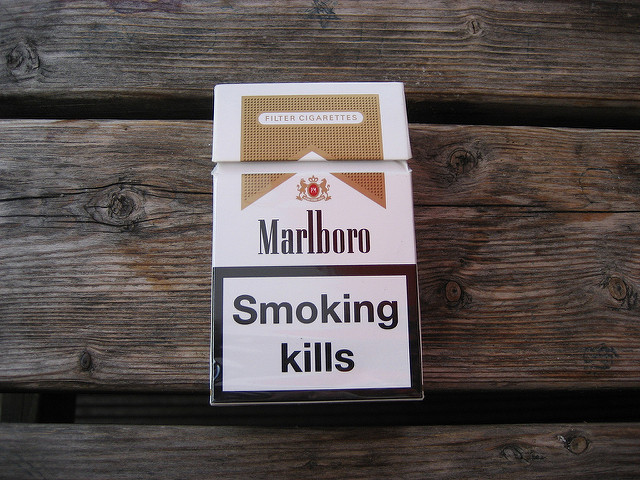
New, larger, and more graphic warning labels on cigarette packaging are meant to induce cognitive dissonance.
Mettamatt – Smoking ad campaign – CC BY-SA 2.0.
There are many different mental and logical acrobatics that people do to get themselves out of dissonance. Some frequently used strategies to resolve cognitive dissonance include discrediting the speaker or source of information, viewing yourself as an exception, seeking selective information that supports your originally held belief, or intentionally avoiding or ignoring sources of cognitive dissonance (Cooper & Nothstine, 1996). As you can see, none of those actually results in a person modifying their thinking, which means persuasive speech goals are not met. Of course, people can’t avoid dissonant information forever, so multiple attempts at creating cognitive dissonance can actually result in thought or behavior modification.
Positive and Negative Motivation
Positive and negative motivation are common persuasive strategies used by teachers, parents, and public speakers. Rewards can be used for positive motivation, and the threat of punishment or negative consequences can be used for negative motivation. We’ve already learned the importance of motivating an audience to listen to your message by making your content relevant and showing how it relates to their lives. We also learned an organizational pattern based on theories of motivation: Monroe’s Motivated Sequence. When using positive motivation , speakers implicitly or explicitly convey to the audience that listening to their message or following their advice will lead to positive results. Conversely, negative motivation implies or states that failure to follow a speaker’s advice will result in negative consequences. Positive and negative motivation as persuasive strategies match well with appeals to needs and will be discussed more next.
Appeals to Needs
Maslow’s hierarchy of needs states that there are several layers of needs that human beings pursue. They include physiological, safety, social, self-esteem, and self-actualization needs (Maslow, 1943). Since these needs are fundamental to human survival and happiness, tapping into needs is a common persuasive strategy. Appeals to needs are often paired with positive or negative motivation, which can increase the persuasiveness of the message.
Figure 11.3 Maslow’s Hierarchy of Needs
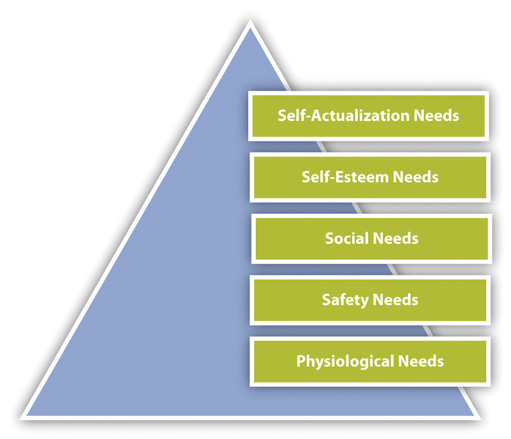
Physiological needs form the base of the hierarchy of needs. The closer the needs are to the base, the more important they are for human survival. Speakers do not appeal to physiological needs. After all, a person who doesn’t have food, air, or water isn’t very likely to want to engage in persuasion, and it wouldn’t be ethical to deny or promise these things to someone for persuasive gain. Some speakers attempt to appeal to self-actualization needs, but I argue that this is difficult to do ethically. Self-actualization refers to our need to achieve our highest potential, and these needs are much more intrapersonal than the others. We achieve our highest potential through things that are individual to us, and these are often things that we protect from outsiders. Some examples include pursuing higher education and intellectual fulfillment, pursuing art or music, or pursuing religious or spiritual fulfillment. These are often things we do by ourselves and for ourselves, so I like to think of this as sacred ground that should be left alone. Speakers are more likely to be successful at focusing on safety, social, and self-esteem needs.
We satisfy our safety needs when we work to preserve our safety and the safety of our loved ones. Speakers can combine appeals to safety with positive motivation by presenting information that will result in increased safety and security. Combining safety needs and negative motivation, a speaker may convey that audience members’ safety and security will be put at risk if the speaker’s message isn’t followed. Combining negative motivation and safety needs depends on using some degree of fear as a motivator. Think of how the insurance industry relies on appeals to safety needs for their business. While this is not necessarily a bad strategy, it can be done more or less ethically.
Ethics of Using Fear Appeals
- Do not overuse fear appeals.
- The threat must be credible and supported by evidence.
- Empower the audience to address the threat.
I saw a perfect example of a persuasive appeal to safety while waiting at the shop for my car to be fixed. A pamphlet cover with a yellow and black message reading, “Warning,” and a stark black and white picture of a little boy picking up a ball with the back fender of a car a few feet from his head beckoned to me from across the room. The brochure was produced by an organization called Kids and Cars, whose tagline is “Love them, protect them.” While the cover of the brochure was designed to provoke the receiver and compel them to open the brochure, the information inside met the ethical guidelines for using fear appeals. The first statistic noted that at least two children a week are killed when they are backed over in a driveway or parking lot. The statistic is followed by safety tips to empower the audience to address the threat. You can see a video example of how this organization effectively uses fear appeals in Video 11.1.
Video Clip 11.1
Kids and Cars: Bye-Bye Syndrome
(click to see video)
This video illustrates how a fear appeal aimed at safety needs can be persuasive. The goal is to get the attention of audience members and compel them to check out the information the organization provides. Since the information provided by the organization supports the credibility of the threat, empowers the audience to address the threat, and is free, this is an example of an ethical fear appeal.
Our social needs relate to our desire to belong to supportive and caring groups. We meet social needs through interpersonal relationships ranging from acquaintances to intimate partnerships. We also become part of interest groups or social or political groups that help create our sense of identity. The existence and power of peer pressure is a testament to the motivating power of social needs. People go to great lengths and sometimes make poor decisions they later regret to be a part of the “in-group.” Advertisers often rely on creating a sense of exclusivity to appeal to people’s social needs. Positive and negative motivation can be combined with social appeals. Positive motivation is present in messages that promise the receiver “in-group” status or belonging, and negative motivation can be seen in messages that persuade by saying, “Don’t be left out.” Although these arguments may rely on the bandwagon fallacy to varying degrees, they draw out insecurities people have about being in the “out-group.”
We all have a need to think well of ourselves and have others think well of us, which ties to our self-esteem needs . Messages that combine appeals to self-esteem needs and positive motivation often promise increases in respect and status. A financial planner may persuade by inviting a receiver to imagine prosperity that will result from accepting his or her message. A publicly supported radio station may persuade listeners to donate money to the station by highlighting a potential contribution to society. The health and beauty industries may persuade consumers to buy their products by promising increased attractiveness. While it may seem shallow to entertain such ego needs, they are an important part of our psychological makeup. Unfortunately, some sources of persuasive messages are more concerned with their own gain than the well-being of others and may take advantage of people’s insecurities in order to advance their persuasive message. Instead, ethical speakers should use appeals to self-esteem that focus on prosperity, contribution, and attractiveness in ways that empower listeners.
Review of Persuasive Strategies
- Ethos. Develops a speaker’s credibility.
- Logos. Evokes a rational, cognitive response from the audience.
- Pathos. Evokes an emotional response from the audience.
- Cognitive dissonance. Moves an audience by pointing out inconsistencies between new information and their currently held beliefs, attitudes, and values.
- Positive motivation. Promises rewards if the speaker’s message is accepted.
- Negative motivation. Promises negative consequences if a speaker’s message is rejected.
- Appeals to safety needs. Evokes an audience’s concern for their safety and the safety of their loved ones.
- Appeals to social needs. Evokes an audience’s need for belonging and inclusion.
- Appeals to self-esteem needs. Evokes an audience’s need to think well of themselves and have others think well of them, too.
“Getting Competent”
Identifying Persuasive Strategies in Mary Fisher’s “Whisper of AIDS” Speech
Mary Fisher’s speech at the 1992 Republican National Convention, “A Whisper of AIDS,” is one of the most moving and powerful speeches of the past few decades. She uses, more than once, all the persuasive strategies discussed in this chapter. The video and transcript of her speech can be found at the following link: http://www.americanrhetoric.com/speeches/maryfisher1992rnc.html . As you watch the speech, answer the following questions:
- Ethos. List specific examples of how the speaker develops the following dimensions of credibility: competence, trustworthiness, and dynamism.
- Logos. List specific examples of how the speaker uses logic to persuade her audience.
- Pathos. How did the speaker appeal to emotion? What metaphors did she use? What other communicative strategies (wording, imagery, etc.) appealed to your emotions?
- List at least one example of how the speaker uses positive motivation.
- List at least one example of how the speaker uses negative motivation.
- List at least one example of how the speaker appeals to safety needs.
- List at least one example of how the speaker appeals to social needs.
- List at least one example of how the speaker utilizes cognitive dissonance.
Sample Persuasive Speech
Title: Education behind Bars Is the Key to Rehabilitation
General purpose: To persuade
Specific purpose : By the end of my speech, my audience will believe that prisoners should have the right to an education.
Thesis statement: There should be education in all prisons, because denying prisoners an education has negative consequences for the prisoner and society, while providing them with an education provides benefits for the prisoner and society.
Introduction
Attention getter: “We must accept the reality that to confine offenders behind walls without trying to change them is an expensive folly with short-term benefits—winning battles while losing the war.” These words were spoken more than thirty years ago by Supreme Court Justice Warren Burger, and they support my argument today that prisoners should have access to education.
Introduction of topic: While we value education as an important part of our society, we do not value it equally for all. Many people don’t believe that prisoners should have access to an education, but I believe they do.
Credibility and relevance: While researching this topic, my eyes were opened up to how much an education can truly affect a prisoner, and given my desire to be a teacher, I am invested in preserving the right to learn for everyone, even if they are behind bars. While I know from our audience analysis activity that some of you do not agree with me, you never know when this issue may hit close to home. Someday, someone you love might make a mistake in their life and end up in prison, and while they are there I know you all would want them to receive an education so that when they get out, they will be better prepared to make a contribution to society.
Preview: Today, I invite you listen with an open mind as I discuss the need for prisoner education, a curriculum that will satisfy that need, and some benefits of prisoner education.
Transition: First I’ll explain why prisoners need access to education.
- His claim is supported by data collected directly from prisoners, 94 percent of whom identify education as a personal reentry need—ranking it above other needs such as financial assistance, housing, or employment.
- Despite the fact that this need is clearly documented, funding for adult and vocational education in correctional education has decreased.
- According to statistics from 2010, as cited in the Corrections Today article, approximately 40 percent of state prison inmates did not complete high school, as compared to 19 percent of the general population.
- Additionally, while about 48 percent of the general public have taken college classes, only about 11 percent of state prisoners have.
- At the skill level, research from the United Kingdom, cited in the 2003 article from Studies in the Education of Adults titled “Learning behind Bars: Time to Liberate Prison Education,” rates of illiteracy are much higher among the prison population than the general population, and there is a link between poor reading skills and social exclusion that may lead people to antisocial behavior.
- The article from Studies in the Education of Adults that I just cited states that prisoners are often treated as objects or subjected to objectifying labels like “ addict , sexual offender , and deviant .”
- While these labels may be accurate in many cases, they do not do much to move the prisoner toward rehabilitation.
- The label student , however, has the potential to do so because it has positive associations and can empower the prisoner to make better choices to enhance his or her confidence and self-worth.
Transition: Now that I’ve established the need for prisoner education, let’s examine how we can meet that need.
- Some states have implemented programs that require inmates to attend school for a certain amount of time if they do not meet minimum standards for certain skills such as reading or math.
- While these are useful programs, prisoner education shouldn’t be limited to or focused on those with the least amount of skills.
- The article notes that even prisoners who have attended or even graduated from college may benefit from education, as they can pursue specialized courses or certifications.
- These courses will teach prisoners basic reading, writing, and math skills that may be lacking.
- Since there is a stigma associated with a lack of these basic skills, early instruction should be one-one-one or in small groups.
- The second tier should prepare prisoners who have not completed the equivalent of high school to progress on to a curriculum modeled after that of most high schools, which will prepare them for a GED.
- Basic general education goals include speaking, writing, listening, reading, and math.
- Once these general education requirements have been met, prisoners should be able to pursue specialized vocational training or upper-level college courses in a major of study, which may need to be taken online through distance learning, since instructors may not be available to come to the actual prisons to teach.
- Some population-specific areas of study that wouldn’t be covered in a typical classroom include drug treatment and anger management.
- Life skills such as budgeting, money management, and healthy living can increase confidence.
- Classes that focus on social skills, parenting, or relational communication can also improve communication skills and relational satisfaction; for example, workshops teaching parenting skills have been piloted to give fathers the skills needed to more effectively communicate with their children, which can increase feelings of self-worth.
- Under the supervision of faculty and/or staff, prisoners could be given the task of organizing an outside speaker to come to the prison or put together a workshop.
- Students could also organize a debate against students on the outside, which could allow the prisoners to interact (face-to-face or virtually) with other students and allow them to be recognized for their academic abilities.
- Even within the prison, debates, trivia contests, paper contests, or speech contests could be organized between prisoners or between prisoners and prison staff as a means of healthy competition.
- Finally, prisoners who are successful students should be recognized and put into peer-mentoring roles, because, as Behan states in the article, “a prisoner who…has had an inspirational learning experience acts as a more positive advocate for the school than any [other method].”
Transition: The model for prisoner education that I have just outlined will have many benefits.
- The article I just cited from the Journal of Correctional Education states that the self-reflection and critical thinking that are fostered in an educational setting can help prisoners reflect on how their actions affected them, their victims, and/or their communities, which may increase self-awareness and help them better reconnect with a civil society and reestablish stronger community bonds.
- The Corrections Today article also notes that prisoners who completed a GED reoffended at a rate 20 percent lower than the general prison population, and those that completed a college degree reoffended at a rate 44 percent lower than the general prison population.
- Simply put, according to the article in the Studies in the Education of Adults I cited earlier, the skills gained through good prison education programs make released prisoners more desirable employees, which increases their wages and helps remove them from a negative cycles of stigma and poverty that led many of them to crime in the first place.
- Further, the ability to maintain consistent employment has been shown to reduce the rate of reoffending.
- An entry on eHow.com by Kinney about the benefits of prisoners getting GEDs notes that a successful educational program in a prison can create a more humane environment that will positively affect the officers and staff as well.
- Such programs also allow prisoners to do more productive things with their time, which lessens violent and destructive behavior and makes prison workers’ jobs safer.
- Giving prisoners time-off-sentence credits for educational attainment can help reduce the prison population, as eligible inmates are released earlier because of their educational successes.
- As noted by the Corrections Today article, during the 2008–9 school year the credits earned by prisoners in the Indiana system led to more than $68 million dollars in avoided costs.
Transition to conclusion and summary of importance: In closing, it’s easy to see how beneficial a good education can be to a prisoner. Education may be something the average teenager or adult takes for granted, but for a prisoner it could be the start of a new life.
Review of main points: There is a clear need for prisoner education that can be met with a sound curriculum that will benefit prisoners, those who work in prisons, and society at large.
Closing statement: While education in prisons is still a controversial topic, I hope you all agree with me and Supreme Court Justice Burger, whose words opened this speech, when we say that locking a criminal away may offer a short-term solution in that it gets the criminal out of regular society, but it doesn’t better the prisoner and it doesn’t better us in the long run as a society.
Bayliss, P. (2003). Learning behind bars: Time to liberate prison education. Studies in the Education of Adults, 35 (2), 157–172.
Behan, C. (2007). Context, creativity and critical reflection: Education in correctional institutions. Journal of Correctional Education, 58 (2), 157–169.
Foley, R. (2004). Correctional education: Characteristics of academic programs serving incarcerated adults. Journal of Correctional Education, 55 (1), 6–21.
Kinney, A. (2011). What are the benefits of inmates getting GEDs? Ehow.com . Retrieved from http://www.ehow.com/list_6018033_benefits-inmates-getting-geds_.html
Steurer, S. J., Linton, J., Nally, J., & Lockwood, S. (2010). The top-nine reasons to increase correctional education programs. Corrections Today, 72 (4), 40–43.
Key Takeaways
- Ethos refers to the credibility of a speaker and is composed of three dimensions: competence, trustworthiness, and dynamism. Speakers develop ethos by being prepared, citing credible research, presenting information in a nonmanipulative way, and using engaging delivery techniques.
- Logos refers to the reasoning or logic of an argument. Speakers appeal to logos by presenting factual objective information, using sound reasoning, and avoiding logical fallacies.
- Pathos refers to emotional appeals. Speakers appeal to pathos by using vivid language, including personal stories, and using figurative language.
- Cognitive dissonance refers to the mental discomfort that results from new information clashing with currently held beliefs, attitudes, or values. Cognitive dissonance may lead a person to be persuaded, but there are other ways that people may cope with dissonance, such as by discrediting the speaker, seeking out alternative information, avoiding sources of dissonance, or reinterpreting the information.
- Speakers can combine positive and negative motivation with appeals to safety, social, or self-esteem needs in order to persuade.
- Ethos, or credibility, is composed of three dimensions: competence, trustworthiness, and dynamism. Of those dimensions, which is most important for you when judging someone’s credibility and why?
- Recount a time when you experienced cognitive dissonance. What was the new information and what did it clash with? What coping strategies, of the ones discussed in the chapter, did you use to try to restore cognitive balance?
- How ethical do you think it is for a speaker to rely on fear appeals? When do fear appeals cross the line?
- Imagine that you will be delivering a persuasive speech to a group of prospective students considering attending your school. What could you say that would appeal to their safety needs? Their social needs? Their self-esteem needs?
Cooper, M. D., and William L. Nothstine, Power Persuasion: Moving an Ancient Art into the Media Age (Greenwood, IN: Educational Video Group, 1996), 48.
Fletcher, L., How to Design and Deliver Speeches , 7th ed. (New York: Longman, 2001), 342.
Maslow, A. H., “A Theory of Human Motivation,” Psychological Review 50 (1943): 370–96.
Stiff, J. B., and Paul A. Mongeau, Persuasive Communication , 2nd ed. (New York: Guilford Press, 2003), 105.
Communication in the Real World Copyright © 2016 by University of Minnesota is licensed under a Creative Commons Attribution-NonCommercial-ShareAlike 4.0 International License , except where otherwise noted.

17.5 Theories of Persuasive Communication
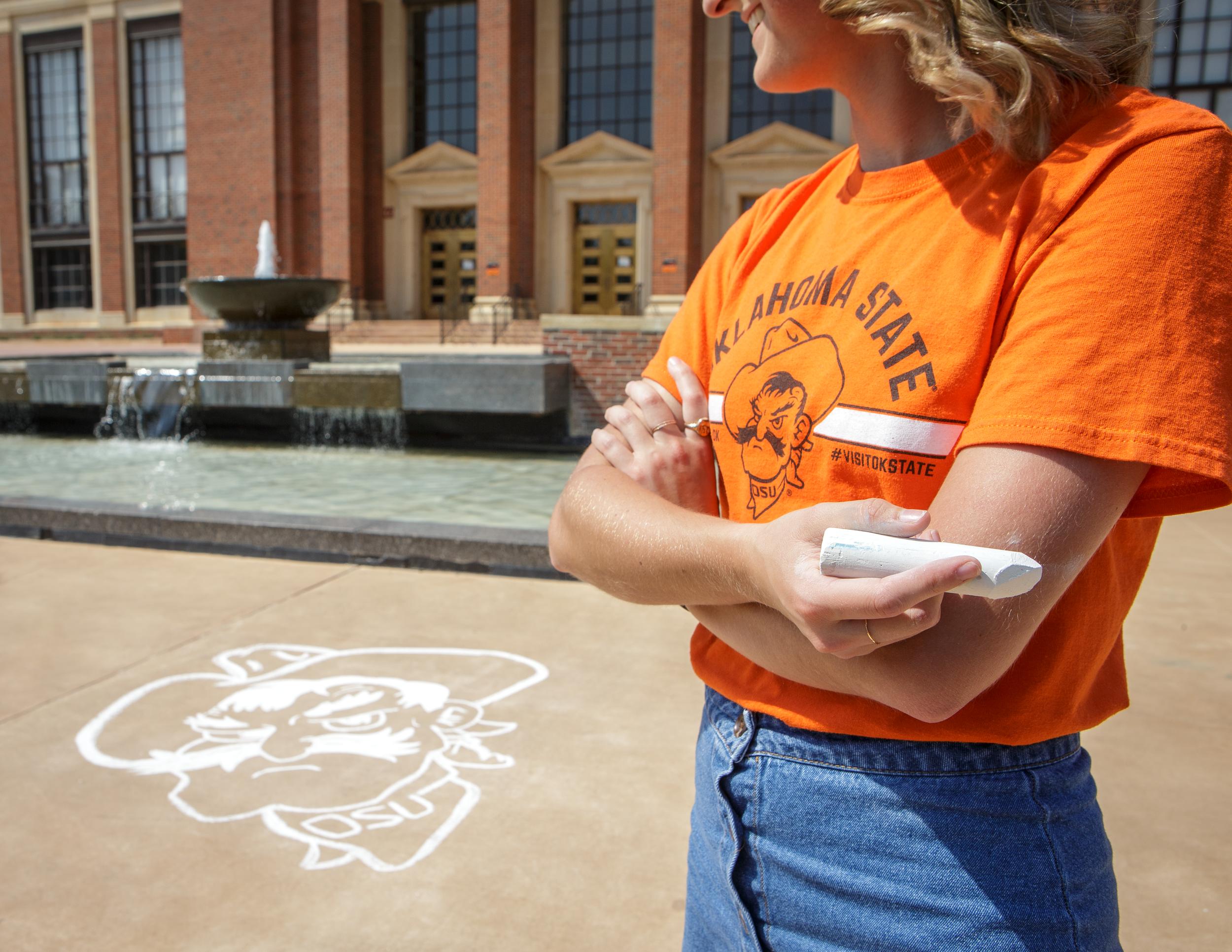
There are many theories of persuasion in communication studies. Three of the main theories that are often associated with persuasion are the social judgment theory, cognitive dissonance theory, and the elaboration likelihood model.
Social Judgment Theory
Muzafer Sherif and Carl Hovland created social judgment theory in an attempt to determine what types of communicative messages and under what conditions communicated messages will lead to a change in someone’s behavior (Sherif & Hovland, 1961). In essence, Sherif and Hovland found that people’s perceptions of attitudes, values, beliefs, and behaviors exist on a continuum including latitude of rejection, latitude of noncommitment, and latitude of acceptance.
Latitudes of Judgments
Imagine that you are planning to persuade your peers to major in a foreign language in college. Some of the students in your class may disagree with you right off the bat, representing the latitude of rejection. Other students may think majoring in a foreign language is a great idea, representing the latitude of acceptance. Still others are really going to have no opinion either way, representing the latitude of noncommitment. Within each of these different latitudes there is a range of possibilities. For example, one of your listeners may be perfectly willing to accept the idea of minoring in a foreign language, but when asked to major or even double major in a foreign language, he or she may end up in the latitude of noncommitment or even rejection.
Not surprisingly, Sherif and Hovland found that persuasive messages are the most likely to succeed when they fall into an individual’s latitude of acceptance. For example, if you are giving your speech on majoring in a foreign language, people who are in favor of majoring in a foreign language are more likely to positively evaluate your message, assimilate your advice into their own ideas, and engage in desired behavior. On the other hand, people who reject your message are more likely to negatively evaluate your message, not assimilate your advice, and not engage in desired behavior.
In an ideal world, we would always be persuading people who agree with our opinions, but that is not reality. Instead, we often find ourselves in situations where we are trying to persuade others to accept attitudes, values, beliefs, and behaviors with which they may not agree. To help us persuade others, what we need to think about is the range of possible attitudes, values, beliefs, and behaviors that exist. For example, in our foreign language case, we may see the following possible opinions from our audience members:
- Complete agreement. All of us should major in foreign languages.
- Strong agreement. I will not major in a foreign language, but I will double major in a foreign language.
- Agreement in part. I will not major in a foreign language, but I will minor in a foreign language.
- Neutral. While I think studying a foreign language can be worthwhile, I also think a college education can be complete without it. I really do not feel strongly one way or the other.
- Disagreement in part. I will only take the foreign language classes required by my major.
- Strong disagreement. I do not think I should have to take any foreign language classes.
- Complete disagreement. Majoring in a foreign language is a complete waste of a college education.
These seven possible opinions on the subject do not represent the full spectrum of choices, but give us various degrees of agreement with the general topic. Sherif and Hovland theorized that persuasion is a matter of knowing how great the discrepancy or difference is between the speaker’s viewpoint and that of the audience. If the speaker’s point of view is similar to that of audience members, then persuasion is more likely. If the discrepancy between the idea proposed by the speaker and the audience’s viewpoint is too great, then the likelihood of persuasion decreases dramatically.
Discrepancy and Attitude Change
Furthermore, Sherif and Hovland (1961) predicted that there was a threshold for most people where attitude change was not possible and people slipped from the latitude of acceptance into the latitude of noncommitment or rejection. Figure 17.2 “Discrepancy and Attitude Change” represents this process. All the area covered by the left side of the curve represents options a person would agree with, even if there is an initial discrepancy between the speaker and audience member at the start of the speech. However, there comes a point where the discrepancy between the speaker and audience member becomes too large, which moves into the options that will be automatically rejected by the audience member. In essence, it becomes essential for you to know which options you can realistically persuade your audience to and which options will never happen. Maybe there is no way for you to persuade your audience to major or double major in a foreign language, but perhaps you can get them to minor in a foreign language.
Cognitive Dissonance Theory
In 1957, Leon Festinger proposed another theory for understanding how persuasion functions: cognitive dissonance theory (Festinger, 1957). Cognitive dissonance is an aversive motivational state that occurs when an individual entertains two or more contradictory attitudes, values, beliefs, or behaviors simultaneously. For example, maybe you know you should be working on your speech, but you really want to go to a movie with a friend. In this case, practicing your speech and going to the movie are two cognitions that are inconsistent with one another. The goal of persuasion is to induce enough dissonance in listeners that they will change their attitudes, values, beliefs, or behaviors.
Frymier and Nadler (2007) noted that for cognitive dissonance to work effectively there are three necessary conditions: aversive consequences, freedom of choice, and insufficient external justification. First, for cognitive dissonance to work, there needs to be a strong enough aversive consequence, or punishment, for not changing one’s attitudes, values, beliefs, or behaviors. For example, maybe you are giving a speech on why people need to eat more apples. If your aversive consequence for not eating apples is that your audience will not get enough fiber, most people will simply not be persuaded, because the punishment is not severe enough. Instead, for cognitive dissonance to work, the punishment associated with not eating apples needs to be significant enough to change behaviors. If you convince your audience that without enough fiber in their diets they are at higher risk for heart disease or colon cancer, they might fear the aversive consequences enough to change their behavior.
The second condition necessary for cognitive dissonance to work is that people must have a freedom of choice. If listeners feel they are being coerced into doing something, then dissonance will not be aroused. They may alter their behavior in the short term, but as soon as the coercion is gone, the original behavior will reemerge. It is like the person who drives more slowly when a police officer is nearby but ignores speed limits once officers are no longer present. As a speaker, if you want to increase cognitive dissonance, you need to make sure that your audience does not feel coerced or manipulated, but rather that they can clearly see that they have a choice of whether to be persuaded.
The final condition necessary for cognitive dissonance to work has to do with external and internal justifications. External justification refers to the process of identifying reasons outside of one’s own control to support one’s behaviors, beliefs, and attitudes. Internal justification occurs when someone voluntarily changes a behavior, belief, or attitude to reduce cognitive dissonance. When it comes to creating change through persuasion, external justifications are less likely to result in change than internal justifications (Festinger & Carlsmith, 1959).
Elaboration Likelihood Model
The elaboration likelihood model created by Petty and Cacioppo (1986) has a continuum from high elaboration or thought to low elaboration or thought. For the purposes of Petty and Cacioppo’s model, the term elaboration refers to the amount of thought or cognitive energy someone uses for analyzing the content of a message. High elaboration uses the central route and is designed for analyzing the content of a message. As such, when people truly analyze a message, they use cognitive energy to examine the arguments set forth within the message. In an ideal world, everyone would process information through this central route and actually analyze arguments presented to them. Unfortunately, many people often use the peripheral route for attending to persuasive messages, which results in low elaboration or thought. Low elaboration occurs when people attend to messages but do not analyze the message or use cognitive energy to ascertain the arguments set forth in a message.
For researchers of persuasion, the question then becomes: how do people select one route or the other when attending to persuasive messages? Petty and Cacioppo noted that there are two basic factors for determining whether someone centrally processes a persuasive message: ability and motivation. First, audience members must be able to process the persuasive message. If the language or message is too complicated, then people will not highly elaborate on it because they will not understand the persuasive message. Motivation, on the other hand, refers to whether the audience member chooses to elaborate on the message. Frymier and Nadler discussed five basic factors that can lead to high elaboration: personal relevance and personal involvement, accountability, personal responsibility, incongruent information, and need for cognition (Frymier & Nadler, 2007).
Personal Relevance and Personal Involvement
The first reason people are motivated to take the central route or use high elaboration when listening to a persuasive message involves personal relevance and involvement. Personal relevance refers to whether the audience member feels that he or she is actually directly affected by the speech topic. For example, if someone is listening to a speech on why cigarette smoking is harmful, and that listener has never smoked cigarettes, he or she may think the speech topic simply is not relevant. Obviously, as a speaker you should always think about how your topic is relevant to your listeners and make sure to drive this home throughout your speech. Personal involvement, on the other hand, asks whether the individual is actively engaged with the issue at hand: sends letters of support, gives speeches on the topic, has a bumper sticker, and so forth. If an audience member is an advocate who is constantly denouncing tobacco companies for the harm they do to society, then he or she would be highly involved (i.e., would engage in high elaboration) in a speech that attempts to persuade listeners that smoking is harmful.
Accountability
The second condition under which people are likely to process information using the central route is when they feel that they will be held accountable for the information after the fact. With accountability, there is the perception that someone, or a group of people, will be watching to see if the receiver remembers the information later on. We have all witnessed this phenomenon when one student asks the question “will this be on the test?” If the teacher says “no,” you can almost immediately see the glazed eyes in the classroom as students tune out the information. As a speaker, it is often hard to hold your audience accountable for the information given within a speech.
Personal Responsibility
When people feel that they are going to be held responsible, without a clear external accounting, for the evaluation of a message or the outcome of a message, they are more likely to critically think through the message using the central route. For example, maybe you are asked to evaluate fellow students in your public speaking class. Research has shown that if only one or two students are asked to evaluate any one speaker at a time, the quality of the evaluations for that speaker will be better than if everyone in the class is asked to evaluate every speaker. When people feel that their evaluation is important, they take more responsibility and, therefore, are more critical of the message delivered.
Incongruent Information
Some people are motivated to centrally process information when it does not adhere to their own ideas. Maybe you are a highly progressive liberal, and one of your peers delivers a speech on the importance of the Tea Party movement in American politics. The information presented during the speech will most likely be in direct contrast to your personal ideology, which causes incongruence because the Tea Party ideology is opposed to a progressive liberal ideology. As such, you are more likely to pay attention to the speech, specifically looking for flaws in the speaker’s argument.
Need for Cognition
The final reason some people centrally process information is because they have a personality characteristic called need for cognition. Need for cognition refers to a personality trait characterized by an internal drive or need to engage in critical thinking and information processing. People who are high in need for cognition simply enjoy thinking about complex ideas and issues. Even if the idea or issue being presented has no personal relevance, high need for cognition people are more likely to process information using the central route.
Festinger, L. (1957). A theory of cognitive dissonance. Row, Peterson, & Company.
Festinger, L., & Carlsmith, J. M. (1959). Cognitive consequences of forced compliance. Journal of Abnormal and Social Psychology, 58, 203–210.
Frymier, A. B., & Nadler, M. K. (2007). Persuasion: Integrating theory, research, and practice . Kendall/Hunt.
Petty, R. E., & Cacioppo, J. T. (1986). The elaboration likelihood model of persuasion. Advances in Experimental Social Psychology, 19, 123–205.
Sherif, M., & Hovland, C. I. (1961). Social judgment: Assimilation and contrast effects in communication and attitude change. Yale University Press.
Introduction to Speech Communication Copyright © 2021 by Individual authors retain copyright of their work. is licensed under a Creative Commons Attribution-NonCommercial-ShareAlike 4.0 International License , except where otherwise noted.
Share This Book
- Search Menu
- Advance Articles
- Author Guidelines
- Submission Site
- Open Access
- Self-Archiving Policy
- Why Submit?
- About Human Communication Research
- About International Communication Association
- Editorial Board
- Advertising & Corporate Services
- Journals Career Network
- Journals on Oxford Academic
- Books on Oxford Academic
- < Previous
The Persuasive Effects of Metaphor: A Meta-Analysis
- Article contents
- Figures & tables
- Supplementary Data
Pradeep Sopory, James Price Dillard, The Persuasive Effects of Metaphor: A Meta-Analysis, Human Communication Research , Volume 28, Issue 3, July 2002, Pages 382–419, https://doi.org/10.1111/j.1468-2958.2002.tb00813.x
- Permissions Icon Permissions
Empirical investigations of metaphor's persuasive effects have produced mixed results. In an effort to integrate the literature, we present a review and meta-analytic summary of existing studies. Six explanations for the potential suasory advantage of metaphor over literal language were reviewed: (a) pleasure or relief, (b) communicator credibility, (c) reduced counterarguments, (d) resource-matching, (e) stimulated elaboration, and (f) superior organization. Next, a meta-analysis was conducted and the impact of seven moderator variables was tested. The overall effect for the metaphor-literal comparison for attitude change was r = .07, which supported the claim that metaphors enhance persuasion. The effect rose to r = .42 under optimal conditions, when a single, nonextended metaphor was novel, had a familiar target, and was used early in a message. Metaphor appeared to exert a small effect on perceptions of source dynamism (r = .06), but showed no demonstrable impact on competence (r =−.01) or character (r =−.02). Of the six theories considered, the superior organization explanation of metaphor's persuasive impact was most supported by the results.
Email alerts
Citing articles via.
- Recommend to Your Librarian
- Advertising and Corporate Services
Affiliations
- Online ISSN 1468-2958
- Copyright © 2024 International Communication Association
- About Oxford Academic
- Publish journals with us
- University press partners
- What we publish
- New features
- Open access
- Institutional account management
Rights and permissions
- Get help with access
- Accessibility
- Advertising
- Media enquiries
- Oxford University Press
- Oxford Languages
- University of Oxford
Oxford University Press is a department of the University of Oxford. It furthers the University's objective of excellence in research, scholarship, and education by publishing worldwide
- Copyright © 2024 Oxford University Press
- Cookie settings
- Cookie policy
- Privacy policy
- Legal notice
This Feature Is Available To Subscribers Only
Sign In or Create an Account
This PDF is available to Subscribers Only
For full access to this pdf, sign in to an existing account, or purchase an annual subscription.

11 Persuasive Speaking
Introduction, 11.1 foundation of persuasion.
Persuasive speaking seeks to influence the beliefs, attitudes, values, or behaviors of audience members. In order to persuade, a speaker has to construct arguments that appeal to audience members (Poggi, 2005). Arguments form around three components: claim, evidence, and warrant.
The claim is the statement that will be supported by evidence. Your thesis statement is the overarching claim for your speech, but you will make other claims within the speech to support the larger thesis (Nordquist, 2020). Evidence , also called grounds, supports the claim (McCroskey, 1969). The main points of your persuasive speech and the supporting material you include serve as evidence. For example, a speaker may make the following claim: “There should be a national law against texting while driving.” The speaker could then support the claim by providing the following evidence: “Research from the US Department of Transportation has found that texting while driving creates a crash risk that is twenty-three times worse than driving while not distracted.” The warrant is the underlying justification that connects the claim and the evidence (McCroskey, 1966). One warrant for the claim and evidence cited in this example is that the U.S. Department of Transportation is an institution that funds research conducted by credible experts. An additional and more implicit warrant is that people should not do things they know are unsafe.
As you put together a persuasive argument, you act as the judge. You can evaluate arguments that you come across in your research by analyzing the connection (the warrant) between the claim and the evidence (McCroskey, 1966). If the warrant is strong, you may want to highlight that argument in your speech. You may also be able to point out a weak warrant in an argument that goes against your position, which you could then include in your speech. Every argument starts by putting together a claim and evidence, but arguments grow to include many interrelated units.
11.2 Adapting Persuasive Messages
Competent speakers should consider their audience throughout the speech-making process. Given that persuasive messages seek to influence directly the audience in some way, audience adaptation becomes even more important (Hamm, 2006).
When you have audience members who already agree with your proposition, you should focus on intensifying their agreement. You can also assume that they have foundational background knowledge of the topic, which means you can take the time to inform them about lesser-known aspects of a topic or cause to reinforce further their agreement. Rather than move these audience members from disagreement to agreement, you can focus on moving them from agreement to action. Remember, calls to action should be as specific as possible to help you capitalize on audience members’ motivation in the moment, so they are more likely to follow through on the action (Hamm, 2006).
There are two main reasons audience members may be neutral about your topic: (1) they are uninformed about the topic or (2) they do not think the topic affects them. In this case, you should focus on instilling a concern for the topic. Uninformed audiences may need background information before they can decide if they agree or disagree with your proposition. If the issue is familiar but audience members are neutral because they do not see how the topic affects them, focus on getting the audience’s attention and demonstrating relevance. Remember that concrete and proxemic supporting materials will help an audience find relevance in a topic. Students who pick narrow or unfamiliar topics will have to work harder to persuade their audience, but neutral audiences often provide the most chance of achieving your speech goal since even a small change may move them into agreement (Williams, 2018).
When audience members disagree with your proposition, you should focus on changing their minds. To persuade effectively, you must be seen as a credible speaker. When an audience is hostile to your proposition, establishing credibility is even more important, as audience members may be quick to discount or discredit someone who does not appear prepared or does not present well-researched and supported information. Do not give an audience a chance to write you off before you even get to share your best evidence. When facing a disagreeable audience, the goal should also be small change. You may not be able to switch someone’s position completely but influencing him or her is still a success. Aside from establishing your credibility, you should also establish common ground with an audience. Acknowledging areas of disagreement and logically refuting counterarguments in your speech is also a way to approach persuading an audience in disagreement, as it shows that you are open-minded enough to engage with other perspectives (Williams, 2018).
11.3 Determining Your Proposition
The proposition of your speech is the overall direction of the content and how that content relates to the speech goal. A persuasive speech will fall primarily into one of three categories: propositions of fact, value, or policy (Mackay, 2012). A speech may have elements of any of the three propositions, but you can usually determine the overall proposition of a speech from the specific purpose and thesis statements.
Propositions of fact focus on beliefs and try to establish that something “is or isn’t.” Propositions of value focus on persuading audience members that something is “good or bad,” “right or wrong,” or “desirable or undesirable.” Propositions of policy advocate that something “should or shouldn’t” be done (Mackay, 2012). Since most persuasive speech topics can be approached as propositions of fact, value, or policy, it is a good idea to start thinking about what kind of proposition you want to make, as it will influence how you go about your research and writing. As you can see in the following example using the topic of global warming, the type of proposition changes the types of supporting materials you would need:

- Proposition of fact. Increased greenhouse gases related to human activity cause global warming.
- Proposition of value. America’s disproportionately large amount of pollution relative to other countries is wrong.
- Proposition of policy. There should be stricter emission restrictions on individual cars.
To support propositions of fact, you would want to present a logical argument based on objective facts that can then be used to build persuasive arguments. Propositions of value may require you to appeal more to your audience’s emotions and cite expert and lay testimony. Persuasive speeches about policy usually require you to research existing and previous laws or procedures and determine if any relevant legislation or propositions are currently being considered (Barton & Tucker, 2021).
11.4 Organizing a Persuasive Speech
We have already discussed several patterns for organizing your speech, but some organization strategies are specific to persuasive speaking. Some persuasive speech topics lend themselves to a topical organization pattern, which breaks the larger topic up into logical divisions. Recency and primacy, as well as adapting a persuasive speech based on the audience’s orientation toward the proposition can be connected when organizing a persuasive speech topically. Primacy means putting your strongest information first. It is based on the idea that audience members put more weight on what they hear first. This strategy can be especially useful when addressing an audience that disagrees with your proposition, as you can try to win them over early. Recency means putting your strongest information last to leave a powerful impression. This can be useful when you are building to a climax in your speech, specifically if you include a call to action (Morrison, 2015).
The problem-solution pattern is an organizational pattern that advocates for a particular approach to solve a problem. You would provide evidence to show that a problem exists and then propose a solution with additional evidence or reasoning to justify the course of action (Macasieb, 2018). One main point addressing the problem and one main point addressing the solution may be sufficient, but you are not limited to two. You could add a main point between the problem and solution that outlines other solutions that have failed. You can also combine the problem-solution pattern with the cause-effect pattern or expand the speech to fit with Monroe’s Motivated Sequence.
The cause-effect pattern can be used for informative speaking when the relationship between the cause and effect is not contested. The pattern is more fitting for persuasive speeches when the relationship between the cause and effect is controversial or unclear. There are several ways to use causes and effects to structure a speech. You could have a two-point speech that argues from cause to effect or from effect to cause. You could also have more than one cause that leads to the same effect or a single cause that leads to multiple effects. The following are some examples of thesis statements that correspond to various organizational patterns. As you can see, the same general topic area, prison overcrowding, is used for each example. This illustrates the importance of considering your organizational options early in the speech-making process, since the pattern you choose will influence your researching and writing.
- Problem-solution. Prison overcrowding is a serious problem that we can solve by finding alternative rehabilitation for nonviolent offenders.
- Problem–failed solution–proposed solution. Prison overcrowding is a serious problem that should not be solved by building more prisons; instead, we should support alternative rehabilitation for nonviolent offenders.
- Cause-effect. Prisons are overcrowded with nonviolent offenders, which leads to lesser sentences for violent criminals.
- Cause-cause-effect. State budgets are being slashed and prisons are overcrowded with nonviolent offenders, which leads to lesser sentences for violent criminals.
- Cause-effect-effect. Prisons are overcrowded with nonviolent offenders, which leads to increased behavioral problems among inmates and lesser sentences for violent criminals.
- Cause-effect-solution. Prisons are overcrowded with nonviolent offenders, which leads to lesser sentences for violent criminals; therefore, we need to find alternative rehabilitation for nonviolent offenders.
Monroe’s motivated sequence is an organizational pattern designed for persuasive speaking that appeals to audience members’ needs and motivates them to action (Watt & Barnett, 2021). If your persuasive speaking goals include a call to action, you may want to consider this organizational pattern. Here is an example of that pattern:
Step 1: Attention
- Hook the audience by making the topic relevant to them.
- Imagine living a full life, retiring, and slipping into your golden years. As you get older, you become more dependent on others and move into an assisted-living facility. Although you think life will be easier, things get worse as you experience abuse and mistreatment from the staff. You report the abuse to a nurse and wait, but nothing happens and the abuse continues. Elder abuse is a common occurrence, and unlike child abuse, there are no laws in our state that mandate complaints of elder abuse be reported or investigated.
Step 2: Need
- Cite evidence to support the fact that the issue needs to be addressed.
- According to the American Psychological Association, one to two million elderly Americans have been abused by their caretakers. In our state, those in the medical, psychiatric, and social work field are required to report suspicion of child abuse but are not mandated to report suspicions of elder abuse.
Step 3: Satisfaction
- Offer a solution and persuade the audience that it is feasible and well thought out.
- There should be a federal law mandating that suspicion of elder abuse be reported and that all claims of elder abuse be investigated.
Step 4: Visualization
- Take the audience beyond your solution and help them visualize the positive results of implementing it or the negative consequences of not.
- Elderly people should not have to live in fear during their golden years. A mandatory reporting law for elderly abuse will help ensure that the voices of our elderly loved ones will be heard.
Step 5: Action
- Call your audience to action by giving them concrete steps to follow to engage in a particular action or to change a thought or behavior.
- I urge you to take action in two ways. First, raise awareness about this issue by talking to your own friends and family. Second, contact your representatives at the state and national level to let them know that elder abuse should be taken seriously and given the same level of importance as other forms of abuse. I brought cards with the contact information for our state and national representatives for this area. Please take one at the end of my speech. A short e-mail or phone call can help end the silence surrounding elder abuse.
11.5 Persuasive Reasoning and Fallacies
Persuasive speakers should be concerned with what strengthens and weakens an argument. Knowing different types of reasoning can help you put claims and evidence together in persuasive ways and help you evaluate the quality of arguments that you encounter. Further, being able to identify common fallacies of reasoning can help you be a more critical consumer of persuasive messages.
Reasoning refers to the process of making sense of things around us. In order to understand our experiences, draw conclusions from information, and present new ideas, we must use reasoning. We often reason without being aware of it, however, becoming more aware of how we think can empower us to be better producers and consumers of communicative messages. The three types of reasoning we will explore are inductive, deductive, and causal.
Inductive Reasoning

Inductive reasoning reaches conclusions through the citation of examples and is the most frequently used form of logical reasoning (Walter, 1966). While introductory speakers are initially attracted to inductive reasoning because it seems easy, it can be difficult to employ well. Inductive reasoning, unlike deductive reasoning, does not result in true or false conclusions. Instead, since conclusions are generalized based on observations or examples, conclusions are “more likely” or “less likely.” Despite the fact that this type of reasoning is not definitive, it can still be valid and persuasive.
Some arguments based on inductive reasoning will be more cogent, or convincing and relevant, than others. For example, inductive reasoning can be weak when claims are made too generally. An argument that fraternities should be abolished from campus because they contribute to underage drinking and do not uphold high academic standards could be countered by providing examples of fraternities that sponsor alcohol education programming for the campus and have members that have excelled academically (Walter, 1966). In this case, one overly general claim is countered by another general claim, and both of them have some merit. It would be more effective to present a series of facts and reasons and then share the conclusion or generalization that you have reached from them.
You can see inductive reasoning used in the following speech excerpt from President George W. Bush’s address to the nation on the evening of September 11, 2001. Notice how he lists a series of events from the day, which builds to his conclusion that the terrorist attacks failed in their attempt to shake the foundation of America.
“Today, our fellow citizens, our way of life, our very freedom came under attack in a series of deliberate and deadly terrorist acts. The victims were in airplanes or in their offices: secretaries, business men and women, military and federal workers, moms and dads, friends, and neighbors. Thousands of lives were suddenly ended by evil, despicable acts of terror. The pictures of airplanes flying into building, fires burning, huge—huge structures collapsing have filled us with disbelief, terrible sadness, and a quiet unyielding anger. These acts of mass murder were intended to frighten our nation into chaos and retreat. But they have failed. Our country is strong. A great people has been moved to defend a great nation. Terrorist attacks can shake the foundations of our biggest buildings, but they cannot touch the foundation of America.”
If a speaker is able to provide examples that are concrete, proxemic, and relevant to the audience, as Bush did in this example, audience members are prompted to think of additional examples that connect to their own lives. Inductive reasoning can be useful when an audience disagrees with your proposition. As you present logically connected examples as evidence that build to a conclusion, the audience may be persuaded by your evidence before they realize that the coming conclusion will counter what they previously thought. This also sets up cognitive dissonance, which is a persuasive strategy we will discuss later.
Reasoning by analogy is a type of inductive reasoning that argues that what is true in one set of circumstances will be true in another (Walter, 1966). Reasoning by analogy has been criticized and questioned by logicians, since two sets of circumstances are never exactly the same. While this is true, our goal when using reasoning by analogy in persuasive speaking is not to create absolutely certain conclusions but to cite cases and supporting evidence that can influence an audience. For example, let’s say you are trying to persuade a university to adopt an alcohol education program by citing the program’s success at other institutions. Since two universities are never exactly the same, the argument cannot be airtight. To better support this argument, you could first show that the program was actually successful using various types of supporting material such as statistics from campus offices and testimony from students and staff. Second, you could show how the cases relate by highlighting similarities in the campus setting, culture, demographics, and previous mission. Since you cannot argue that the schools are similar in all ways, choose to highlight significant similarities. In addition, it is better to acknowledge significant limitations of the analogy and provide additional supporting material to address them than it is to ignore or hide such limitations.
So how do we evaluate inductive reasoning? When inductive reasoning is used to test scientific arguments, there is rigorous testing and high standards that must be met for a conclusion to be considered valid. Inductive reasoning in persuasive speaking is employed differently. A speaker cannot cite every example that exists to build to a conclusion, so to evaluate inductive reasoning you must examine the examples that are cited in ways other than quantity. First, the examples should be sufficient, meaning that enough are cited to support the conclusion. If not, you risk committing the hasty generalization fallacy. A speaker can expect that the audience will be able to think of some examples as well, so there is no set number on how many examples is sufficient. If the audience is familiar with the topic, then fewer examples are probably sufficient, while more may be needed for unfamiliar topics. A speaker can make his or her use of reasoning by example more powerful by showing that the examples correspond to the average case, which may require additional supporting evidence in the form of statistics. Arguing that teacher salaries should be increased by providing an example of a teacher who works side jobs and pays for his or her own school supplies could be effectively supported by showing that this teacher’s salary corresponds to the national average (Walter, 1966).
Second, the examples should be typical, meaning they were not cherry-picked to match the point being argued. A speaker who argues to defund the National Endowment for the Arts (NEA) because the organization supports art that is “pornographic and offensive” may cite five examples of grants given for projects that caused such controversy. Failing to mention that these examples were pulled from the more than 128,000 grants issued by the NEA would be an inappropriate use of inductive reasoning since the examples are not sufficient or typical enough to warrant the argument. Another way to support inductive arguments is to show that the examples are a fair sample, meaning they are representative of the larger whole. Arguing that college athletes should not receive scholarships because they do not have the scholastic merit of other students and have less academic achievement could be supported by sharing several examples. However, if those examples were not representative, then they are biased, and the reasoning faulty. A speaker would need to show that the athletes used in the example are representative, in terms of their race, gender, sport, and background, of the population of athletes at the university.
Deductive Reasoning

Deductive reasoning derives specifics from what is already known. It was the preferred form of reasoning used by ancient rhetoricians like Aristotle to make logical arguments (Cooper & Nothstine, 1996).
A syllogism is an example of deductive reasoning that is commonly used when teaching logic. A syllogism is an example of deductive reasoning in which a conclusion is supported by major and minor premises. The conclusion of a valid argument can be deduced from the major and minor premises. A commonly used example of a syllogism is “All humans are mortal. Socrates is a human. Socrates is mortal.” In this case, the conclusion, “Socrates is mortal,” is derived from the major premise, “All humans are mortal,” and the minor premise, “Socrates is a human.” In some cases, the major and minor premises of a syllogism may be taken for granted as true. In the previous example, the major premise is presumed true because we have no knowledge of an immortal person to disprove the statement. The minor premise is presumed true because Socrates looks and acts like other individuals we know to be human. Detectives or scientists using such logic would want to test their conclusion. We could test our conclusion by stabbing Socrates to see if he dies, but since the logic of the syllogism is sound, it may be better to cut Socrates a break and deem the argument valid. Since most arguments are more sophisticated than the previous example, speakers need to support their premises with research and evidence to establish their validity before deducing their conclusion.
A syllogism can lead to incorrect conclusions if one of the premises is not true, as in the following example:
- All presidents have lived in the White House. (Major premise)
- George Washington was president. (Minor premise)
- George Washington lived in the White House. (Conclusion)
In the previous example, the major premise was untrue, since John Adams, our second president, was the first president to live in the White House. This causes the conclusion to be false. A syllogism can also exhibit faulty logic even if the premises are both true but are unrelated, as in the following example:
- Penguins are black and white. (Major premise)
- Some old television shows are black and white. (Minor premise)
- Some penguins are old television shows. (Conclusion)
Causal Reasoning
Causal reasoning argues to establish a relationship between a cause and an effect. When speakers attempt to argue for a particular course of action based on potential positive or negative consequences that may result, they are using causal reasoning. Such reasoning is evident in the following example: Eating more local foods will boost the local economy and make you healthier. The “if/then” relationship that is set up in causal reasoning can be persuasive, but the reasoning is not always sound. Rather than establishing a true cause-effect relationship, speakers more often set up a correlation, which means there is a relationship between two things but there are other contextual influences.
To use causal reasoning effectively and ethically, speakers should avoid claiming a direct relationship between a cause and an effect when such a connection cannot be proven. Instead of arguing “x caused y,” it is more accurate for a speaker to say “x influenced y.” Causal thinking is often used when looking to blame something or someone, as can be seen in the following example: It’s the president’s fault that the economy has not recovered more. While such a statement may garner a speaker some political capital, it is not based on solid reasoning.
Economic and political processes are too complex to distill to such a simple cause-effect relationship. A speaker would need to use more solid reasoning, perhaps inductive reasoning through examples, to build up enough evidence to support that a correlation exists and a causal relationship is likely. When using causal reasoning, present evidence that shows the following: (1) the cause occurred before the effect, (2) the cause led to the effect, and (3) it is unlikely that other causes produced the effect.
11.6 Persuasive Strategies
Do you think you are easily persuaded? If you are like most people, you are not swayed easily to change your mind about something. Persuasion is difficult because changing views often makes people feel like they were either not informed or ill informed, which also means they have to admit they were wrong about something. We will learn about nine persuasive strategies that you can use to influence more effectively audience members’ beliefs, attitudes, and values. They are ethos, logos, pathos, positive motivation, negative motivation, cognitive dissonance, appeal to safety needs, appeal to social needs, and appeal to self-esteem needs.
Ethos, logos, and pathos were Aristotle’s three forms of rhetorical proof, meaning they were primary to his theories of persuasion. Ethos refers to the credibility of a speaker and includes three dimensions: competence, trustworthiness, and dynamism. The two most researched dimensions of credibility are competence and trustworthiness (Stiff & Mongeau, 2003).

Competence refers to the perception of a speaker’s expertise in relation to the topic being discussed. A speaker can enhance their perceived competence by presenting a speech based in solid research and that is well organized and practiced. Competent speakers must know the content of their speech and be able to deliver that content. Trustworthiness refers to the degree that audience members perceive a speaker to be presenting accurate, credible information in a non-manipulative way. Perceptions of trustworthiness come from the content of the speech and the personality of the speaker. In terms of content, trustworthy speakers consider the audience throughout the speech-making process, present information in a balanced way, do not coerce the audience, cite credible sources, and follow the general principles of communication ethics. In terms of personality, trustworthy speakers are also friendly and warm (Stiff & Mongeau, 2003).
Dynamism refers to the degree to which audience members perceive a speaker to be outgoing and animated (Stiff & Mongeau, 2003). Two components of dynamism are charisma and energy. Charisma refers to a mixture of abstract and concrete qualities that make a speaker attractive to an audience. Charismatic people usually know they are charismatic because they have been told that in their lives, and people have been attracted to them.
Unfortunately, charisma is difficult to develop intentionally, and some people seem to have a naturally charismatic personality, while others do not. Even though not everyone can embody the charismatic aspect of dynamism, the other component of dynamism, energy, is something that everyone can fathom. Communicating enthusiasm for your topic and audience by presenting relevant content and using engaging delivery strategies such as vocal variety and eye contact can increase your dynamism.
Logos refers to the reasoning or logic of an argument. The presence of fallacies would obviously undermine a speaker’s appeal to logos. Speakers employ logos by presenting credible information as supporting material and verbally citing their sources during their speech. Using the guidelines from our earlier discussion of reasoning will also help a speaker create a rational appeal. Research shows that messages are more persuasive when arguments and their warrants are made explicit (Stiff & Mongeau, 2003). Carefully choosing supporting material that is verifiable, specific, and unbiased can help a speaker appeal to logos. Speakers can also appeal to logos by citing personal experience and providing the credentials and/or qualifications of sources of information (Cooper & Nothstine, 1996). Presenting a rational and logical argument is important, but speakers can be more effective if they bring in and refute counterarguments. The most effective persuasive messages are those that present two sides of an argument and refute the opposing side, followed by single argument messages, followed by messages that present counterarguments but do not refute them (Stiff & Mongeau, 2003). In short, by clearly showing an audience why one position is superior to another, speakers do not leave an audience to fill in the blanks of an argument, which could diminish the persuasive opportunity.
Pathos refers to emotional appeals. Aristotle was suspicious of too much emotional appeal, yet this appears to have become more acceptable in public speaking. Stirring emotions in an audience is a way to get them involved in the speech, and involvement can create more opportunities for persuasion and action. Reading in the paper that a house was burglarized may get your attention but think about how different your reaction would be if you found out it was your own home. Intentionally stirring someone’s emotions to get them involved in a message that has little substance would be unethical. Yet such spellbinding speakers have taken advantage of people’s emotions to get them to support causes, buy products, or engage in behaviors that they might not otherwise, if given the chance to see the faulty logic of a message.
Effective speakers should use emotional appeals that are also logically convincing, since audiences may be suspicious of a speech that is solely based on emotion. Emotional appeals are effective when you are trying to influence a behavior or you want your audience to take immediate action (Stiff & Mongeau, 2003). Emotions lose their persuasive effect more quickly than other types of persuasive appeals. Since emotions are often reactionary, they fade relatively quickly when a person is removed from the provoking situation (Fletcher, 2001).
If you have studied music, you probably know what dissonance is. Some notes, when played together on a piano, produce a sound that is pleasing to our ears. When dissonant combinations of notes are played, we react by wincing or cringing because the sound is unpleasant to our ears. So dissonance is that unpleasant feeling we get when two sounds clash. The same principle applies to cognitive dissonance , which refers to the mental discomfort that results when new information clashes with or contradicts currently held beliefs, attitudes, or values. Using cognitive dissonance as a persuasive strategy relies on three assumptions: (1) people have a need for consistency in their thinking; (2) when inconsistency exists, people experience psychological discomfort; and (3) this discomfort motivates people to address the inconsistency to restore balance (Stiff & Mongeau, 2003). In short, when new information clashes with previously held information, an unpleasantness results, and we have to try to reconcile the difference.
Cognitive dissonance is not a single-shot persuasive strategy. As we have learned, people are resistant to change and not easy to persuade. While we might think that exposure to conflicting information would lead a rational person to change his or her mind, humans are not as rational as we think.
There are many different mental and logical acrobatics that people do to get themselves out of dissonance. Some frequently used strategies to resolve cognitive dissonance include discrediting the speaker or source of information, viewing yourself as an exception, seeking selective information that supports your originally held belief, or intentionally avoiding or ignoring sources of cognitive dissonance (Cooper & Nothstine, 1996). As you can see, none of those actually results in a person modifying their thinking, which means persuasive speech goals are not met. Of course, people cannot avoid dissonant information forever, so multiple attempts at creating cognitive dissonance can actually result in thought or behavior modification.
Positive and negative motivation are common persuasive strategies used by teachers, parents, and public speakers. Rewards can be used for positive motivation, and the threat of punishment or negative consequences can be used for negative motivation. We have already learned the importance of motivating an audience to listen to your message by making your content relevant and showing how it relates to their lives. We also learned an organizational pattern based on theories of motivation: Monroe’s Motivated Sequence. When using positive motivation , speakers implicitly or explicitly convey to the audience that listening to their message or following their advice will lead to positive results. Conversely, negative motivation implies or states that failure to follow a speaker’s advice will result in negative consequences. Positive and negative motivation as persuasive strategies match well with appeals to needs.
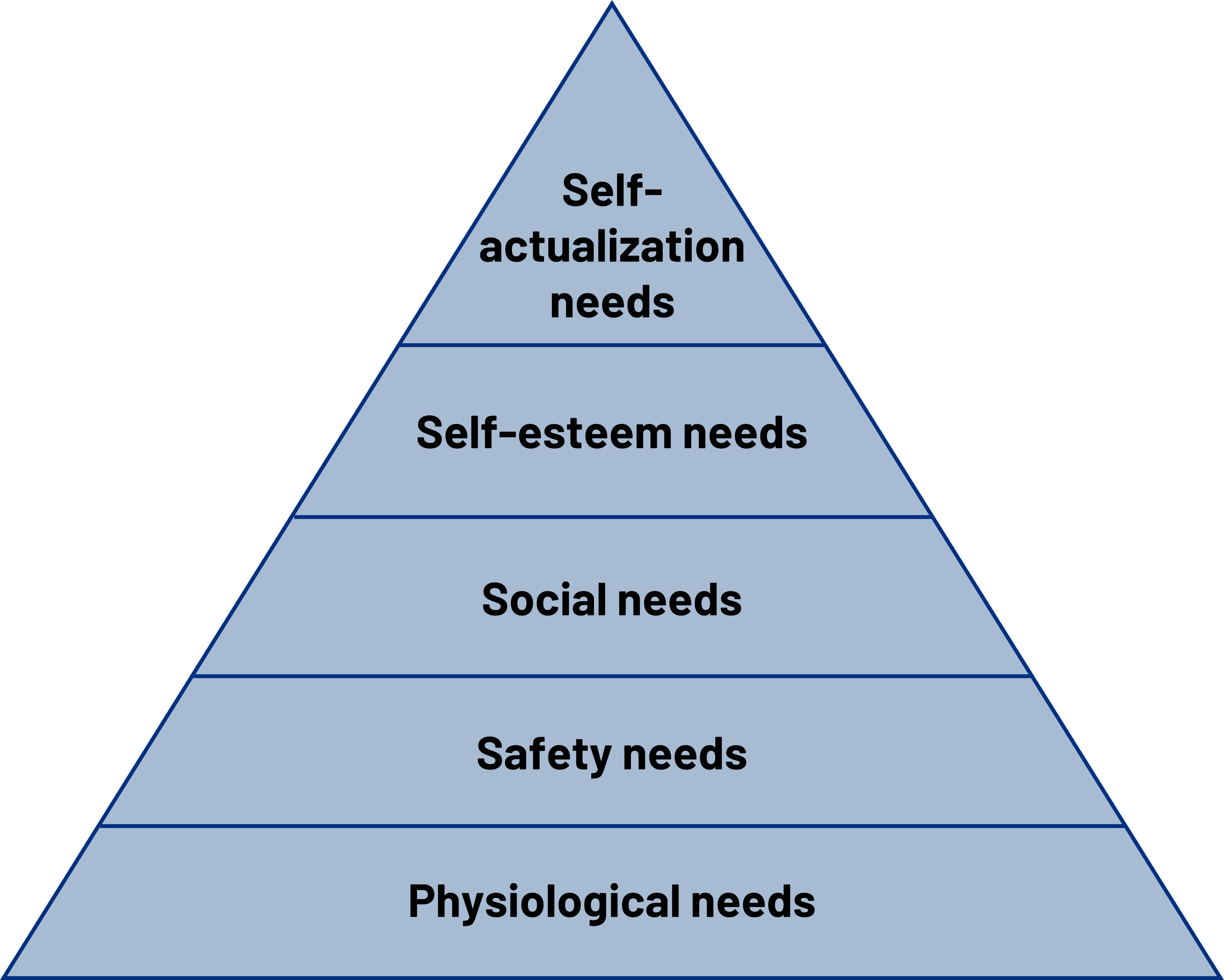
Physiological needs form the base of the hierarchy of needs. The closer the needs are to the base, the more important they are for human survival. Speakers do not appeal to physiological needs. After all, a person who does not have food, air, or water is not very likely to want to engage in persuasion, and it would not be ethical to deny or promise these things to someone for persuasive gain. Some speakers attempt to appeal to self-actualization needs, but I argue that this is difficult to do ethically. Self-actualization refers to our need to achieve our highest potential, and these needs are much more intrapersonal than the others are. We achieve our highest potential through things that are individual to us, and these are often things that we protect from outsiders. Some examples include pursuing higher education and intellectual fulfillment, pursuing art or music, or pursuing religious or spiritual fulfillment. These are often things we do by ourselves and for ourselves, so I like to think of this as sacred ground that should be left alone. Speakers are more likely to be successful at focusing on safety, social, and self-esteem needs.
We satisfy our safety needs when we work to preserve our safety and the safety of our loved ones. Speakers can combine appeals to safety with positive motivation by presenting information that will result in increased safety and security. Combining safety needs and negative motivation, a speaker may convey that audience members’ safety and security will be put at risk if the speaker’s message is not followed. Combining negative motivation and safety needs depends on using some degree of fear as a motivator. Think of how the insurance industry relies on appeals to safety needs for their business. While this is not necessarily a bad strategy, it can be done more or less ethically.
11.7 Sample Persuasive Speech
Attention getter: “We must accept the reality that to confine offenders behind walls without trying to change them is an expensive folly with short-term benefits—winning battles while losing the war.” Supreme Court Justice Warren Burger spoke these words more than thirty years ago, and they support my argument today that prisoners should have access to education.
Introduction of topic: While we value education as an important part of our society, we do not value it equally for all. Many people do not believe that prisoners should have access to an education, but I believe they do.
Credibility and relevance: While researching this topic, my eyes were opened up to how much an education can truly affect a prisoner, and given my desire to be a teacher, I am invested in preserving the right to learn for everyone, even if they are behind bars. While I know from our audience analysis activity that some of you do not agree with me, you never know when this issue may hit close to home. Someday, someone you love might make a mistake in their life and end up in prison, and while they are there, I know you all would want them to receive an education so that when they get out, they will be better prepared to contribute to society.
Transition: First, I will explain why prisoners need access to education.
1. According to a 2012 article in the journal Corrections Today on correctional education programs, most states have experienced an increase in incarceration rates and budgetary constraints over the past ten years, which has led many to examine best practices for reducing prison populations.
a. In that same article, criminologist and former research director of the Federal Bureau of Prisons states that providing correctional education is one of the most productive and important reentry services that our prisons offer.
b. His claim is supported by data collected directly from prisoners, 94 percent of whom identify education as a personal reentry need—ranking it above other needs such as financial assistance, housing, or employment.
c. Despite the fact that this need is clearly documented, funding for adult and vocational education in correctional education has decreased.
1. Many prisoners have levels of educational attainment that are far below those in the general population.
2. According to statistics from 2010, as cited in the Corrections Today article, approximately 40 percent of state prison inmates did not complete high school, as compared to 19 percent of the general population.
3. Additionally, while about 48 percent of the public have taken college classes, only about 11 percent of state prisoners have.
d. At the skill level, research from the United Kingdom, cited in the 2003 article from Studies in the Education of Adults titled “Learning behind Bars: Time to Liberate Prison Education,” rates of illiteracy are much higher among the prison population than the general population, and there is a link between poor reading skills and social exclusion that may lead people to antisocial behavior.
1. Prisoner education is also needed to break a cycle of negativity and stigma to which many prisoners have grown accustomed.
2. The article from Studies in the Education of Adults that I just cited states that prisoners are often treated as objects or subjected to objectifying labels like “ addict , sexual offender , and deviant .”
3. While these labels may be accurate in many cases, they do not do much to move the prisoner toward rehabilitation.
4. The label student , however, has the potential to do so because it has positive associations and can empower the prisoner to make better choices to enhance his or her confidence and self-worth.
Transition: Now that I have established the need for prisoner education, let’s examine how we can meet that need.
2. In order to meet the need for prisoner education that I have just explained, it is important to have a curriculum that is varied and tailored to various prisoner populations and needs.
a. The article from Corrections Today notes that education is offered to varying degrees in most US prisons, but its presence is often debated and comes under increased scrutiny during times of budgetary stress.
b. Some states have implemented programs that require inmates to attend school for a certain amount of time if they do not meet minimum standards for skills such as reading or math.
c. While these are useful programs, prisoner education should not be limited to or focused on those with the least amount of skills.
d. The article notes that even prisoners who have attended or even graduated from college may benefit from education, as they can pursue specialized courses or certifications.
e. Based on my research, I would propose that the prison curriculum have four tiers: one that addresses basic skills that prisoners may lack, one that prepares prisoners for a GED, one that prepares prisoners for college-level work, and one that focuses on life and social skills.
1. The first tier of the education program should focus on remediation and basic skills, which is the most common form of prisoner education as noted by Foley and Gao in their 2004 article from the Journal of Correctional Education that studied educational practices at several institutions.
a. These courses will teach prisoners basic reading, writing, and math skills that may be lacking.
b. Since there is a stigma associated with a lack of these basic skills, early instruction should be one-one-one or in small groups.
2. The second tier should prepare prisoners who have not completed the equivalent of high school to progress on to a curriculum modeled after that of most high schools, which will prepare them for a GED.
3. The third tier should include a curriculum based on the general education learning goals found at most colleges and universities and/or vocational training.
a. Basic general education goals include speaking, writing, listening, reading, and math.
b. Once these general education requirements have been met, prisoners should be able to pursue specialized vocational training or upper-level college courses in a major of study, which may need to be taken online through distance learning, since instructors may not be available to come to the actual prisons to teach.
4. The fourth tier includes training in social and life skills that most people learn through family and peer connections, which many prisoners may not have had.
a. Some population-specific areas of study that would not be covered in a typical classroom include drug treatment and anger management.
b. Life skills such as budgeting, money management, and healthy living can increase confidence.
c. Classes that focus on social skills, parenting, or relational communication can also improve communication skills and relational satisfaction; for example, workshops teaching parenting skills have been piloted to give fathers the skills needed to communicate effectively with their children, which can increase feelings of self-worth.
f. According to a 2007 article by Behan in the Journal of Correctional Education , prisons should also have extracurricular programs that enhance the educational experience.
1. Under the supervision of faculty and/or staff, prisoners could be given the task of organizing an outside speaker to come to the prison or put together a workshop.
2. Students could also organize a debate against students on the outside, which could allow the prisoners to interact (face-to-face or virtually) with other students and allow them to be recognized for their academic abilities.
3. Even within the prison, debates, trivia contests, paper contests, or speech contests could be organized between prisoners or between prisoners and prison staff as a means of healthy competition.
4. Finally, prisoners who are successful students should be recognized and put into peer-mentoring roles, because, as Behan states in the article, “a prisoner who…has had an inspirational learning experience acts as a more positive advocate for the school than any [other method].”
3. Educating prisoners can benefit inmates, those who work in prisons, and society.
a. The article I just cited from the Journal of Correctional Education states that the self-reflection and critical thinking that are fostered in an educational setting can help prisoners reflect on how their actions affected them, their victims, and/or their communities, which may increase self-awareness and help them better reconnect with a civil society and reestablish stronger community bonds.
1. The Corrections Today article I cited earlier notes that a federally funded three-state survey provided the strongest evidence to date that prisoner education reduces the recidivism rate and increases public safety.
2. The Corrections Today article also notes that prisoners who completed a GED reoffended at a rate 20 percent lower than the general prison population, and those that completed a college degree reoffended at a rate 44 percent lower than the general prison population.
b. So why does prisoner education help reduce recidivism rates?
1. Simply put, according to the article in the Studies in the Education of Adults I cited earlier, the skills gained through good prison education programs make released prisoners more desirable employees, which increases their wages and helps remove them from a negative cycles of stigma and poverty that led many of them to crime in the first place.
2. Further, the ability to maintain consistent employment has been shown to reduce the rate of reoffending.
3. Education does not just improve the lives of the prisoners; it also positively affects the people who work in prisons.
c. An entry on eHow.com by Kinney about the benefits of prisoners getting GEDs notes that a successful educational program in a prison can create a more humane environment that will positively affect the officers and staff as well.
1. Such programs also allow prisoners to do more productive things with their time, which lessens violent and destructive behavior and makes prison workers’ jobs safer.
2. Prisoner education can also save cash-strapped states money.
3. Giving prisoners time-off-sentence credits for educational attainment can help reduce the prison population, as eligible inmates are released earlier because of their educational successes.
4. As noted by the Corrections Today article, during the 2008–9 school year the credits earned by prisoners in the Indiana system led to more than $68 million dollars in avoided costs.
Transition to conclusion and summary of importance: In closing, it is easy to see how beneficial a good education can be to a prisoner. Education may be something the average teenager or adult takes for granted, but for a prisoner it could be the start of a new life.
Review of main points: There is a clear need for prisoner education that can be met with a sound curriculum that will benefit prisoners, those who work in prisons, and society.
Figure 11.1: Types of propositions with examples. Kindred Grey. 2022. CC BY 4.0 .
Figure 11.2: Inductive reasoning. Kindred Grey. 2022. CC BY 4.0 . Includes Lightbulb by Maxim Kulikov from NounProject , Magnifying Glass by Pedro Santos from NounProject , and Brain by Bernar Novalyi from NounProject (all Noun Project license ).
Figure 11.3: Deductive reasoning. Kindred Grey. 2022. CC BY 4.0 . Includes Lightbulb by Maxim Kulikov from NounProject , Magnifying Glass by Pedro Santos from NounProject , and Paper by AdbA Icons ❤️ from NounProject (all Noun Project license ).
Figure 11.4: Aristotle’s modes of persuassion. Kindred Grey. 2022. CC BY 4.0 .
Figure 11.5: Maslow’s hierarchy of needs. Kindred Grey. 2022. CC BY 4.0 .
Section 11. 1-11.4
Barton, K., & Tucker, B. G. (2021, February 20). Constructing a persuasive speech . https://socialsci.libretexts.org/Bookshelves/Communication/Public_Speaking/Exploring_Public_Speaking_(Barton_and_Tucker)/13%3A_Persuasive_Speaking/13.05%3A_Constructing_a_Persuasive_Speech
Hamm, P. H. (2006). Teaching and persuasive communication: Class presentation skills . Harriet W. Sheridan Center for Teaching and Learning at Brown University.
Macasieb, D. (2018, June 13). Speech patterns: The proposition-to-proof versus the problem-solution method . https://drumac.com/2018/06/13/speech-patterns-the-proposition-to-proof-versus-the-problem-solution-method/
McCroskey, J. C. (1966). Toward an understanding of the importance of ‘evidence’ in persuasive communication. The Pennsylvania Speech Annual , 23 , 65–71.
McCroskey, J. C. (1969). A summary of experimental research on the effects of evidence in persuasive communication. Quarterly Journal of Speech , 55 (2), 169-176. https://doi.org/10.1080/00335636909382942
Nordquist, R. (2020, December 3). What does it mean to make a claim during an argument? https://www.thoughtco.com/what-is-claim-argument-1689845
Poggi, I. (2005). The goals of persuasion. Pragmatics and Cognition , 13 (2), 297-335. https://doi.org/10.1075/pc.13.2.04pog
Watt, S. S., & Barnett, J. T. (2021, January 4). Organizing persuasive messages . https://socialsci.libretexts.org/Bookshelves/Communication/Public_Speaking/Public_Speaking_(The_Public_Speaking_Project)/16%3A_Persuasive_Speaking/16.09%3A_Organizing_Persuasive_Messages
Williams, E. (2018, October 19). Effective persuasive communication . https://smallbusiness.chron.com/effective-persuasive-communication-56248.html
Section 11.5
ReferencesCooper, M. D., & Nothstine, W. L. (1996). Power persuasion: Moving an ancient art into the media age. Educational Video Group.
Walter, O. M., Speaking to inform and persuade . Macmillan.
Section 11.6
Cooper, M. D., & Nothstine, W. L. (1996). Power persuasion: Moving an ancient art into the media age . Educational Video Group.
Fletcher, L. (2001). How to design and deliver speeches (7th ed.). Longman.
Maslow, A. H. (1943). A theory of human motivation. Psychological Review, 50 (4), 370–396. https://doi.org/10.1037/h0054346
Stiff, J. B., & Mongeau, P. A. (2003). Persuasive communication (2nd ed.). Guilford Press.
Bayliss, P. (2003). Learning behind bars: Time to liberate prison education. Studies in the Education of Adults, 35 (2), 157–172. https://doi.org/10.1080/02660830.2003.11661480
Behan, C. (2007). Context, creativity and critical reflection: Education in correctional institutions. Journal of Correctional Education, 58 (2), 157–169. https://www.jstor.org/stable/23282734
Foley, R. M., & Gao, J. (2004). Correctional education: Characteristics of academic programs serving incarcerated adults. Journal of Correctional Education, 55 (1), 6–21. https://www.jstor.org/stable/23292120
Kinney, A. (2011). What are the benefits of inmates getting GEDs? Ehow.com . Retrieved from https://ehow.com/list_6018033_benefits-inmates-getting-geds_.html
The statement that will be supported by evidence
Also called grounds, it supports the claim
The underlying justification that connects the claim and the evidence
A five step organizational pattern to help persuade an audience. 1. Attention Step: Grab the audience’s attention in the introduction. 2. Need Step: Establish the reason that your topic needs to be addressed. Satisfaction Step: Present a solution to the problem that you are addressing. 4. Visualization Step: Incorporate a positive/negative motivation to support the relationship you have set up between the need and your proposal. 5. Action Step: Include a call to action that tells people what they can do about the situation.
Reaches conclusions through citation of examples and is the most frequently used form of logical reasoning
Derives specifics from what is already known
Argues to establish a relationship between a cause and effect
Refers to the credibility of the speaker and includes dimensions: competence, trustworthiness, and dynamism
Refers to the perception of a speaker’s expertise in relation to the topic being discussed
The second component of ethos and is the degree that audience members perceive a speaker to be presenting accurate, credible information in a non-manipulative way
Refers to the degree to which audience members perceive a speaker to be outgoing and animated
The reasoning or logic of an argument
The emotional appeal
Refers to the mental discomfort that results when new information clashes with or contradicts currently held beliefs, attitudes, or values
Communication in the Real World Copyright © by Faculty members in the School of Communication Studies, James Madison University is licensed under a Creative Commons Attribution-ShareAlike 4.0 International License , except where otherwise noted.
Motivation and Persuasion
- First Online: 05 December 2020
Cite this chapter

- Milton Mayfield 4 ,
- Jacqueline Mayfield 4 &
- Robyn Walker 5
Part of the book series: New Perspectives in Organizational Communication ((NPOC))
Motivation and persuasion are at the heart of most organizational communication. In fact, many business communication theories are linked to rhetoric, a key theory in this category. Simply stated, motivational and persuasive messages guide how we get things done in organizations. Just as important, these same messages impact the well-being of organizational stakeholders—employees, and customers included of course. Yet there are different paths to modeling these processes within business communication theory, and this chapter captures some major approaches. We also touch upon some compelling issues for scholars and managers here. Have we fully considered and taken action about relevant ethical implications? And, have we effectively partnered theories in this category with pertinent ones from cultural characteristics and organizational structures to better explore organizational communication behaviors and their meaningful outcomes?
- Business communication
- Descriptions
This is a preview of subscription content, log in via an institution to check access.
Access this chapter
- Available as PDF
- Read on any device
- Instant download
- Own it forever
- Available as EPUB and PDF
- Compact, lightweight edition
- Dispatched in 3 to 5 business days
- Free shipping worldwide - see info
- Durable hardcover edition
Tax calculation will be finalised at checkout
Purchases are for personal use only
Institutional subscriptions
Adame, E. A., & Bisel, R. S. (2019). Can perceptions of an individual’s organizational citizenship be influenced via strategic impression management messaging? International Journal of Business Communication, 56 (1), 5–29. https://doi.org/10.1177/2329488415627355 .
Article Google Scholar
Alvesson, M. (2013). Communication, power and organization (Vol. 72). Walter de Gruyter.
Google Scholar
Anderson, R. D. (1999). Ancient rhetorical theory and Paul (Vol. 18). College Prowler, Inc.
Barrett, F. J., Thomas, G. F., & Hocevar, S. P. (1995). The central role of discourse in large-scale change: A social construction perspective. The Journal of Applied Behavioral Science, 31 (3), 352–372.
Bisel, R. S. (2017). Organizational moral learning: A communication approach . Routledge.
Bisel, R. S., & Adame, E. A. (2019). Encouraging upward ethical dissent in organizations: The role of deference to embodied expertise. Management Communication Quarterly, 33 (2), 139–159.
Bisel, R. S., Messersmith, A. S., & Kelley, K. M. (2012). Supervisor-subordinate communication: Hierarchical mum effect meets organizational learning. The Journal of Business Communication, 49 (2), 128–147. https://doi.org/10.1177/0021943612436972 .
Black, E. (1978). Rhetorical criticism: A study in method . University of Wisconsin Press.
Black, E. (1988). Secrecy and disclosure as rhetorical forms. Quarterly Journal of Speech, 74 (2), 133–150.
Bromley, D. B. (1993). Reputation, image and impression management. Wiley.
Carroll, A. B., Adler, N. J., Mintzberg, H., Cooren, F., Suddaby, R., Freeman, R. E., & Laasch, O. (2020). What “are” responsible management? A conceptual potluck. In The research handbook of responsible management (pp. 56–72). Edward Elgar Publishing.
Cialdini, R. B., Petty, R. E., & Cacioppo, J. T. (1981). Attitude and attitude change. Annual Review of Psychology, 32 (1), 357–404. https://doi.org/10.1146/annurev.ps.32.020181.002041 .
Conger, J. A. (1998). The necessary art of persuasion. Harvard Business Review, 76 (3), 84–97.
Cyphert, D. (2010). The rhetorical analysis of business speech: Unresolved questions. The Journal of Business Communication (1973), 47 (3), 346–368. https://doi.org/10.1177/0021943610370577 .
Dulek, R. E., & Campbell, K. S. (2015). On the dark side of strategic communication. International Journal of Business Communication, 52 (1), 122–142.
Floyd-Lapp, C. (2014). Aristotle’s rhetoric: The power of words and the continued relevance of persuasion. Young Historians Conference , Portland State University.
Ghanem, S. (1997). Filling in the tapestry: The second level of agenda setting. In Communication and democracy: Exploring the intellectual frontiers in agenda-setting theory , pp. 3–14.
Hanke, D. (2020). Can employees motivate themselves? The link between peer motivating language and employee outcomes (Unpublished Dissertation). Texas A&M International University.
Kent, M. L., & Taylor, M. (2002). Toward a dialogic theory of public relations. Public Relations Review, 28 (1), 21–37. https://doi.org/10.1016/S0363-8111(02)00108-X .
Ma, Q. K., Mayfield, M., & Mayfield, J. (2018). Keep them on-board! How organizations can develop employee embeddedness to increase employee retention. Development and Learning in Organizations: An International Journal, 32 (4), 5–9. https://doi.org/10.1108/DLO-11-2017-0094 .
Marlow, S. L., Lacerenza, C. N., & Salas, E. (2017). Communication in virtual teams: A conceptual framework and research agenda. Human Resource Management Review, 27 (4), 575–589.
Mayfield, J. (1993). The role of motivating language in leader-member exchange (Unpublished Dissertation). University of Alabama.
Mayfield, J., & Mayfield, M. (1995). Learning the language of leadership: A proposed agenda for leader training. Journal of Leadership and Organizational Studies, 2 (1), 132–136. https://doi.org/10.1177/107179199500200111 .
Mayfield, J., & Mayfield, M. (2014). Step by step to better performance: Organizational-citizenship behavior can transform employees and the workplace. Human Resource Management International Digest, 22 (4), 36–39. https://doi.org/10.1108/HRMID-07-2014-0087 .
Mayfield, J., & Mayfield, M. (2018). Motivating language theory: Effective leader talk in the workplace . Springer.
Mayfield, J., & Mayfield, M. (2019a). The diffusion process of strategic motivating language: An examination of the internal organizational environment and emergent properties. International Journal of Business Communication , 56 (3), 366–391. https://doi.org/10.1177/2329488416629093 .
Mayfield, J., & Mayfield, M. (2019b). A commentary on “the call center agent’s performance paradox: A mixed-methods study of discourse strategies and paradox resolution.” Academy of Management Discoveries, 5 (2), 205–206. https://doi.org/10.5465/amd.2018.0096 .
Mayfield, J., Mayfield, M., & Neck, C. P. (in press). Speaking to the self: How motivating language links with self-leadership. International Journal of Business Communication . https://doi.org/10.1177/2329488417731861 .
Mayfield, M., & Mayfield, J. (2012). Effective performance feedback for learning in organizations and organizational learning. Development and Learning in Organizations, 26 (1), 15–18. https://doi.org/10.1108/14777281211189128 .
Mayfield, M., & Mayfield, J. (2017a). Leader talk and the creative spark: A research note on how leader motivating language use influences follower creative environment perceptions. International Journal of Business Communication, 54 (2), 210–225. https://doi.org/10.1177/2329488416687057 .
Mayfield, M., & Mayfield, J. (2017b). “What’s past is prologue”: A look at past leadership communication research with a view toward the future. International Journal of Business Communication, 54 (2), 107–114. https://doi.org/10.1177/2329488416687050 .
Seeger, M. W., & Ulmer, R. R. (2003). Explaining Enron: Communication and responsible leadership. Management Communication Quarterly, 17 (1), 58–84.
Sharbrough, W. C., Simmons, S. A., & Cantrill, D. A. (2006). Motivating language in industry: Its impact on job satisfaction and perceived supervisor effectiveness. Journal of Business Communication, 43 (4), 322–343. https://doi.org/10.1177/0021943606291712 .
Thorpe, A. S., & Roper, S. (2019). The ethics of gamification in a marketing context. Journal of Business Ethics, 155 (2), 597–609.
Wu, H. D., & Coleman, R. (2009). Advancing agenda-setting theory: The comparative strength and new contingent conditions of the two levels of agenda-setting effects. Journalism & Mass Communication Quarterly, 86 (4), 775–789.
Download references
Author information
Authors and affiliations.
Texas A&M International University, Laredo, TX, USA
Milton Mayfield & Jacqueline Mayfield
Marshall School of Business, University of Southern California, Los Angeles, CA, USA
Robyn Walker
You can also search for this author in PubMed Google Scholar
Corresponding author
Correspondence to Jacqueline Mayfield .
Reprints and permissions
Copyright information
© 2020 The Author(s)
About this chapter
Mayfield, M., Mayfield, J., Walker, R. (2020). Motivation and Persuasion. In: Fundamental Theories of Business Communication. New Perspectives in Organizational Communication. Palgrave Macmillan, Cham. https://doi.org/10.1007/978-3-030-57741-4_9
Download citation
DOI : https://doi.org/10.1007/978-3-030-57741-4_9
Published : 05 December 2020
Publisher Name : Palgrave Macmillan, Cham
Print ISBN : 978-3-030-57740-7
Online ISBN : 978-3-030-57741-4
eBook Packages : Business and Management Business and Management (R0)
Share this chapter
Anyone you share the following link with will be able to read this content:
Sorry, a shareable link is not currently available for this article.
Provided by the Springer Nature SharedIt content-sharing initiative
- Publish with us
Policies and ethics
- Find a journal
- Track your research

Persuasive communication and its ethics
Degree name, journal title, journal issn, volume title.
Public relations has developed as a profession in order to manage communication between different groups of people. This communication process is a persuasive process; which has the ability to influence public opinion. Creating public opinion is often the role of public relations practitioners, as practitioners influence public discourse through the communication processes they manage.
This power to manage public opinion creates ethical dilemmas. Many commentators contend that public relations is a pervasive and negative influence, and demand more accountable and socially responsible behaviour. Despite most public relations industry associations having codes of ethics or conduct, this has not solved the issue of ethics, and many practitioners continue to debate how more ethical behaviour can be achieved.
However, this thesis proposes that it is possible to influence public opinion in a way that is effective, ethical and persuasive; and that this managed communication helps to create balanced public discourse, meeting the needs of stakeholders as well as serving the public interest.
The research examines how managed communication influences public discourse, and the ethical responsibility that this creates. Theories in the areas of public relations, communication and persuasion are explored. Key themes are drawn from each of these areas, and a framework for evaluating persuasive communication is developed. The resulting model challenges traditional two-way communication approaches and offers an alternative multi-sided approach to communication, which seeks to redress the imbalance in public discourse, and suggests a different role for the public relations practitioner.
Multi-sided communication demands that the public relations practitioner accepts responsibility for creating opportunities for different points of view to be expressed in the public domain. This is concluded as one of the key determinants of ethical behaviour, and therefore an important principle of the proposed model.
A model is presented that reflects multi-sided communication and balances the imperatives of communication, persuasion and ethics (CPE model). This model provides an evaluative tool for qualitatively assessing proposed or completed communication campaigns.
This thesis argues that if practitioners were to apply this model, the public would feel that public relations provided a better service to them, and not just to the clients or organisations the practitioner represents. This in turn would help to improve the integrity of the practice of public relations.
It is accepted that the model is not a panacea for the issues the public relations industry faces. Two significant challenges still remain. Firstly, traditional constraints such as time, money and resources will continue to inhibit effective, ethical communication. Secondly, and perhaps more importantly, it is unlikely that a client or organisation will fund or support competing ideas and views.
Description
Publisher's version, rights statement, permanent link, collections.
Introductory Guide to Persuasion in Communication Studies

Persuasion rests at the heart of communication. Some scholars contend that to communicate is to persuade – that all communication is, in some form, persuasion. Indeed, persuasion is central to some of humankind’s most essential functions, comprising the core of politics, religion, and health; and is simultaneously omnipresent in everyday life, like in marketing, dating, and even parenting (Floyd, 2017). “Persuasion,” Richard Perloff (2016) wrote, “at once intrigues and repels us.”
Defining Persuasion
More than a millennium ago, Aristotle remarked that he saw rhetoric as a way to discover “the available means of persuasion.” However, Aristotle never exactly defined persuasion – which leaves us to ask, “What is persuasion?” In the broadest sense, persuasion is the communicative process through which a message prompts a change in an individual or group’s beliefs, attitudes, or behaviors.
Synthesizing the various definitions of persuasion offered by communication scholars, Perloff (2016) said that persuasion is a “symbolic process in which communicators try to convince other people to change their own attitudes or behaviors regarding an issue through the transmission of a message in an atmosphere of free choice.”
From this definition, Perloff (2016) then highlighted five components of persuasion that Communication scholars ought to bear in mind when examining persuasion through a communicative lens. Accordingly, persuasion is a symbolic process: it involves both the transmission of a message and an attempt to influence, it helps people persuade themselves, and it requires free choice.
The History of Persuasion in Communication Studies
Many scholars of persuasion within Communication Studies trace the history of the discipline back to the ancient Greeks. Indeed, the heated debate between Plato and the Sophists regarding the virtue and place of persuasion in society is very much alive today. Plato abhorred what many consider to be the dark, unsavory part of persuasion – the grossly exaggerated statements that blur the ethical line and are often found in marketing and politics. The Sophists, on the other hand, embraced this side of persuasion, arguing its practical foundations and pervasive presence in everyday life.
Coming a generation after Plato and the Sophists, Aristotle argued for a “both/and” approach to persuasion – he saw merit in both schools of thought and, as mentioned above, envisioned rhetoric as a tool in understanding the power of persuasion. Indeed, Aristotle’s delineation of artistic proofs (ethos, logos, and pathos) governed much of the study of persuasion for a millennium after him and these proofs are still utilized today. Aristotle’s impact on persuasion, and really Communication Studies as a whole, is profound. Our section on Rhetorical Studies provides a more thorough elucidation of rhetoric’s rich history and its influence within persuasion and Communication studies.
A more contemporary tracing of persuasion’s history begins with the research on propaganda, behavior, and attitudes following the First World War, and the institutionalization of this research after the Second World War. When the world fully realized the horrors of the Holocaust in the waning days of World War II, the United States government began funding research aimed at examining how Hitler and the Nazis could steer a people to commit mass genocide. Somewhat simultaneously, the United States government sought to harness the power of propaganda more effectively at the start of the Second World War and funded research-backed projects like Frank Capra’s Why We Fight film.
According to Perloff (2016) many of the scholars that contributed research in developing Why We Fight helped usher in the modern study of Communication and Psychology. In particular, Carl Hovland is directly attributed to the modern application of social scientific techniques in an interdisciplinary setting. He and his colleague’s research and methodological procedures paved the way for the research that is considered today to be foundational.
Foundational Theories in Persuasion Studies
Indeed, with Hovland’s pioneering social scientific experimentation and, really, the replicability of his procedures and their ability to be critically peer-reviewed, several breakthroughs in the study of persuasion occurred. Several decades later, many of these breakthroughs remain foundational in the modern study of persuasion from a communicative perspective.
Like with many theories and concepts in Communication Studies, there is inter and intradisciplinary overlap with these foundational theories from persuasion studies. In other words, a theory or concept that may have been born from the study of persuasion is sometimes reapplied by several other disciplines within, and outside of, Communication Studies, due to the concept’s inherent or unique explanatory powers. For example, our discussion of Health Communication featured several theories borrowed from persuasion studies, like Inoculation Theory. The following are theories considered to be foundational and would certainly be featured in a graduate seminar on persuasion:
Cognitive Dissonance Theory : Generally speaking, human beings prefer to “maximize the internal psychological consistency of their cognitions” (O’Keefe, 2015). In other words, we like our thoughts and attitudes to make sense, and we actively try to avoid the discomfort associated with cognitive inconsistency. Cognitive Dissonance Theory, then, helps to explain this phenomenon.
Dissonance occurs when one thought contradicts, or challenges, the other. According to the theory’s originator, Leon Festinger (1957), one of the more salient examples of dissonance is of a smoker. Someone who smokes may acknowledge that smoking causes cancer but chooses to continue smoking anyway. The thought and acknowledgement that smoking causes cancer contradicts or challenges the thought and action of smoking, thus creating dissonance.
According to proponents of Cognitive Dissonance Theory, people “will want to avoid experiencing dissonance,” and when they do ultimately come across contradictory thoughts, “they will attempt to reduce it” (O’Keefe, 2015). Indeed, persuasive communication researchers continue to probe the role dissonance creates in the communication process, helping to understand its impact in areas such as conflict resolution, political communication, and decision making.
Theory of Reasoned Action : The Theory of Reasoned Action is primarily concerned with behavior and the intention to enact that behavior. Specifically, this theory suggests that someone is more likely to engage a behavior if they already of the intention to do so.
Indeed, research conducted by communication researchers help persuaders within realms as varied as politics, health, religion, and interpersonal communication hone messages that aim to influence someone’s intent. There is ample empirical evidence supporting the Theory of Reasoned Action and is considered by many to be “unquestionably the most influential general framework for understanding the determinants of voluntary action.” (O’Keefe, 2015).
Social Judgement Theory : Although Social Judgement Theory is something of a thing of the past (it is not as thoroughly utilized in research today as it was previously), it can certainly be viewed as a “framework that offers some concepts and principles of continuing utility” and instruction (O’Keefe, 2015). Indeed, while many consider the theory to be “incomplete,” Social Judgment Theory does highlight certain features of the persuasive process that are sometimes overlooked.
Social Judgement Theory suggests “messages produce attitude change through judgmental processes and effects,” or the “way in which the receiver (of a persuasive message) evaluates the position it advocates” (O’Keefe, 2015). More simply, this theory indicates that individuals judge a persuasive message based upon their current perspective – that several people could be given a message in the same exact way, but ultimately several different conclusions will be drawn as everyone’s experiences differ.
Elaboration Likelihood Model : This model is “based on the idea that under different conditions, receivers will vary in the degree to which they are likely to engage in elaboration of information relevant to the persuasive issue” (O’Keefe, 2015). Put differently, persuasion is dependent upon context and the willingness of the individual being persuaded.
The Elaboration Likelihood Model argues that there are two routes to persuasion: the central route and the peripheral route. The central route involves parties or individuals open to being persuaded “focus(ing) on the arguments” presented to them and ultimately “respond(ing) with favorable thoughts” (Floyd, 2017). On the other hand, the peripheral route to persuasion “occurs when people are influenced by incidental cues, such as a speaker’s attractiveness” or the music and images of a television commercial (Floyd, 2017).
Inoculation Theory : Like vaccines, Inoculation Theory suggests that those exposed to small attacks on something they believe will ultimately be able to “resist a more powerful attack later” (Floyd, 2017). By and large, research continues to support the underlying premise of Inoculation Theory and the implications of this theory are indeed profound. Persuasion communication researchers examined the use of attitude inoculation in marketing, political, religious, and even cult contexts, suggesting a wide a varied use of associated techniques.
On the one hand, Inoculation Theory helps in developing critical thinking skills in children, aiding them in seeing through deceptive commercials and resisting pressures to smoke. On the other hand, religious fundamentalists and cults utilize attitude inoculation in the indoctrination process by “forewarning members of how families and friends will attack the cult’s beliefs” and providing them counterarguments to employ (Floyd, 2017).
Narrative Paradigm : Walter Fisher (1984, 1987, 1989) proffered the narrative paradigm as a means of viewing human communication through a storytelling lens. Human beings across cultures, time, and space, Fisher argued, utilize the inherent power in narratives to communicate and to help understand the complexities of existence. Although the narrative paradigm is different from the other persuasive communication theories elucidated here, especially given its rhetorical, and not strictly social scientific, leanings, Fisher’s paradigm continues to be employed by persuasion scholars of all backgrounds.
For example, Michael Burns (2015) used the paradigm in his qualitative study analyzing the “use of narratives as persuasive recruitment tools for universities.” Burns (2015) found that for students in transition from high school to college and in the process of deciding on a university to attend, personal stories from current students “resonated and built a connection with (prospective) students.”
Burns’ (2015) study is noteworthy for several reasons. First, his mixed methods approach demonstrates the versatility of the narrative paradigm in persuasion communication research. Second, his findings display the paradigm’s applicability to more modern, real word situations, certainly familiar to students reading this website. And finally, Burns’ (2015) research extends the staying and explanatory power of the narrative paradigm, providing further validation to the concept.
Persuasion in Communication Studies Today
Without question, the study of persuasion is essential to understanding human communication and contemporary research continues to yield insights and concepts that further this understanding. Indeed, a student could turn to any issue in journals as varied as Communication Quarterly , Applied Communication Research , and the Southern Communication Journal and almost certainly find the latest in persuasive communication research.
Reflecting this, persuasive communication is the backbone to a majority of interest groups within the National Communication Association (NCA) , as well as the regional associations, with divisions like the Applied Communication Division, the Health Communication Division, the Rhetorical and Communication Theory Division, the Mass Communication Division, and the Religious Communication Division typically sponsoring panels and roundtables at the annual NCA convention.
Since its ascendency within persuasive communication research some five decades ago, the empirical approach to persuasion has dominated the scholarly landscape. While this social scientific approach contributed to the proliferation, predictability, and general acceptance of persuasive communication theories and practices, there is growing evidence that we are currently in the midst of a rhetorical revival.
Recently, for example, communication scholars started utilizing a rhetorical lens in bringing to the fore the ways in which violent white supremacists and other American terrorist organizations operate, highlighting the persuasive appeals embedded in the communication practices found on internet forums, through some media personalities, and via political tweets and speeches given at political rallies.
As the aforementioned theories, paradigms, and models illustrate, students looking to study persuasive communication at the master’s level have a broad, deep, and diverse pool of knowledge from which to draw. In addition to being fascinating from a purely scholarly perspective, the study of persuasive communication has applications that touch almost every aspect of human life. In many ways, persuasion is synonymous with communication, and as such masters in communication specializations ranging from rhetorical theory and communication studies to interpersonal, political, health, and consumer-oriented communication all include persuasive communication as a foundational part of their curriculum.
Through advanced studies in persuasion, students can better understand how people interact with, support, and motivate one another within the complex and dynamic fabric of human society. They can then apply these insights to improving human communication and connectedness at the individual, community, national, and international levels.
Sources and Additional Resources
To learn more about the study of persuasion and research in Communication Studies, check out the following resources:
- Burns, M. E. (2015). Recruiting Prospective Students With Stories: How Personal Stories Influence the Process of Choosing aUniversity. Communication Quarterly , 63(1), 99–118.
- Floyd, K. (2017). Human Communication: A Critical Reader (Third Edition). McGraw Hill Education LLC.
- O’Keefe, D. J. (2015). Persuasion: Theory and Research . SAGE Publications.
- Perloff, R. M. (2016). The Dynamics of Persuasion: Communication and Attitudes in the Twenty-First Century . Routledge.

Jun 19, 2023
Thesis Statement Essay Examples: Master the Art of Persuasion with Strong Statements
Unlock persuasive writing by mastering strong thesis statements. Explore impactful examples that will empower your skills, captivate your audience, and enhance your essays. Step into the realm of influential writing today.
One of the most important aspects of producing great research papers or argumentative essays is knowing what constitutes a solid thesis statement. The thesis statement should be a claim that you intend to defend throughout the paper. You probably have a weak thesis statement if you're having trouble understanding your paper or its topic. If you'd like some extra help, you can try out our AI Thesis Statement Generation features - but it's always good to have a proper understanding of the process before using any AI tools to assist you with the process!
Let's take a step back and figure out what goes into a good thesis statement and what you should keep in mind when you craft your own.
What makes a Good Thesis Statement
A thesis statement often serves as the opening sentence of your essay. Ideally placed within the first few paragraphs, it acts as a bridge to the body of your essay, outlining your argument and paving the way for the evidential support that will follow.
Assert Your Position: The thesis statement is not a space for general assertions or facts. It should clearly specify your position on the subject, leaving room for debate. Rather than stating, "Puppies are cute and everybody knows it," a more persuasive and debatable statement might read, "A puppy's cuteness is attributed to its floppy ears, tiny body, and lively nature." This allows room for a counterargument, igniting a meaningful discussion.
Clarity: Your thesis should be concise and easily understandable, letting readers grasp your point of view with minimal effort. The language and topic should be chosen with consideration of your audience and the essay's objective.
Specificity: Your thesis should indicate the content of your essay or research paper. For instance, instead of a broad statement like "This paper discusses how technology influences relationships," a more precise thesis might be, "This research paper investigates how technology impacts interpersonal connections, the frequency of direct contact, and the average number of significant relationships among individuals aged 18 to 60."
Interest for readers: Your thesis should resonate with your audience, ensuring they care enough about the topic to continue reading.
Positioning: Your thesis should express your viewpoint, leaving room for counterarguments. Rather than stating "most traffic accidents involve drivers under 20," a more pointed thesis might be, "Given that the majority of traffic accidents involve drivers aged 16 to 19, the minimum driving age should be increased to 21."
Outlining: Your thesis should act as a guide for your essay, informing the reader about the topic and its significance. As your essay evolves, you might find that your thesis needs to be revised to accurately reflect the content.
Responding to a Prompt: Your thesis should directly answer the prompt or question your essay is responding to, making the central argument of your research clear.
Tips for Writing a Strong Thesis Statement:
Brainstorm: Start with a broad range of topics that pique your interest and will likely engage your audience. Collaborating with others, such as classmates or teachers, can help generate a diverse array of ideas.
Narrow your Focus: Your writing should aim to prove a specific point about your chosen topic. Your thesis should reflect this precision.
Understand the Task: Consider the essay format, objective, and target audience before crafting your thesis. Different types of essays serve different purposes, and this should be evident in your thesis.
Conduct Research: Use credible, up-to-date sources for your research. Academic databases are usually a reliable starting point.
Support Your Claim: Each claim in your thesis should be backed up by relevant evidence from your research.
Align Your Argument: Writers often draft the body of the essay before finalizing the thesis. Ensure that your thesis accurately reflects the evidence you present. If you find evidence that contradicts your thesis, consider incorporating that into your revisions.
How to Write a Good Thesis Statement
When asked to write a thesis statement, many students struggle for a long time since they are unsure of what should be included. A well-planned essay structure can be the key to a swift completion of that academic paper. So, with the help of our admission essay writing service, let's dissect the fundamentals of crafting a thesis statement.
Brainstorm ideas: Having a wide variety of potential writing themes is usually a good thing. This way, you can zero in on a topic that not only piques your curiosity but also holds the attention of your target audience. Working with others, such as classmates or teachers, can help you come up with a wealth of interesting concepts from which to choose a theme.
Narrow and focus: We must stress that generic details have no place in a professionally written piece. Writing is meant to prove a specific point on a topic. The thesis should accurately represent this.
Understand the essay format, goal, and target audience: Usually, they are assigned by the professor, but if you have some choice in the matter, you should know that they will have a significant impact on your thesis. A persuasive essay is written to persuade the reader to change their mind about a contentious issue. The purpose of a descriptive essay is to explain to the reader. Include at least one of these in your argument.
Conduct research: You need to perform some serious research using up-to-date, credible resources. Use academic databases as your primary source of information wherever possible.
Support your answer with reasoning: Pick out supporting details that speak to your argument. Make sure that you back up every claim you make with a relevant example in your research paper.
Check how it aligns: The majority of the time, writers will compose the essay's body paragraphs before they formulate the paper's thesis. It's not uncommon for writers to begin with one topic in mind and end up with another. As a result, double-check your essay to make sure the thesis stands up to the evidence you've presented. If you find proof refuting your main point, you should incorporate that into your revisions.
How many types of thesis statements are there?
So, now that you know the basics of developing a thesis statement, keep in mind that different authors will use different approaches. To provide a clearer illustration, we developed some sample thesis statements. The most common varieties of thesis statements are as follows:
Argumentative Thesis Statement
A good thesis statement sample for an argumentative paper will take a stand on the topic. Its purpose is to introduce the reader to your argument and set the stage for the rest of the essay. An argumentative thesis must present a proposition that can be debated by intelligent individuals.
Example: Since junk food is detrimental to health, the government should regulate the availability of soft drinks at fast food restaurants.
Analytical Thesis Statement
Looking beyond the obvious is essential for a solid example of an analytical essay. When formulating your analytical thesis statement, keep the following in mind. What is being asserted, what evidence supports it, and what does that imply? To what extent does this matter, and why?
Example: The world's continuous racism problem has repercussions in many areas of society and the economy. Prejudice based on a person's race or ethnicity is a major contributor to this problem.
Expository Thesis Statement
The purpose of an expository essay is to inform the reader about a topic by providing them with background information and supporting evidence. When writing an expository essay, your thesis statement should give a preview of the information the reader may expect to find in the body paragraphs.
Example: Post-traumatic stress disorder (PTSD) raises the risk for cardiovascular problems like stroke and high heart rate.
Compare and Contrast Thesis Statement
Comparison and contrast essays can take many different forms. Some tasks need you to look for major differences or parallels. However, in some cases, you must focus on both.
Example: Despite their apparent incompatibility, authoritarian and permissive parenting styles have one thing in common: they both encourage children to accept responsibility for their actions.
Cause and Effect Thesis Statement
Essays that focus on the causes and consequences of an event or situation are known as "cause and effect" essays. A cause-and-effect thesis statement requires that you explain why something happened.
Example: The insufficiency of social support services is a major contributor to the rise in homelessness, among other factors.
3 Thesis Statement Examples
Here are three examples of persuasive thesis statements to enhance your understanding of impactful writing. These instances illustrate how to craft strong and compelling thesis statements that anchor persuasive essays. Studying these examples will offer valuable insights into the strategies used by proficient writers to engage their readers and effectively present their arguments.
The Importance of Physical Activity for Mental Health
Regular physical activity is essential for maintaining good mental health, as it helps to reduce stress, improve mood, and increase overall well-being. (Thesis Statement)
Explanation of Thesis Statement:
“The essay explains that regular physical activity is crucial for maintaining good mental health. The statement presents three reasons why physical activity is important for mental health: reducing stress, improving mood, and increasing overall well-being. The essay then goes on to explain each of these reasons in detail, supporting the thesis with evidence from scientific studies. The thesis statement summarizes the central argument of the essay, which is that physical activity is a powerful tool for promoting mental health and well-being”
Physical activity has long been associated with physical health benefits, such as reducing the risk of chronic diseases and improving cardiovascular function. However, many people are not aware of the important role that physical activity plays in maintaining good mental health. Regular physical activity is essential for mental health, as it helps to reduce stress, improve mood, and increase overall well-being.
One of the primary benefits of physical activity for mental health is its ability to reduce stress. When we engage in physical activity, our bodies release endorphins, which are hormones that help to reduce feelings of stress and anxiety. Additionally, physical activity can provide a sense of accomplishment and help to boost self-esteem, which can also help to reduce stress levels.
In addition to reducing stress, physical activity has been shown to improve mood. Studies have found that regular exercise can help to reduce symptoms of depression and anxiety, and can even be as effective as medication in some cases. Exercise has also been shown to improve cognitive function and increase energy levels, which can help to improve mood and overall well-being.
Finally, physical activity is important for overall well-being. When we engage in regular exercise, we are more likely to maintain a healthy weight, which can reduce the risk of chronic diseases and improve physical health. Additionally, physical activity can help to improve sleep quality, which is essential for good mental health. By improving physical health and well-being, physical activity can also have a positive impact on mental health.
In conclusion, regular physical activity is essential for maintaining good mental health. By reducing stress, improving mood, and increasing overall well-being, physical activity can help to improve mental health and prevent the development of mental health conditions. Therefore, individuals need to engage in regular physical activity as part of their overall mental health and wellness plan.
The Benefits of Traveling Abroad
Traveling abroad offers numerous benefits, including cultural immersion, personal growth, and new experiences. (Thesis Statement)
“This essay explains the many advantages of traveling abroad, highlighting how it allows individuals to immerse themselves in different cultures, gain new experiences, and develop valuable skills. The thesis statement asserts that traveling abroad is a valuable opportunity for personal growth and enrichment”.
Traveling abroad is an exciting and enriching experience that provides individuals with a unique opportunity to explore new cultures, gain new perspectives, and develop valuable skills. While it can be challenging to step out of one's comfort zone and navigate unfamiliar environments, the benefits of traveling abroad are well worth the effort.
One of the most significant benefits of traveling abroad is cultural immersion. By immersing oneself in a different culture, individuals can gain a deeper appreciation for diversity and broaden their perspectives. Exposure to different ways of life can also challenge one's assumptions and encourage personal growth. By experiencing different cultures firsthand, individuals can develop a more nuanced understanding of the world and become more tolerant and accepting of others.
In addition to cultural immersion, traveling abroad offers the chance to have new experiences. From trying new foods to exploring unfamiliar landscapes, traveling abroad can provide a sense of adventure and excitement. It can also be an opportunity to learn new skills, such as a foreign language or cultural customs. For example, taking a cooking class in Thailand or attending a tango lesson in Argentina can provide a unique and unforgettable experience that enriches one's life in ways that can't be replicated at home.
Furthermore, traveling abroad can have a positive impact on one's personal growth. It can help individuals become more independent, confident, and resilient as they navigate new environments and overcome challenges. Additionally, traveling abroad can provide opportunities for reflection and self-discovery, leading to a better understanding of one's values and goals. For example, traveling alone to a foreign country can be an empowering and transformative experience that allows individuals to push their limits and discover their strengths.
While traveling abroad can be daunting, it is important to remember that the benefits far outweigh the challenges. By stepping out of one's comfort zone and exploring new horizons, individuals can gain a richer, more fulfilling perspective on life. The memories, experiences, and skills gained from traveling abroad can last a lifetime and provide valuable insights and personal growth opportunities that are not available in one's home country.
In conclusion, traveling abroad offers numerous benefits, including cultural immersion, new experiences, and personal growth. By exploring new cultures and pushing one's limits, individuals can gain a deeper appreciation for diversity, develop new skills, and become more independent and confident. While it can be challenging, traveling abroad is a transformative and enriching experience that can provide a lifetime of memories and personal growth opportunities.
The Importance of Effective Communication in the Workplace
Effective communication is critical for success in the workplace, as it promotes collaboration, builds trust, and improves productivity. (Thesis Statement)
“This essay emphasizes the importance of effective communication in the workplace, highlighting how it enables teams to work together towards common goals, fosters collaboration and trust and improves productivity. The thesis statement asserts that effective communication is crucial for success in the workplace, and that clear and concise communication leads to better problem-solving and decision-making.”
Effective communication is essential for success in the workplace, as it enables individuals and teams to work together to achieve common goals. When communication is clear and concise, it promotes collaboration and encourages the sharing of ideas and feedback. This leads to improved problem-solving and decision-making, as well as increased efficiency and productivity.
One of the most significant benefits of effective communication is collaboration. When individuals communicate openly and honestly, it fosters a culture of transparency and accountability. This, in turn, helps to build trust and strengthen relationships between colleagues, which is essential for a healthy and productive work environment. By collaborating effectively, teams can achieve their goals more efficiently and effectively, while also fostering a sense of camaraderie and teamwork.
In addition to promoting collaboration, effective communication builds trust in the workplace. When individuals communicate openly and honestly, it fosters a culture of transparency and accountability. This, in turn, helps to build trust and strengthen relationships between colleagues, which is essential for a healthy and productive work environment. Trust is a critical component of effective teamwork and is necessary for individuals to feel comfortable sharing ideas, giving and receiving feedback, and collaborating on projects. When trust is established, individuals are more likely to be open to new ideas and approaches, and they are more likely to take calculated risks, leading to greater innovation and creativity.
Effective communication also helps to prevent misunderstandings and conflicts, as everyone is on the same page and has a clear understanding of expectations and goals. This is particularly important in today's global and diverse workplace, where communication breakdowns can occur due to differences in culture, language, or other factors. By communicating clearly and respectfully, individuals can bridge these gaps and build strong relationships with colleagues from different backgrounds.
Finally, effective communication plays a critical role in improving productivity. When individuals are clear about their roles and responsibilities and have access to the information and resources they need, they are better equipped to perform their jobs efficiently and effectively. This can lead to greater job satisfaction, higher morale, and ultimately, improved business outcomes.
In conclusion, effective communication is critical for success in the workplace, as it promotes collaboration, builds trust, and improves productivity. By prioritizing clear and respectful communication, individuals and teams can work together to achieve their goals and create a positive and productive work environment.
Final Thoughts
A strong thesis statement sets the tone for your entire essay, and having the flexibility to adjust it can save you time and effort. Even with a solid understanding of thesis statements, crafting an impactful one can still be challenging.
But don't worry, Jenni.ai is here to assist. This AI-powered tool enables you to create engaging and effective thesis statements that feel authentically human-written. If you're seeking a standout thesis statement, give Jenni.ai a try and see the difference for yourself.
Try Jenni for free today
Create your first piece of content with Jenni today and never look back

Study programme
Communication Science: Persuasive Communication
The curriculum of the Master’s in Persuasive Communication comprises one year of full-time study. You will study a variety of marketing and health communication theories, and learn how to apply these theories to challenging problems of health behaviour, advertising, and branding. You will learn how communication can be used strategically to inform and influence people, or how people can be empowered to resist persuasion.
You will start the Master’s with the mandatory specialisation seminars: Marketing Communication and Health Communication. Right from the start of the programme, you will also start your thesis process in the course Thesis Preparation Groups. Towards the end of the first semester, you take the course Research Methods Tailored to the Thesis, in which you will refresh and further develop your research skills before starting with writing your Master’s thesis in the following semester.
In the second semester, you choose two electives, allowing you to create a Master’s programme that suits your interests best. There is a range of excellent electives offered, including, for example, Brand Communication, Persuasive Design in a Digital Era, Media Strategies, Persuasion and Resistance, Digital Analytics, Brands and Organisations in Social Media and Sustainability Marketing and Communication. You can find all electives here (selection of electives varies each semester).
In the second semester, you will complete your Master’s thesis. You will be guided and supervised in the creation, design, conduct, analysis and reporting of an academic empirical study. Previous research topics include:
- The effects of sponsorship disclosures in influencer marketing
- How can social media influencers be used to promote sustainable fashion purchases
- How to promote engagement with brands on Instagram
- Are mental health apps effective to improve young people’s well-being
- Health misinformation on Twitter and the influence on vaccine hesitancy
- How to enhance doctor-patient communication
In this course, you'll gain the skills to empower people to make lasting changes in their health behaviour. You'll become an expert in creating and assessing health communication campaigns and interventions, learning theories that explain health behaviour. You’ll learn about effective communication methods, including emotional appeals and storytelling, to drive behavioural change. Also, you will familiarise yourself with the development of a health communication intervention plan.
Explore how communication between advertisers and consumers shapes attitudes and behaviours. This course covers marketing communication theories and practices, focusing on how they affect buying and consuming products and services. You will learn how to apply this knowledge when designing theory- and evidence-based campaigns. You will also look at consumer-brand interactions in the digital age, addressing topics such as influencer marketing and ethical issues in social media advertising.
This course serves as an introduction to the individual Master’s thesis you will write in the second semester. You will set up an Initial Thesis Proposal: select a core theme, central research question, and research methodology.
This course builds on your prior knowledge of research methodology and statistics. You will further develop your skills as a preparation for your Master’s thesis. You will focus on the research method you plan to use: content analysis, experimentation, survey, or qualitative research.
In this Master’s programme you choose two electives. The selection of electives may vary each semester. These electives allow you to create a Master’s programme that suits your interests best.
For your Master’s thesis, you are linked to an individual supervisor. After passing the extended research proposal, you will continue with conducting your research, analysing your results and writing your thesis.
This Master's programme is a full-time study. A large part of your programme focuses on self-study, e.g. preparing for tutorials or working on assignments (32 hours per week). In addition, you have weekly lectures (4 hours per week) and opportunities for tutorials and group projects (4 hours per week).

What is it like studying the Persuasive Communication Master's track?

True or false: Writing my thesis was the most challenging part of my Master’s
Academic staff of persuasive communication.

It is very personal how you experience the workload and how much effort your side job takes. Keep in mind that the Master’s programme is a full-time study and takes up about 40 hours a week (8 contact hours and 32 hours of self-study). The week before the start of the programme/semester, you can see on which days you will have lectures and tutorials which can help in making your (work) planning.
Cookie Consent
De UvA gebruikt cookies voor het meten, optimaliseren en goed laten functioneren van de website. Ook worden er cookies geplaatst om inhoud van derden te kunnen tonen en voor marketingdoeleinden. Klik op ‘Accepteer alle cookies’ om akkoord te gaan met het plaatsen van alle cookies. Of kies voor ‘Weigeren’ om alleen functionele en analytische cookies te accepteren. Lees ook het UvA Privacy statement .

- school Campus Bookshelves
- menu_book Bookshelves
- perm_media Learning Objects
- login Login
- how_to_reg Request Instructor Account
- hub Instructor Commons
- Download Page (PDF)
- Download Full Book (PDF)
- Periodic Table
- Physics Constants
- Scientific Calculator
- Reference & Cite
- Tools expand_more
- Readability
selected template will load here
This action is not available.

11.2: Persuasive Speaking
- Last updated
- Save as PDF
- Page ID 18484

Learning Objectives
- Explain how claims, evidence, and warrants function to create an argument.
- Identify strategies for choosing a persuasive speech topic.
- Identify strategies for adapting a persuasive speech based on an audience’s orientation to the proposition.
- Distinguish among propositions of fact, value, and policy.
- Choose an organizational pattern that is fitting for a persuasive speech topic.
We produce and receive persuasive messages daily, but we don’t often stop to think about how we make the arguments we do or the quality of the arguments that we receive. In this section, we’ll learn the components of an argument, how to choose a good persuasive speech topic, and how to adapt and organize a persuasive message.
Foundation of Persuasion
Persuasive speaking seeks to influence the beliefs, attitudes, values, or behaviors of audience members. In order to persuade, a speaker has to construct arguments that appeal to audience members. Arguments form around three components: claim, evidence, and warrant. The claim is the statement that will be supported by evidence. Your thesis statement is the overarching claim for your speech, but you will make other claims within the speech to support the larger thesis. Evidence, also called grounds, supports the claim. The main points of your persuasive speech and the supporting material you include serve as evidence. For example, a speaker may make the following claim: “There should be a national law against texting while driving.” The speaker could then support the claim by providing the following evidence: “Research from the US Department of Transportation has found that texting while driving creates a crash risk that is twenty-three times worse than driving while not distracted.” The warrant is the underlying justification that connects the claim and the evidence. One warrant for the claim and evidence cited in this example is that the US Department of Transportation is an institution that funds research conducted by credible experts. An additional and more implicit warrant is that people shouldn’t do things they know are unsafe.

The quality of your evidence often impacts the strength of your warrant, and some warrants are stronger than others. A speaker could also provide evidence to support their claim advocating for a national ban on texting and driving by saying, “I have personally seen people almost wreck while trying to text.” While this type of evidence can also be persuasive, it provides a different type and strength of warrant since it is based on personal experience. In general, the anecdotal evidence from personal experience would be given a weaker warrant than the evidence from the national research report. The same process works in our legal system when a judge evaluates the connection between a claim and evidence. If someone steals my car, I could say to the police, “I’m pretty sure Mario did it because when I said hi to him on campus the other day, he didn’t say hi back, which proves he’s mad at me.” A judge faced with that evidence is unlikely to issue a warrant for Mario’s arrest. Fingerprint evidence from the steering wheel that has been matched with a suspect is much more likely to warrant arrest.
As you put together a persuasive argument, you act as the judge. You can evaluate arguments that you come across in your research by analyzing the connection (the warrant) between the claim and the evidence. If the warrant is strong, you may want to highlight that argument in your speech. You may also be able to point out a weak warrant in an argument that goes against your position, which you could then include in your speech. Every argument starts by putting together a claim and evidence, but arguments grow to include many interrelated units.
Choosing a Persuasive Speech Topic
As with any speech, topic selection is important and is influenced by many factors. Good persuasive speech topics are current, controversial, and have important implications for society. If your topic is currently being discussed on television, in newspapers, in the lounges in your dorm, or around your family’s dinner table, then it’s a current topic. A persuasive speech aimed at getting audience members to wear seat belts in cars wouldn’t have much current relevance, given that statistics consistently show that most people wear seat belts. Giving the same speech would have been much more timely in the 1970s when there was a huge movement to increase seat-belt use.
Many topics that are current are also controversial, which is what gets them attention by the media and citizens. Current and controversial topics will be more engaging for your audience. A persuasive speech to encourage audience members to donate blood or recycle wouldn’t be very controversial, since the benefits of both practices are widely agreed on. However, arguing that the restrictions on blood donation by men who have had sexual relations with men be lifted would be controversial. I must caution here that controversial is not the same as inflammatory. An inflammatory topic is one that evokes strong reactions from an audience for the sake of provoking a reaction. Being provocative for no good reason or choosing a topic that is extremist will damage your credibility and prevent you from achieving your speech goals.
You should also choose a topic that is important to you and to society as a whole. As we have already discussed in this book, our voices are powerful, as it is through communication that we participate and make change in society. Therefore we should take seriously opportunities to use our voices to speak publicly. Choosing a speech topic that has implications for society is probably a better application of your public speaking skills than choosing to persuade the audience that Lebron James is the best basketball player in the world or that Superman is a better hero than Spiderman. Although those topics may be very important to you, they don’t carry the same social weight as many other topics you could choose to discuss. Remember that speakers have ethical obligations to the audience and should take the opportunity to speak seriously.
You will also want to choose a topic that connects to your own interests and passions. If you are an education major, it might make more sense to do a persuasive speech about funding for public education than the death penalty. If there are hot-button issues for you that make you get fired up and veins bulge out in your neck, then it may be a good idea to avoid those when speaking in an academic or professional context.
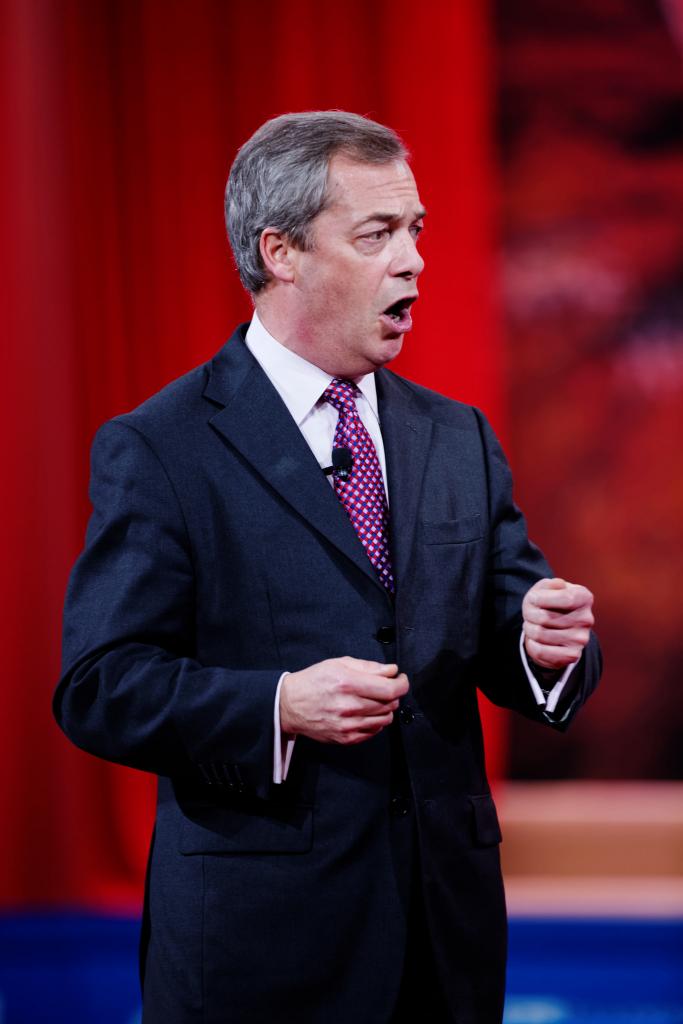
Choosing such topics may interfere with your ability to deliver a speech in a competent and ethical manner. You want to care about your topic, but you also want to be able to approach it in a way that’s going to make people want to listen to you. Most people tune out speakers they perceive to be too ideologically entrenched and write them off as extremists or zealots.
You also want to ensure that your topic is actually persuasive. Draft your thesis statement as an “I believe” statement so your stance on an issue is clear. Also, think of your main points as reasons to support your thesis. Students end up with speeches that aren’t very persuasive in nature if they don’t think of their main points as reasons. Identifying arguments that counter your thesis is also a good exercise to help ensure your topic is persuasive. If you can clearly and easily identify a competing thesis statement and supporting reasons, then your topic and approach are arguable.
Review of Tips for Choosing a Persuasive Speech Topic
- Not current. People should use seat belts.
- Current. People should not text while driving.
- Not controversial. People should recycle.
- Controversial. Recycling should be mandatory by law.
- Not as impactful. Superman is the best superhero.
- Impactful. Colleges and universities should adopt zero-tolerance bullying policies.
- Unclear thesis. Homeschooling is common in the United States.
- Clear, argumentative thesis with stance. Homeschooling does not provide the same benefits of traditional education and should be strictly monitored and limited.
Adapting Persuasive Messages
Competent speakers should consider their audience throughout the speech-making process. Given that persuasive messages seek to directly influence the audience in some way, audience adaptation becomes even more important. If possible, poll your audience to find out their orientation toward your thesis. I read my students’ thesis statements aloud and have the class indicate whether they agree with, disagree with, or are neutral in regards to the proposition. It is unlikely that you will have a homogenous audience, meaning that there will probably be some who agree, some who disagree, and some who are neutral. So you may employ all of the following strategies, in varying degrees, in your persuasive speech.
When you have audience members who already agree with your proposition, you should focus on intensifying their agreement. You can also assume that they have foundational background knowledge of the topic, which means you can take the time to inform them about lesser-known aspects of a topic or cause to further reinforce their agreement. Rather than move these audience members from disagreement to agreement, you can focus on moving them from agreement to action. Remember, calls to action should be as specific as possible to help you capitalize on audience members’ motivation in the moment so they are more likely to follow through on the action.
There are two main reasons audience members may be neutral in regards to your topic: (1) they are uninformed about the topic or (2) they do not think the topic affects them. In this case, you should focus on instilling a concern for the topic. Uninformed audiences may need background information before they can decide if they agree or disagree with your proposition. If the issue is familiar but audience members are neutral because they don’t see how the topic affects them, focus on getting the audience’s attention and demonstrating relevance. Remember that concrete and proxemic supporting materials will help an audience find relevance in a topic. Students who pick narrow or unfamiliar topics will have to work harder to persuade their audience, but neutral audiences often provide the most chance of achieving your speech goal since even a small change may move them into agreement.
When audience members disagree with your proposition, you should focus on changing their minds. To effectively persuade, you must be seen as a credible speaker. When an audience is hostile to your proposition, establishing credibility is even more important, as audience members may be quick to discount or discredit someone who doesn’t appear prepared or doesn’t present well-researched and supported information. Don’t give an audience a chance to write you off before you even get to share your best evidence. When facing a disagreeable audience, the goal should also be small change. You may not be able to switch someone’s position completely, but influencing him or her is still a success. Aside from establishing your credibility, you should also establish common ground with an audience.

Acknowledging areas of disagreement and logically refuting counterarguments in your speech is also a way to approach persuading an audience in disagreement, as it shows that you are open-minded enough to engage with other perspectives.
Determining Your Proposition
The proposition of your speech is the overall direction of the content and how that relates to the speech goal. A persuasive speech will fall primarily into one of three categories: propositions of fact, value, or policy. A speech may have elements of any of the three propositions, but you can usually determine the overall proposition of a speech from the specific purpose and thesis statements.
Propositions of fact focus on beliefs and try to establish that something “is or isn’t.” Propositions of value focus on persuading audience members that something is “good or bad,” “right or wrong,” or “desirable or undesirable.” Propositions of policy advocate that something “should or shouldn’t” be done. Since most persuasive speech topics can be approached as propositions of fact, value, or policy, it is a good idea to start thinking about what kind of proposition you want to make, as it will influence how you go about your research and writing. As you can see in the following example using the topic of global warming, the type of proposition changes the types of supporting materials you would need:
- Proposition of fact. Global warming is caused by increased greenhouse gases related to human activity.
- Proposition of value. America’s disproportionately large amount of pollution relative to other countries is wrong .
To support propositions of fact, you would want to present a logical argument based on objective facts that can then be used to build persuasive arguments. Propositions of value may require you to appeal more to your audience’s emotions and cite expert and lay testimony. Persuasive speeches about policy usually require you to research existing and previous laws or procedures and determine if any relevant legislation or propositions are currently being considered.
“Getting Critical”
Persuasion and Masculinity
The traditional view of rhetoric that started in ancient Greece and still informs much of our views on persuasion today has been critiqued for containing Western and masculine biases. Traditional persuasion has been linked to Western and masculine values of domination, competition, and change, which have been critiqued as coercive and violent (Gearhart, 1979).
Communication scholars proposed an alternative to traditional persuasive rhetoric in the form of invitational rhetoric. Invitational rhetoric differs from a traditional view of persuasive rhetoric that “attempts to win over an opponent, or to advocate the correctness of a single position in a very complex issue” (Bone et al., 2008). Instead, invitational rhetoric proposes a model of reaching consensus through dialogue. The goal is to create a climate in which growth and change can occur but isn’t required for one person to “win” an argument over another. Each person in a communication situation is acknowledged to have a standpoint that is valid but can still be influenced through the offering of alternative perspectives and the invitation to engage with and discuss these standpoints (Ryan & Natalle, 2001). Safety, value, and freedom are three important parts of invitational rhetoric. Safety involves a feeling of security in which audience members and speakers feel like their ideas and contributions will not be denigrated. Value refers to the notion that each person in a communication encounter is worthy of recognition and that people are willing to step outside their own perspectives to better understand others. Last, freedom is present in communication when communicators do not limit the thinking or decisions of others, allowing all participants to speak up (Bone et al., 2008).
Invitational rhetoric doesn’t claim that all persuasive rhetoric is violent. Instead, it acknowledges that some persuasion is violent and that the connection between persuasion and violence is worth exploring. Invitational rhetoric has the potential to contribute to the civility of communication in our society. When we are civil, we are capable of engaging with and appreciating different perspectives while still understanding our own. People aren’t attacked or reviled because their views diverge from ours. Rather than reducing the world to “us against them, black or white, and right or wrong,” invitational rhetoric encourages us to acknowledge human perspectives in all their complexity (Bone et al., 2008).
- What is your reaction to the claim that persuasion includes Western and masculine biases?
- What are some strengths and weaknesses of the proposed alternatives to traditional persuasion?
- In what situations might an invitational approach to persuasion be useful? In what situations might you want to rely on traditional models of persuasion?
Organizing a Persuasive Speech
We have already discussed several patterns for organizing your speech, but some organization strategies are specific to persuasive speaking. Some persuasive speech topics lend themselves to a topical organization pattern, which breaks the larger topic up into logical divisions. Earlier, in the chapter titled “Preparing a Speech”, we discussed recency and primacy, and in this chapter we discussed adapting a persuasive speech based on the audience’s orientation toward the proposition. These concepts can be connected when organizing a persuasive speech topically. Primacy means putting your strongest information first and is based on the idea that audience members put more weight on what they hear first. This strategy can be especially useful when addressing an audience that disagrees with your proposition, as you can try to win them over early. Recency means putting your strongest information last to leave a powerful impression. This can be useful when you are building to a climax in your speech, specifically if you include a call to action.
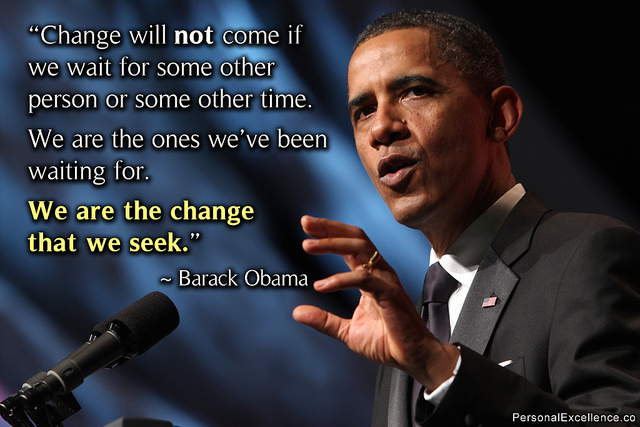
The problem-solution pattern is an organizational pattern that advocates for a particular approach to solve a problem. You would provide evidence to show that a problem exists and then propose a solution with additional evidence or reasoning to justify the course of action. One main point addressing the problem and one main point addressing the solution may be sufficient, but you are not limited to two. You could add a main point between the problem and solution that outlines other solutions that have failed. You can also combine the problem-solution pattern with the cause-effect pattern or expand the speech to fit with Monroe’s Motivated Sequence.
As was mentioned in the chapter titled “Preparing a Speech”, the cause-effect pattern can be used for informative speaking when the relationship between the cause and effect is not contested. The pattern is more fitting for persuasive speeches when the relationship between the cause and effect is controversial or unclear. There are several ways to use causes and effects to structure a speech. You could have a two-point speech that argues from cause to effect or from effect to cause. You could also have more than one cause that lead to the same effect or a single cause that leads to multiple effects. The following are some examples of thesis statements that correspond to various organizational patterns. As you can see, the same general topic area, prison overcrowding, is used for each example. This illustrates the importance of considering your organizational options early in the speech-making process, since the pattern you choose will influence your researching and writing.
Persuasive Speech Thesis Statements by Organizational Pattern
- Problem–failed solution–proposed solution. Prison overcrowding is a serious problem that shouldn’t be solved by building more prisons; instead, we should support alternative rehabilitation for nonviolent offenders.
- Cause-effect-solution. Prisons are overcrowded with nonviolent offenders, which leads to lesser sentences for violent criminals; therefore we need to find alternative rehabilitation for nonviolent offenders.
Monroe’s Motivated Sequence is an organizational pattern designed for persuasive speaking that appeals to audience members’ needs and motivates them to action. If your persuasive speaking goals include a call to action, you may want to consider this organizational pattern. We already learned about the five steps of Monroe’s Motivated Sequence in the chapter titled “Preparing a Speech”, but we will review them here with an example:
- Imagine living a full life, retiring, and slipping into your golden years. As you get older you become more dependent on others and move into an assisted-living facility. Although you think life will be easier, things get worse as you experience abuse and mistreatment from the staff. You report the abuse to a nurse and wait, but nothing happens and the abuse continues. Elder abuse is a common occurrence, and unlike child abuse, there are no laws in our state that mandate complaints of elder abuse be reported or investigated.
- According to the American Psychological Association, one to two million elderly US Americans have been abused by their caretakers. In our state, those in the medical, psychiatric, and social work field are required to report suspicion of child abuse but are not mandated to report suspicions of elder abuse.
- Arguments are formed by making claims that are supported by evidence. The underlying justification that connects the claim and evidence is the warrant. Arguments can have strong or weak warrants, which will make them more or less persuasive.
- Good persuasive speech topics are current, controversial (but not inflammatory), and important to the speaker and society.
- When audience members agree with the proposal, focus on intensifying their agreement and moving them to action.
- When audience members are neutral in regards to the proposition, provide background information to better inform them about the issue and present information that demonstrates the relevance of the topic to the audience.
- When audience members disagree with the proposal, focus on establishing your credibility, build common ground with the audience, and incorporate counterarguments and refute them.
- Propositions of fact focus on establishing that something “is or isn’t” or is “true or false.”
- Propositions of value focus on persuading an audience that something is “good or bad,” “right or wrong,” or “desirable or undesirable.”
- Propositions of policy advocate that something “should or shouldn’t” be done.
- Persuasive speeches can be organized using the following patterns: problem-solution, cause-effect, cause-effect-solution, or Monroe’s Motivated Sequence.
- Getting integrated: Give an example of persuasive messages that you might need to create in each of the following contexts: academic, professional, personal, and civic. Then do the same thing for persuasive messages you may receive.
- To help ensure that your persuasive speech topic is persuasive and not informative, identify the claims, evidence, and warrants you may use in your argument. In addition, write a thesis statement that refutes your topic idea and identify evidence and warrants that could support that counterargument.
- Determine if your speech is primarily a proposition of fact, value, or policy. How can you tell? Identify an organizational pattern that you think will work well for your speech topic, draft one sentence for each of your main points, and arrange them according to the pattern you chose.
Bone, J. E., Cindy L. Griffin, and T. M. Linda Scholz, “Beyond Traditional Conceptualizations of Rhetoric: Invitational Rhetoric and a Move toward Civility,” Western Journal of Communication 72 (2008): 436.
Gearhart, S. M., “The Womanization of Rhetoric,” Women’s Studies International Quarterly 2 (1979): 195–201.
Ryan, K. J., and Elizabeth J. Natalle, “Fusing Horizons: Standpoint Hermenutics and Invitational Rhetoric,” Rhetoric Society Quarterly 31 (2001): 69–90.
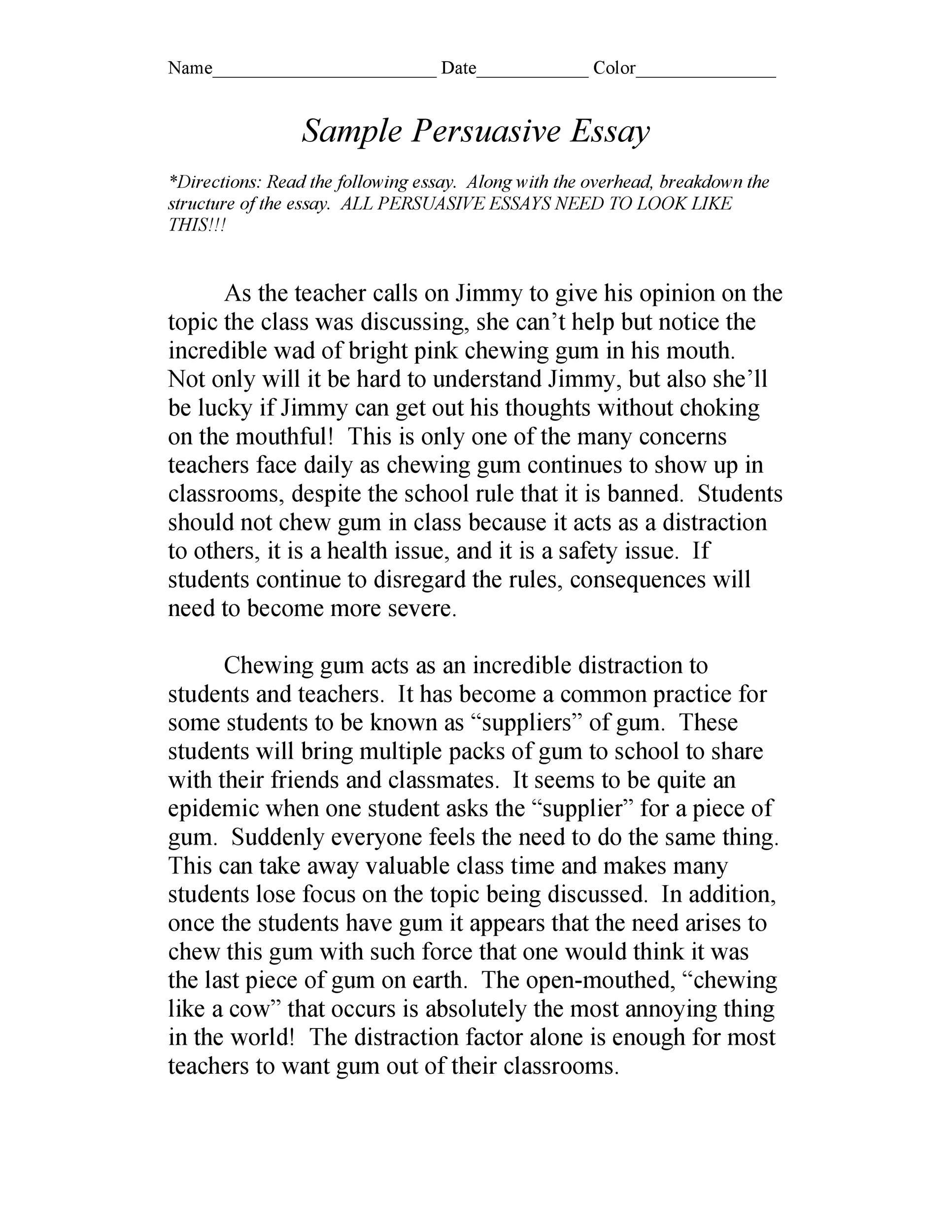
Garcia Mera, Michell Patricia, "Effects of Persuasive Communication on Intention to Save Energy: Punishing and Rewarding Messages" (2015). Thesis. Rochester Institute of Technology. Accessed from This Thesis is brought to you for free and open access by the RIT Libraries. For more information, please contact [email protected] . RIT
Abstract. Two of the goals of human communication are: to be understood and to be believed. In persuasive communication, both of these acts are fulfilled. Pragmatists have investigated the first ...
a central feature of almost every aspect of human communication. Through-. out history, persuasive communication has helped launch revolutions, win. elections, and establish famous brands [ 1 ...
Foundation of Persuasion. Persuasive speaking seeks to influence the beliefs, attitudes, values, or behaviors of audience members. In order to persuade, a speaker has to construct arguments that appeal to audience members. Arguments form around three components: claim, evidence, and warrant. The claim is the statement that will be supported by ...
For communication to be persuasive, it must be goal directed, and it must assert and support a position on some matter of debate that is open to multiple interpretations or perspectives. Persuasion requires a change of mind (and/or heart) toward a certain issue or choice, and it therefore requires at least some receivers that are of a different ...
We will learn about nine persuasive strategies that you can use to more effectively influence audience members' beliefs, attitudes, and values. They are ethos, logos, pathos, positive motivation, negative motivation, cognitive dissonance, appeal to safety needs, appeal to social needs, and appeal to self-esteem needs.
makes persuasive communication effective. Simons explored the psychological aspect of persuasion by looking at influences on attitudes. He stated that attitudes stem not only from beliefs, but also from values. Attitudes serve as knowledge structures called schemas. Schemas act as a filter for new information. He used the term "mental . 14 ...
17.5 Theories of Persuasive Communication. There are many theories of persuasion in communication studies. Three of the main theories that are often associated with persuasion are the social judgment theory, cognitive dissonance theory, and the elaboration likelihood model.
Persuasive communication is a stylistic procedure that can be classiied as a function of argument features [1]. A comprehensive survey of the liter-ature highlights three key argument features ...
The overall effect for the metaphor-literal comparison for attitude change was r = .07, which supported the claim that metaphors enhance persuasion. The effect rose to r = .42 under optimal conditions, when a single, nonextended metaphor was novel, had a familiar target, and was used early in a message. Metaphor appeared to exert a small effect ...
as the drivers of persuasive communication. We de ne a persuasive communication to be a message provided by one agent (a sender) with at least a potential interest in changing the behavior of another agent (a receiver). We exclude situations where an agent attempts to manipulate another through means other than messages|providing monetary ...
Your thesis statement is the overarching claim for your speech, but you will make other claims within the speech to support the larger thesis (Nordquist, 2020). ... Persuasive communication (2nd ed.). Guilford Press. Sample Persuasive Speech. Bayliss, P. (2003). Learning behind bars: Time to liberate prison education.
Abstract. Motivation and persuasion are at the heart of most organizational communication. In fact, many business communication theories are linked to rhetoric, a key theory in this category. Simply stated, motivational and persuasive messages guide how we get things done in organizations. Just as important, these same messages impact the well ...
A model is presented that reflects multi-sided communication and balances the imperatives of communication, persuasion and ethics (CPE model). This model provides an evaluative tool for qualitatively assessing proposed or completed communication campaigns. This thesis argues that if practitioners were to apply this model, the public would feel ...
Persuasive communication is more complex than ever before. Since 2003 (a year before Facebook was founded) when Perloff argued these reasons, we have seen an explosion in persuasive messages with the advent and growth of social media. The social media phenomenon has supercharged the reasons outlined by Perloff. In essence, the nature of ...
Written Communication, 5, 184-202. Google Scholar. Elbow, P. (1991). Reflections on academic discourse: How it relates to freshmen and colleagues. ... Metadiscourse in persuasive essays by elementary students in South Kor... Go to citation Crossref Google Scholar. Metadiscourse: What is it and where is it going? ...
writing, critical thinking, and persuasive argumentation, devoted to teaching students a higher-level understanding of persuasive communication methods through the reading and the interpretation of a wide variety of genres and texts and through the development of their own research-supported arguments. The nature of these texts reflects the LSC
In the broadest sense, persuasion is the communicative process through which a message prompts a change in an individual or group's beliefs, attitudes, or behaviors. Synthesizing the various definitions of persuasion offered by communication scholars, Perloff (2016) said that persuasion is a "symbolic process in which communicators try to ...
Now on to those 30 persuasive thesis statement examples I promised! 1. ... Though many elementary schools no longer teach cursive handwriting, it is still an essential form of communication that should be taught in schools. 10. Should childhood vaccinations be mandatory? Childhood vaccinations should be mandatory, as they are safe, reduce the ...
Persuasive communication has become more subtle and devious. Persuasive communication is more complex than ever before (Perloff, 2003). In essence, the nature of persuasion has changed over the last fifty years as a result of the influx of various types of technology. People are bombarded by persuasive messages in today's world, so thinking ...
Here are three examples of persuasive thesis statements to enhance your understanding of impactful writing. These instances illustrate how to craft strong and compelling thesis statements that anchor persuasive essays. ... Effective communication is critical for success in the workplace, as it promotes collaboration, builds trust, and improves ...
The curriculum of the Master's in Persuasive Communication comprises one year of full-time study. You will study a variety of marketing and health communication theories, and learn how to apply these theories to challenging problems of health behaviour, advertising, and branding. You will learn how communication can be used strategically to inform and influence people, or how people can be ...

IMAGES
COMMENTS
It accepts stylish casual wear including clean, neat jeans and shorts for lunch. For dinner, guests are expected to step it up by leaving the denim at home and wearing sports coats. Different areas of a club may also have different dress rules. Bars and outdoor decks tend to more lax and allow casual clothing.
For a lunch event, you'll most likely encounter a more casual dress code. It's best to familiarize yourself with the club's specific guidelines and adhere to them. Common Yacht Club Dress Codes. At most yacht clubs, there are a few general rules to follow when dressing for lunch: Men: Shirts: Opt for collared shirts like a classic polo or ...
Smart casual dress is just what it sounds like--relaxed and casual, but with a nod toward style and looking good, not sloppy and overly relaxed. A member of the smart crowd is elegant, sophisticated and fashionable...in essence, smart casual means that you dress professionally, but you are relaxed. It is a middle ground between strict business ...
Dress Code. "Yacht Club Casual" is the watchword when it comes to appropriate dress at the Yacht Club. Gentlemen wear collared shirts or turtlenecks with bermuda shorts (no Cargo Shorts) or slacks. Jackets are not required except for special events. For the ladies, it's casual, smart tops with pants, shorts or skirts, or dresses.
Yacht Club Wear - Dos. Hopefully, your invitation indicates the dress code. But if it doesn't, there are two general rules of thumb. If the party is during the day, then select attire in the "country club casual" category. If the party is in the evening, opt for traditional cocktail party wear. Country Club Casual for Men
Our dress code is a balance between respecting long standing traditions of the Eastern Yacht Club while complementing today's more casual and active lifestyle. We hope the following guidelines will be helpful in making your visit enjoyable and comfortable for you and your guests. ... Yacht Club Casual (button down dress shirt and slacks ...
Detroit Yacht Club. One Riverbank Road Belle Isle Detroit, MI 48207. P: (313) 824-1200. Member Login. Contact Us. Employment. Site by Clubessential.
If the yacht party has a more relaxed dress code, you can go for a casual chic look that is both stylish and comfortable. For men, a pair of well-fitted chinos or linen trousers paired with a button-down shirt is a great choice. Complete the outfit with loafers or boat shoes for a nautical touch. You can also add a lightweight blazer for a more ...
FORMAL - Men: Tuxedo or Yacht Club Formal. Women: Formal Attire or Yacht Club Formal. ... CASUAL - Jacket and tie are optional. Jeans permitted. GENERAL DRESS CODE. 1. Shirts and shoes must be worn in the club at all times. 2. 2ND FLOOR: No bathing suits, tank tops (men), short shorts or cut off shorts are permitted on the 2nd floor except ...
Our Dress Code is an important tradition at Sarasota Yacht Club and is designed to complement today's more casual lifestyles while still respecting the longstanding traditions in excellence for which Sarasota Yacht Club is noted. It applies to all Members and guests over twelve (12) years old. Dress is normally casual for most daytime functions.
DRESS CODE Prior to 6:00 PM, Casual attire (as defined below) is acceptable throughout the Clubhouse and on the Porch, seven days a week. After 6:00 PM, Business Casual attire is required throughout the Clubhouse and on the Porch, seven days a week. ... Corinthian Yacht Club 1 Nahant St. P.O. Box 401 Marblehead, MA 01945 (781) 631-0005 [email ...
The required attire for gentlemen is best described as "Club Casual" (i.e.: collared shirts, Tommy Bahama style shirts, slacks, nice Bermuda length dress shorts, and neat denim.) Tennis and yachting attire are permitted. Jackets are optional. Similar attire is requested for ladies and children. Nice flip flops are permitted.
Lakewood Yacht Club strives to provide a casual family environment while still creating an atmosphere of respect, courtesy, and decorum. The LYC Dress Code is as follows: Required Dress for Sunday Brunch and in the Dining Room during Lunch (Wednesday - Friday) and Dinner after 5:30 PM (all evenings) MEN Dress or Sports Shirts;
Dress Code The dress code for the interior of the clubhouse normally is casual with the exception of specific events where a jacket or tuxedo may be required. For ladies, good taste should prevail based on the appropriate dress for gentlemen. Members are invited to "dress up" for any personal special occasions.
Yacht Club uniform consists of navy blazer with Club crest on the breast pocket and the other approved insignia on the sleeve, white trousers, white skirt, navy dress, white shirt, black or navy blue Club tie, white shoes and white socks. Smart Casual Attire that combines well-fitting, polished wear with elements of casual attire like blouses ...
Posted March 29, 2023. Sailing out of the US for Caribbean sailings dress in the YC Restaurant is largely country club casual. I'm avoiding the term 'resort casual' as shorts for dinner are not acceptable (sorry, you may see them, but they are not 'suggested attire for dinner'). You will however see folks who 'dress' for dinner.
When it comes to dressing for a yacht party, it's important to consider whether or not there is a specific dress code. Some yacht parties may have a formal dress code, while others may be more casual. If there is a dress code, it's important to adhere to it to show respect for the host and other guests. If there is no dress code specified ...
Consider dress pants and a button down shirt or a blazer. A sport coat and tie, maybe with a matching jacket, is also very common for parties on yachts. A more formal occasion, a wedding for instance, will probably clue you in as to what would be expected in terms of dress.
Women. Swimsuit. Choose a swimsuit or a bikini to wear under your clothes. Make sure to pick a color that suits your attire. Outfit. A flowy dress, short skirt, airy beach pants, or a short over your swimsuit will be perfect for this kind of party. You can also match them with a summary layer or a loose blouse. Footwear.
Airport codes. IATA airport code: VKO ICAO airport code: UUWW. Contact Contact Address. Moscow Vnukovo International Airport 1st Reisovaya Str 12 119027 Moscow Russian Federation. Telephone, fax, email. Telephone: +7(0)495 937 5555 Fax: +7(0)495 436 2503 Email: via contact form. Airport codes.
California Yacht Club was established in 1922 and boated its' first competitive rowing team back in the 1930's. In 1977, after a long hiatus, Stan Mullin, Ken Jacobs and Charles Hathaway reactivated rowing at the Club. CYC rowers now number about 60, and represent all abilities, ages and motivations.... Adult Rowing - California Yacht Club CYC is a great place for adults of all ages and skills ...
Salcombe Yawl Owners' Association. Town regatta entry's and results. Results for the 7th . We have 2 firsts but if you apply ISAF App A 8.2 (highest last results then 154 takes
40' MTI. ( (SOLD)) Luxury 2009 40 MTI with the Tilt Trailer.$399K This boat is a one-owner powerboat used only in freshwater. Powered with two Mercury 700s stage 3 motors with original 150 HR this boat is nice. "Don't miss out" For viewing please make an appointment with us @ Rockstarboats.com (928)208-8460..... These powerboats use the following propulsion options: outboard engine.